Energy & the Environment News
Fueling a winner: Biosystems engineering researcher developing solutions with bioenergy recognized by SEC
Sushil Adhikari had no intention of having a career in academia, let alone researching solutions to some of life’s challenges.
“I just wanted to be an engineer and not study anymore,” he professed.
But plans change.
Nearly 25 years after earning a bachelor’s degree in mechanical engineering from Tribhuvan University in his native Nepal, Adhikari is an Alumni Professor and researcher in the Department of Biosystems Engineering at Auburn University.
He’s also director of the Center for Bioenergy and Bioproducts and, since Feb. 17, the interim associate dean for research for Auburn’s College of Agriculture and interim associate director of the Alabama Agricultural Experiment Station (AAES).
The Southeastern Conference (SEC), on Feb. 24, named Adhikari as Auburn’s honoree for the SEC Faculty Achievement Award.
The SEC annually recognizes one faculty member from each of its member institutions who has demonstrated excellence in teaching, research and scholarship. Recipients are chosen based on their contributions to their field, commitment to students and overall impact on their university.
The conference will proclaim one of the 14 awardees as the SEC Professor of the Year, the highest faculty honor given by the conference, in March.
In good company
Adhikari is understandably proud of the recognition, particularly because this puts him in a class of distinguished colleagues from across campus.
“I never thought that I was going to win this one because of the people who have won this award before,” he admitted.
Auburn's first winner in 2012 was President Christopher B. Roberts, then a professor and chair of the Department of Chemical Engineering, about to be dean of the Samuel Ginn College of Engineering.
Biosystems engineering is housed in agriculture but is a part of engineering. The faculty often intersects. When Adhikari came to Auburn in 2008, his department head was Professor Steve Taylor, who started agriculture’s Center for Bioenergy and Bioproducts.
Taylor would move on to serve as engineering’s associate dean for research and eventually step in as interim dean when Roberts became the university president. Taylor then became the senior vice president for research and economic development, overseeing research endeavors across campus.
Adhikari talks about these colleagues — working with them and filling Taylor’s shoes as center director — as if they are formidable and larger than life. But they share a common thread: impact.
Every role has been an opportunity for each of them to broaden their impact on the lives of students and faculty at Auburn and, with innovative research, the world.
Adhikari stepped into this latest interim gig — Professor Art Appel stepped away from it to be interim dean and interim director of AAES — is simply another chance for Adhikari to make an impact.
Making a difference
It’s something he has been doing since first coming to Auburn.
“Being on faculty gives you the flexibility to focus on your interests. I get to do research and work with students, who grow so much by the time they graduate,” Adhikari said. “For me, it’s about seeing the impact I can have on them.”
The award and his new responsibilities “give me motivation to do more,” he added.
When he isn’t teaching classes, Adhikari is running the Center for Bioenergy and Bioproducts where he mentors student researchers and conducts his own work. He will teach one less class next semester to accommodate his interim responsibilities.
Adhikari doesn’t look at his new role as a burden. It’s a chance “to make a bigger impact.”
“I have worked with a number of faculty, a lot of younger faculty members and students in my role as center director, and I see that I have made some impact, but now the challenge to myself is, can I make a bigger impact at the college level?” he asked.
“It can be difficult to make big changes as an interim, but sometimes it is easier to make changes when you just plant the seed.”
Leave it to a faculty member in agriculture to make such a reference, but Adhikari did it because it’s easy to understand how an idea can grow and flourish, like a seed, with the right tools and support.
He considers students to be like young saplings, who grow into mighty trees with nourishment from Adhikari. This type of influence — as a teacher, researcher, director and interim any job — is what has kept Adhikari on the Plains all this time.
“Maybe I’m just in the right place at the right time, or maybe it’s just my attitude, but I feel fortunate to be here,” he said. “I have the support of colleagues in the department and around campus. I don't see a need to go anywhere else.”
Adhikari has no desire to frame his degrees and hang them on his office walls. Instead, the stark white walls are covered with plaques and certificates he earned over the years. Many denote his collaborative work.
In 2012, for instance, Adhikari, along with Taylor, Roberts, Fasina and others received the President’s Outstanding Collaborative Units Award during the annual Faculty Awards.
The nature of biosystems engineering, what Adhikari calls a problem-focused discipline, lends itself to multidisciplinary cooperation. But what is biosystems engineering?
Addressing challenges
It can be confusing for two colleges to share biosystems engineering, but Adhikari said it makes sense as “we are engineers, trying to solve the problems related to agriculture.”
A sign hangs from the front of the Corley Building, proclaiming the department is developing solutions to life’s essential challenges: “Food, Water, Energy, Environment and Health.”
If that doesn’t clarify the type of work being done inside, Adhikari says, “we try to say that we solve these big problems related to water, food and fuel.”
While his office neighbor, Associate Professor David Blersch, is looking at algae growth in high-nutrient wastewater, Adhikari is focused on bioenergy, deriving energy like electricity and biofuel from organic materials (biomass), such as plants and wood.
Adhikari, in collaboration with agriculture faculty, is currently using biochar for agriculture uses for improving soil and water health, reducing greenhouse gas emissions and even killing cockroaches. Biochar — the result of heating biomass like wood, crop residue and manure — is black (like charcoal), extremely light (like Styrofoam) and resembles finely shredded mulch.
Even in their interim roles, Adhikari and Appel can discuss their common work, as Appel is evaluating the efficacy of biochar for killing cockroaches.
With such work happening in the center, researchers like Adhikari and his graduate students seek campus experts in water, soil and horticulture, to name a few, for assistance.
“You need a multidisciplinary approach to solving these problems because these problems are complex,” said Adhikari.
When it comes to biochar, Adhikari believes researchers, like himself, are finding answers to multiple issues. For instance, biochar holds carbon in the soil for hundreds to thousands of years, preventing its release into the atmosphere.
“At the same time, you can improve soil properties with it,” he said. “Capture some of the nutrients from runoff, and you’re looking at other benefits to the ecosystem.”
It boils down to engineering the biochar properties differently to serve unique needs.
Biochar designed by Adhikari's team to help farmers minimize the effects of drought will be engineered differently than the team creating biochar to capture excess phosphorus in the soil and slowly release it to benefit plant growth.
Talk about impact.
Past Auburn SEC Faculty Achievement Award winners
2024, Skip Bartol, College of Veterinary Medicine
2023, Shiwen Mao, Samuel Ginn College of Engineering
2022, Karen McNeal, College of Sciences and Mathematics
2021, Mona El-Sheikh, College of Human Sciences
2020, Doug Martin, College of Veterinary Medicine
2019, Rex Dunham, College of Agriculture
2018, David Ketchen, Raymond J. Harbert College of Business
2017, James Barth, Raymond J. Harbert College of Business
2016, Hanqin Tian, College of Forestry, Wildlife and Environment
2015, Bruce Tatarchuk, Samuel Ginn College of Engineering
2014, Geoffrey Hill, College of Sciences and Mathematics
2013, Pradeep Lall, Samuel Ginn College of Engineering
2012, Christopher B. Roberts, Samuel Ginn College of Engineering

Sushil Adhikari holds paper-like biochar. Even in this form, biochar can be used to enhance soil and plant health.
Categories: Energy & the Environment, Engineering, Agriculture
Auburn University Gulf Coast Engineering Research Station in Orange Beach receives final Board of Trustees approval
Auburn University’s Board of Trustees gave its final approval Friday for the construction of a Gulf Coast Engineering Research Station in Orange Beach.
The two-story, 21,000-square-foot facility — to be located at 4775 Walker Avenue — will provide direct access to the Gulf of Mexico and consist of research laboratories, offices, large meeting spaces and outdoor gathering spaces on both stories of the south elevation overlooking Terry Cove. The station will provide a dedicated location for researching coastal environments and communities of the Gulf Coast while also providing opportunities for collaboration with other Marine Environmental Sciences Consortium institutions.
“We are thankful to the board for its continued support of this project that will benefit Auburn University, the state’s coastal communities and those who love and visit one of the most beautiful areas of this state,” said Mario Eden, dean of Auburn’s Samuel Ginn College of Engineering. “The opportunity for collaboration with our friends and partners in the city of Orange Beach, the University of South Alabama and other regional institutions and industries is exciting, and this gives us a home base to address some of the most pressing coastal issues related to infrastructure resiliency and environmental protection, restoration, sustainability and conservation.”
The estimated total project is $14 million, and it is being financed by grant funds from the RESTORE Council in cooperation with the State of Alabama Department of Conservation and Natural Resources. The city of Orange Beach provided the land for the project.
The Board of Trustees initially approved the facility at its September 2022 meeting. The firm ArchitectureWorks was approved in November of that year to serve as the architect on the project.
Orange Beach Mayor Tony Kennon said the city is proud to work with Auburn and other universities to create long-term solutions for the state’s Gulf Coast, and beyond.
“As I’ve said from the onset of this collaborative project, the city of Orange Beach is excited about the opportunity to partner with Auburn University and work with universities all over the country for the betterment and preservation of our vital coastal resources,” Kennon said.
The gulf station will focus on three broad coastal research areas: water quality and quantity protection and restoration; protection, restoration and conservation of habitat and living resources; and enhancing coastal community sustainability and resilience. In addition, it will also provide residents and visitors with a better understanding and appreciation of the natural, historical, cultural and environmental resources of the region through community outreach and continuing education opportunities.
Effects of natural and man-made disasters on the primary industries in the region have resulted in economic adjustments and dislocations primarily through reductions in tourism and the simultaneous effects on tourism-related industries; damage to public and private infrastructure; negative impacts to agriculture and fishing-related industries; and damage to the natural environment and natural resources.
Through the creation of this facility, Auburn University and its partners will engage in fundamental and applied research of critical importance to the coastal environment and communities of Alabama and the larger northern Gulf Coast region. The station will be dedicated to addressing all the goals and objectives set forth in the 2016 Gulf Coast Ecosystem Restoration Council Comprehensive Plan.
Media Contact: Austin Phillips, austinp@auburn.edu, 334-844-2444
Auburn University’s Board of Trustees gave its final approval Friday for the construction of a Gulf Coast Engineering Research Station in Orange Beach.
The two-story, 21,000-square-foot facility — to be located at 4775 Walker Avenue — will provide direct access to the Gulf of Mexico and consist of research laboratories, offices, large meeting spaces and outdoor gathering spaces on both stories of the south elevation overlooking Terry Cove. The station will provide a dedicated location for researching coastal environments and communities of the Gulf Coast while also providing opportunities for collaboration with other Marine Environmental Sciences Consortium institutions.
“We are thankful to the board for its continued support of this project that will benefit Auburn University, the state’s coastal communities and those who love and visit one of the most beautiful areas of this state,” said Mario Eden, dean of Auburn’s Samuel Ginn College of Engineering. “The opportunity for collaboration with our friends and partners in the city of Orange Beach, the University of South Alabama and other regional institutions and industries is exciting, and this gives us a home base to address some of the most pressing coastal issues related to infrastructure resiliency and environmental protection, restoration, sustainability and conservation.”
The estimated total project is $14 million, and it is being financed by grant funds from the RESTORE Council in cooperation with the State of Alabama Department of Conservation and Natural Resources. The city of Orange Beach provided the land for the project.
The Board of Trustees initially approved the facility at its September 2022 meeting. The firm ArchitectureWorks was approved in November of that year to serve as the architect on the project.
Orange Beach Mayor Tony Kennon said the city is proud to work with Auburn and other universities to create long-term solutions for the state’s Gulf Coast, and beyond.
“As I’ve said from the onset of this collaborative project, the city of Orange Beach is excited about the opportunity to partner with Auburn University and work with universities all over the country for the betterment and preservation of our vital coastal resources,” Kennon said.
The gulf station will focus on three broad coastal research areas: water quality and quantity protection and restoration; protection, restoration and conservation of habitat and living resources; and enhancing coastal community sustainability and resilience. In addition, it will also provide residents and visitors with a better understanding and appreciation of the natural, historical, cultural and environmental resources of the region through community outreach and continuing education opportunities.
Effects of natural and man-made disasters on the primary industries in the region have resulted in economic adjustments and dislocations primarily through reductions in tourism and the simultaneous effects on tourism-related industries; damage to public and private infrastructure; negative impacts to agriculture and fishing-related industries; and damage to the natural environment and natural resources.
Through the creation of this facility, Auburn University and its partners will engage in fundamental and applied research of critical importance to the coastal environment and communities of Alabama and the larger northern Gulf Coast region. The station will be dedicated to addressing all the goals and objectives set forth in the 2016 Gulf Coast Ecosystem Restoration Council Comprehensive Plan.
Media Contact: Austin Phillips, austinp@auburn.edu, 334-844-2444

The two-story, 21,000-square-foot facility — to be located at 4775 Walker Avenue — will provide direct access to the Gulf of Mexico and consist of research laboratories, offices, large meeting spaces and outdoor gathering spaces on both stories of the south elevation overlooking Terry Cove.
Categories: Energy & the Environment, Gulf of Mexico Research & Restoration, Engineering
CFWE researchers awarded USDA NIFA grant to advance sustainable agroforestry
A team of faculty at the Auburn University College of Forestry, Wildlife and Environment (CFWE) is pursuing more sustainable forms of agroforestry thanks to a new grant awarded by the USDA National Institute of Food and Agriculture (NIFA). Their research will focus on the genetics of trees and their domestication for wood pulp production — ultimately maximizing economic gains and reducing environmental impacts.
Assistant Professor of Forest Genomics Hao Chen and Assistant Professor of Forest Ecophysiology Chen Ding are focusing their research on greenhouse-grown varieties of poplar trees, a species that has the potential to revolutionize pulp mills by increasing their yield of sustainable fibers up to 40% while reducing carbon emissions.
Fueled by NIFA as part of the Critical Agriculture Research and Extension (CARE) program, the team’s poplar field trials will use the cutting-edge genome-editing technology system, CRISPR, to create and study trees containing lower amounts of lignin. Every tree contains this material which serves as the adhesive between tree fibers, providing rigidity and making wood pulping more of a challenge.
Pulp is a biodegradable, renewable resource made from trees. When trees such as poplars are harvested for pulp production, they undergo a refining process called pulping or delignification that expends energy, emits gases and can prove costly. Pulping is reliant on successfully removing specific amounts of lignin to create forest products such as paper, tissues and wood pellets.
Improving the delignification process will allow increased short-rotation harvests, creating more consistent revenue streams and reducing costs for stakeholders, while also keeping the United States pulp and paper industry competitive.
Following the COVID-19 pandemic, the costs of necessary wood pulping chemicals and energy increased for pulp and paper production mills. This financial stress makes Chen and Ding’s research increasingly important to the industry. Chen, who serves as principal investigator (PI) of this project, says that their work has the potential to revolutionize pulpwood production.
“The research aims to address the challenges of developing and evaluating genetically modified poplar varieties with modified lignin properties that can thrive in the South’s environmental conditions while enhancing pulping efficiency,” Chen said. “The project seeks to determine whether these CRISPR-edited poplar varieties can withstand the stresses encountered outside of controlled greenhouse environments, maintain improved pulp yield performance through cycles of growth and dormancy and offer increased productivity, profitability and sustainability within agroforestry systems.”
Co-PI Jack Wang, director of the Forestry Biotech Group (FBG) at North Carolina State University, is contributing his extensive forest biotechnology experience to this effort. The FBG utilizes AI-based data modeling platforms, wood property analysis, micro kraft pulping and life cycle carbon footprint analysis in its research. The test tree varieties used by Chen and Ding for this study were generated in Wang’s lab.
“Our project involves a two-year field trial of these poplar varieties to conduct biannual assessments of resilience, growth and wood properties of the poplar varieties,” said Chen.
Additionally, Chen says the results can be swiftly adopted by agroforestry stakeholders in the southern U.S. The goal of the study is to empower landowners and mills to embrace a climate-smart agroforestry approach — increasing economic gains while advancing environmental sustainability.
The project will not stop in the lab. By sharing the study results through specialized workshops and online forums, the team’s outreach will empower forest landowners, pulp mill managers and other stakeholders with practical guidance on agroforestry practices. The delignification process using the new poplar tree varieties is also expected to reduce greenhouse gases, chemical usage and energy consumption.
This grant is one of several research endeavors currently being conducted by CFWE faculty. For more information about CFWE research, visit the research webpage.

Chen Ding (left) and Hao Chen observe genetically modified poplar varieties.
Categories: Energy & the Environment
Eight innovative projects receive 2024 internal awards
Eight innovative projects have been named recipients of Auburn University’s internal research and creative works funding awards programs for 2024.
The Research Support Program (RSP) and the Creative Work and Social Impact Scholarship Funding Program (CWSIS) were established by the Office of the Senior Vice President for Research and Economic Development. Both programs provide a competitive internal funding source to support faculty members’ research and creative scholarship as they refine their projects before competing for larger, external awards.
“The CWSIS and RSP provide applicants across all disciplines with the opportunity to participate in a competitive funding program,” said Christine Cline, associate director of Proposal Services and Faculty Support, the unit administering the programs. “The programs support a wide variety of research initiatives from creative work through STEM-focused projects. We appreciate the opportunity to engage with the participants from the initiation of the application cycle through the successful completion of their projects.”
The RSP is intended to foster the development and growth of innovative and transformational research activities. It builds on faculty expertise, stimulates interdisciplinary collaborations and strengthens seed research activities. It is a strategically focused Auburn investment that promotes promising and impactful new lines of research as well as the growth of collaborative and interdisciplinary teams to build the foundations of science, to overcome scientific and societal challenges and to promote and enhance the quality of life and well-being of individuals, groups and communities.
The CWSIS funding program fosters innovation and discovery and builds faculty reputation and competitiveness. Disciplines associated with CWSIS include design and the arts, humanities and applicable areas within business, education, social sciences and health and well-being.
This year’s recipients are:
Research Support Program
James Gillespie, College of Veterinary Medicine, “Development of Bacteriophage Nano/Microparticles for Nasal Delivery of Species-specific Immunocontraceptives”
Co-Investigator: Constantinos Kyriakis, College of Veterinary Medicine
Suhasini Gururaja, Samuel Ginn College of Engineering, “Integrated Manufacturing for ‘Tuned’ Microstructures for Targeted Enhanced Lightweight Structural Performance and Autonomous Damage Sensing (IMADS)”
Co-Investigator: Virginia Davis, Samuel Ginn College of Engineering
Junshan Lin, College of Sciences & Mathematics, “Computation-assisted Optical Imaging towards Sub-Nanometer Super-resolution”
Co-Investigator: Siyuan Dai, Samuel Ginn College of Engineering
Binita Mahato, College of Liberal Arts, “Urban Resilience and Social Vulnerability: The Past, Present, and Future of Climate Change Impacts in Mobile, Alabama”
Co-Investigators: Chandana Mitra, College of Science and Mathematics; Dr. Jake Nelson, College of Science and Mathematics; Rebecca Retzlaff, College of Liberal Arts
Yaoqi Zhang, College of Forestry, Wildlife and Environment, “Tree Shade on Summertime Electricity Consumption”
Co-Investigator: Wenying Li, College of Agriculture
Creative Work and Social Impact Scholarship Funding Program
Georges Fares, College of Human Sciences, “Bridging Eras: Merging Technology and Tradition in the Study of Bernini’s Works for the Purpose of Cultural Engagement”
Co-Investigator: Anna Ruth Gatlin, College of Human Sciences
Allie McCreary, College of Forestry, Wildlife and Environment, “Climate Change Resiliency Along the Gulf Coast: How Tourism Providers Perceive Impacts & Adaptation Strategies”
Xavier Vendrell, College of Architecture, Design & Construction, “Site, Construction, Users, My Favorite Movies, and Other Circumstances: Xavier Vendrell, Architect”
More information about these and other funding support programs supported by the Auburn Office of the Senior Vice President for Research and Economic Development can be found by clicking here.

Categories: Energy & the Environment, Engineering, Life Sciences, Agriculture, Liberal Arts, OSVPRED, Architecture, Design & Construction
Prolific patent portfolio earns mechanical engineering professor NAI Fellow status
Auburn University has yet another National Academy of Inventors (NAI) Fellow.
Mehmet Arik, associate professor of mechanical engineering, was recently tapped for the professional honor (widely recognized as the most prestigious awarded to academic inventors) on the strength of more than 120 issued patents with a broad range of applications in medical systems, energy systems, aviation systems and photonics technologies.
Already an American Society of Mechanical Engineers (ASME) Fellow, Arik says his latest distinction means even more.
"Being an NAI Fellow is even more of a joy for me because it shows that collaborative work always pays off," Arik said. "I developed my patents with many colleagues from academia and industry and I truly enjoy collaborating with researchers and engineers across many fields."
Arik came to Auburn in 2022 after 11 years as a faculty researcher at Özyeğin University in Istanbul, Turkey. He began his professional career at General Electric (GE) Global Research Center in 2000 as a senior engineer working on research and technology development programs related to energy, aviation, medical, industrial systems and lighting industries. The electronics thermal management group he organized conducted award-winning research for both GE and government organizations such as the Department of Energy, Defense Advanced Research Projects Agency and the National Institute of Standards and Technology. While at GE, Arik created a suite of respected intellectual property built on innovations benefitting multiple industries while building an exceptionally robust portfolio of scholarly contributions to more than 75.
It was his patent portfolio, however, that earned him nominations from multiple NAI Fellows.
"Many of my patents went into practice in industry in many different product segments, which I'm very proud of," Arik said. "Those inventions already have social and economic impact as well as environmental benefits. While publishing extensively can be very satisfying, patents have a different value in science and technology."
A patent in which Arik takes particular pride is a novel cooling approach that has been instrumental in many modern LED lighting applications. But the most meaningful may be his system for measuring junction temperature of photonics devices.
"That was very special for me because I developed it with my undergraduate and graduate students while I was in Turkey," Arik said. "It was so hard to get a USPTO (United States Patent and Trademark Office) patent from Turkey but young minds helped make it happen."
The same can be said for his latest patent disclosure, which was developed last year with one of his current graduate students.
"Being named an NAI Fellow is yet another testament to the impact of Dr. Arik's work," said Mario Eden, dean of engineering. "But the collaborative spirit that drives his research is, I think, as impressive as the innovations that have earned him this distinction."
Arik believes the prestige stemming from the NAI's recognition will enable even more opportunities for invention and development, both individually and collaboratively.
"I want to be an ambassador for innovation and entrepreneurship within the communities I belong to," he said. "Auburn is, of course, top of that list. I want to help young students, fellow faculty and researchers to develop intellectual property that truly makes an impact."
Arik is Auburn’s eighth NAI fellow. Previous honorees include J. David Irwin, Joseph W. Kloepper, John Weete, S.D. “Dave” Worley, Bruce Tatarchuk, Vitaly Vodyanoy and Fa Foster Dai. Dai, Irwin and Tatarchuck are all engineering faculty.
Media Contact: Jeremy Henderson, jdh0123@auburn.edu, 334-844-3591

Mehmet Arik
Categories: Energy & the Environment, Health Sciences, Transportation, Engineering, Economic Development
Passionate mentor is change agent in College of Forestry, Wildlife and Environment
An associate professor in Auburn University’s College of Forestry, Wildlife and Environment (CFWE), Soledad Peresin’s expertise lies in biopolymers and analytical chemistry; nanocomposites; nanotechnology and materials; and polymers and surface science.
But when you meet Peresin, these words bubble to the surface: an impassioned mentor devoted to creating equal opportunities for a diverse and inclusive population of students.
A first-generation college student from Argentina, Peresin said, “I am the only one in my family who ventured to graduate school, and to study abroad. It was a big learning curve, but I encourage everyone to try something new. You are capable of a lot more than you think.”
It’s this belief in others’ success that drives Peresin to be an agent of change — whether leading women in science, advancing DEI (Diversity, Equity and Inclusion) initiatives, fostering innovative solutions or mentoring a new generation of scientists.
NEXT WISE LEADER
Peresin recently was chosen as the next Women in Science and Engineering (WISE) Institute chair; WISE resides within Auburn’s Office of Inclusion and Diversity. Peresin said the mission of WISE is “to enable and sustain equitable quality of life and experience for women in the university.”
WISE advocates for and enables opportunities for both STEM (Science, Technology, Engineering and Mathematics) and non-STEM female students, faculty and staff on campus. Mentoring is especially important.
“We want to create a network in which women can talk to other women and peers who may have gone through similar challenges in the university environment, so they can all thrive,” Peresin said.
For example, WISE presents opportunities to undergraduate students that include research and study abroad opportunities, faculty introductions and the Together Embracing Successful Scholars (TESS) Talk series. Peresin also is focused on “first identifying and then embracing participation of allies in this women’s group. This includes everyone who is not a female or identifying as female but cares about the equality and advancement of women.”
As a single mom with a 9-year-old child and an active academic career, Peresin is aware of the challenges of balancing her personal and professional lives. She wants WISE to help others.
“I want women to know they are not alone in this enterprise,” she said. “A lot of women go through challenges in professional careers. Opportunities are not always equal or even there. But I am a very passionate advocate of equity and inclusion.”
DIVERSE EXPERIENCES SOLVE COMPLEX CHALLENGES
Peresin serves on the Advisory Board of the Young Professionals in Training (YPIT) program, offering mentoring and tutoring for fifth-12th grade underrepresented students, and works closely with the Minorities in Agriculture, Natural Resources and Related Sciences (MANRRS) Auburn chapter, housed in CFWE.
Serving as chair of the CFWE DEI Committee and CFWE DEI representative at the Faculty Senate level, Peresin believes in the power of bringing diverse minds and experiences to the table to tackle complex challenges.
“The good news is we face a generation that has a clear understanding that, without a diverse pool of people, you cannot make advances, especially in the field of science,” Peresin said. “The only truly translational research, the base of making significant advances, relies on diversity. Everyone brings something to the table.”
PASSION FOR THE SUSTAINABLE BIO-BASED MATERIALS LABORATORY
“The goal of the Sustainable Bio-based Materials Laboratory is to utilize biomass, like wood, soybean hulls or byproducts from any other agroindustrial activity, and add value by creating new products which are sustainable. We want to create sustainable solutions for issues of environmental concern,” Peresin said.
And Peresin and her cohort of researchers are making that happen.
In the spring, 17 people worked in the lab. Ten are working there so far this fall, including a variety of researchers: graduate students, post-docs, visiting scholars and professors and even undergraduate students. Undergraduate students start by shadowing an existing team member on an existing project, and then Peresin encourages them to formulate their own research question and project.
Examples of the work in the lab include:
- Using biomass materials to replace adhesives for wood products with lower formaldehyde emissions
- Utilizing by-products from forestry and agriculture industries for added value product development
- Developing bio-based diagnostics platform for emerging contaminants and allergens
- Cultivating solutions to alleviate mosquito-borne diseases such as malaria with single-use detection devices and bio-based insecticidal nets
- Improving the innovation portfolio and profitability of the forest products industry
Combining research and equity, Carly Cummings, one of Peresin’s doctoral students, developed environmental science education models for water remediation made from biomass, in hopes to extend STEM literacy in Alabama. Auburn High School implemented her program, and other schools across the state are modeling it. Peresin anticipates the program will be adopted by Alabama Science In Motion in the near future.
FOREVER A MENTOR
It’s evident in her many roles Peresin is a consummate mentor.
“I had wonderful mentors myself. In fact, I wouldn’t be here if I did not have those mentors,” said Peresin. “I do wish in some instances in my career that I would have been bolder and asked for more help. I do not think college students are aware of how many opportunities they have. I am working on breaching that gap.”
Peresin sees the mentor-mentee relationship as an opportunity for both to become more well-rounded professionals, and she believes it should be fun.
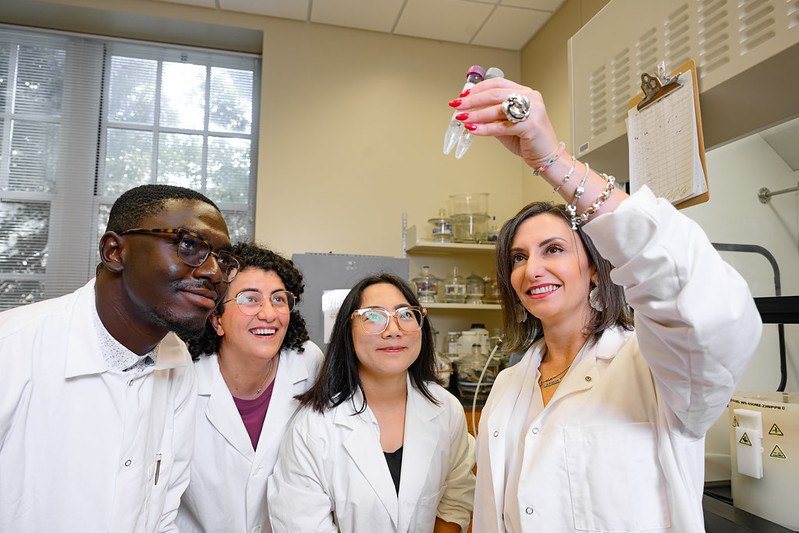
Soledad Peresin, right, is pictured with researchers in the Sustainable Bio-based Materials Laboratory of the College of Forestry, Wildlife and Environment.
Categories: Energy & the Environment, Science, Technology, Engineering and Mathematics (STEM)
Researchers in chemical engineering part of NSF-EPSCoR grant to reimagine sustainable development of plastic materials
Mismanaged micro- and nano-plastics can threaten the environment and health.
Three researchers in Auburn University’s Department of Chemical Engineering – Assistant Professor Symone Alexander, Department Chair Selen Cremaschi, and Associate Professor Zhihua Jiang – offer solutions that could reimagine the sustainable development of plastic materials, address plastic waste challenges and their climate/health impacts, and build community climate resilience while advancing social and environmental justice in Mississippi and Alabama.
Their multi-disciplinary study, “Advancing Social and Environmental Equity through Plastics Research: Education, Innovation and Inclusion” (ASPIRE), is a collaborative effort with researchers from the University of Southern Mississippi (led by professor Zhe Qiang), and part of a four-year, $4 million National Science Foundation (NSF)-Department of Energy Established Program to Stimulate Competitive Research (DOE EPSCoR) R-II Track-2 grant. EPSCoR R-II Track-2 grants are awarded to researchers looking to advance climate change research and resilience capacity to expand opportunities for disproportionately affected communities.
“We’ve heard of islands of trash in the ocean, but what we don't see are micro- and nano-plastics,” said Alexander, the Auburn’s principal investigator (PI). “Those are the very small particles that can easily be ingested by fish and marine animals, which we, as humans, ingest. This can lead to bio accumulation that can cause other health issues which aren't well studied.”
ASPIRE will develop advanced detection methods to analyze microplastic contamination in field and aquaculture samples, utilize novel methods to extend the lifespan and improve the performance of recycled products for sustained use, and design recyclable polymer thermosets using sustainable, bio-derived building blocks to establish chemistry-structure-property relationships.
“Think about our typical single-use plastics, that's your water bottles and fast-food containers… they're difficult to recycle because two of the materials used to make them (polyethylene and polypropylene) aren’t compatible,” Alexander said. “You can’t blend them back together but they're very difficult to separate. We want to make those materials compatible, so they have better, stronger properties.”
They also want to address the lack of recyclable materials known as thermosets, like rubber and epoxy, which cannot be melted and formed into new materials after use.
How? With dynamic compatibilizers and lignin, an organic polymer found in plants that Alexander considers, “the glue that holds cellulose together.” In this case, lignin can be used to hold materials – such as plastics – together.
“What we can do is use this lignin group as a linkage in typical thermoset polymers. I will extract lignin from agricultural waste streams. For example, we can use seed hulls from pecan shelling,” Alexander said. “In Alabama and Mississippi, shelling pecans is part of the agricultural industry and, typically, the seed hulls are thrown out. What we can do is use them to extract lignin and then incorporate that lignin as a dynamic linkage in these thermoset materials. It's taking a waste product and making it something valuable that can be purposed into materials.”
As a co-collaborator on the project, Cremaschi focuses on design optimization to assess economic feasibility and improve the competitiveness of the team’s proposed solutions.
“Our role – working with collaborators – is to perform a techno-economic analysis to assess competitiveness of our proposed solutions among each other and against existing technologies,” she said. “Once we have the models in place for simulation of the processes, then we quickly study different processes to improve the techno-economic competitiveness of our solutions.”
Jiang, director of the Alabama Center for Paper and Bioresource Engineering, will serve as Auburn’s senior personnel on the project and brings his vast understanding of lignin and experience in lignin separation to identify efficient lignin extraction processes.
Additional ASPIRE thrusts are technology transfer and educational components in Mississippi and Alabama.
“We will both be working with industry partners for technology transfer, but we also want to showcase the latest technologies for these coastal communities,” Alexander added, citing the Gulf Blue Initiative, a University of Southern Mississippi program which “pools the knowledge of research scientists, federal agencies, industry partners and entrepreneurs to further develop the region as a global leader in ocean- and maritime-related technologies.”
Alexander is excited to make an impact on industry, society, and health.
“Many of these health concerns affect people who look like me, or who come from a similar economic background,” she said. “They don't always receive the same level of rigorous filtration when it comes to treating drinking water, or when it comes to addressing the lack of employment. It's extremely important to me because communities that aren’t well served in terms of city planning, drinking water, or availability of resources suffer most from health impacts related to pollution. A large part of this project is leading more in-depth studies on the impact of plastic pollution on waterways and health of coastal communities in Mississippi and Alabama.
“On the materials and environmental side, in nature everything is used, and nothing is wasted. There's a process to recover, reuse, and reduce or minimize waste. As humans, we've gotten very comfortable with throwing things away after we use them once. We don't think about what happens when we're done. We need a system to recover, reuse and make a smaller impact on the environment.”
Media Contact: Joe McAdory, jem0040@auburn.edu, 334.844.3447

From left, Zhihua Jiang, the Auburn Pulp and Paper Associate Professor in chemical engineering, Symone Alexander, assistant professor in chemical engineering, and Selen Cremaschi, the B. Redd & Susan W. Redd Professor and chemical engineering chair.
Categories: Energy & the Environment, Engineering, Manufacturing
Chemical engineering researchers part of $23.8M project to reduce carbon dioxide emissions from paper mills
Selen Cremaschi, the B. Redd & Susan W. Redd Professor and chair of Auburn University’s Department of Chemical Engineering, and Zhihua Jiang, the Auburn Pulp and Paper Associate Professor in chemical engineering, are co-principal investigators of a $23.8 million study on carbon dioxide capture and storage, led by Blue Sky Infrastructure and funded by the U.S. Department of Energy.
The project, which Auburn will receive $635,000 of the total funding, is titled “Timberlands Sequestration – A Biomass Carbon Dioxide Capture and Removal Project at a Pulp Mill in Alabama.” It aims to develop biomass carbon capture and storage for the Alabama River Cellulose pulp and paper mill in Monroe County. It is the first study of its kind to be conducted on a larger scale at a pulp and paper mill in the U.S.
By leveraging their combined expertise in process systems engineering and a deep understanding of the pulp and paper industry, Cremaschi and Jiang will lead researchers in conducting extensive simulations, analyses and technical evaluations to develop innovative solutions for carbon dioxide reduction and propose cost-effective approaches to implement these solutions. The project’s interdisciplinary nature and emphasis on collaboration align with Auburn University’s commitment to research excellence and environmental stewardship.
“This project is a major step towards net zero emissions,” Cremaschi said. “Our research aims to capture and store carbon dioxide emissions from pulp and paper production sites, converting waste into valuable chemicals used internally for pulp and paper operations. By targeting carbon dioxide emissions from industrial operations and power generation, we have the opportunity to make a significant impact on reducing greenhouse gas emissions.”
Jiang, who also directs the Alabama Center for Paper and Bioresource Engineering, said this research could prove to be a gamechanger for carbon reduction.
“This project has the potential to become a practical and economically viable pathway for the pulp and paper industry to decarbonize their processes,” Jiang said. “This technology should be applicable to all pulp and paper mills and across a wide range of high-energy consumption manufacturing processes.”
Alabama River Cellulose mill is a long-time member of the Auburn Pulp and Paper Foundation (APPF), a leading organization that has strongly supported research and education in the pulp and paper program at Auburn University for more than 40 years. Supported by its member mills, the APPF fosters collaboration between academia and industry to promote sustainability and innovation in the field.
Media Contact: Joe McAdory, jem0040@auburn.edu, 334.844.3447
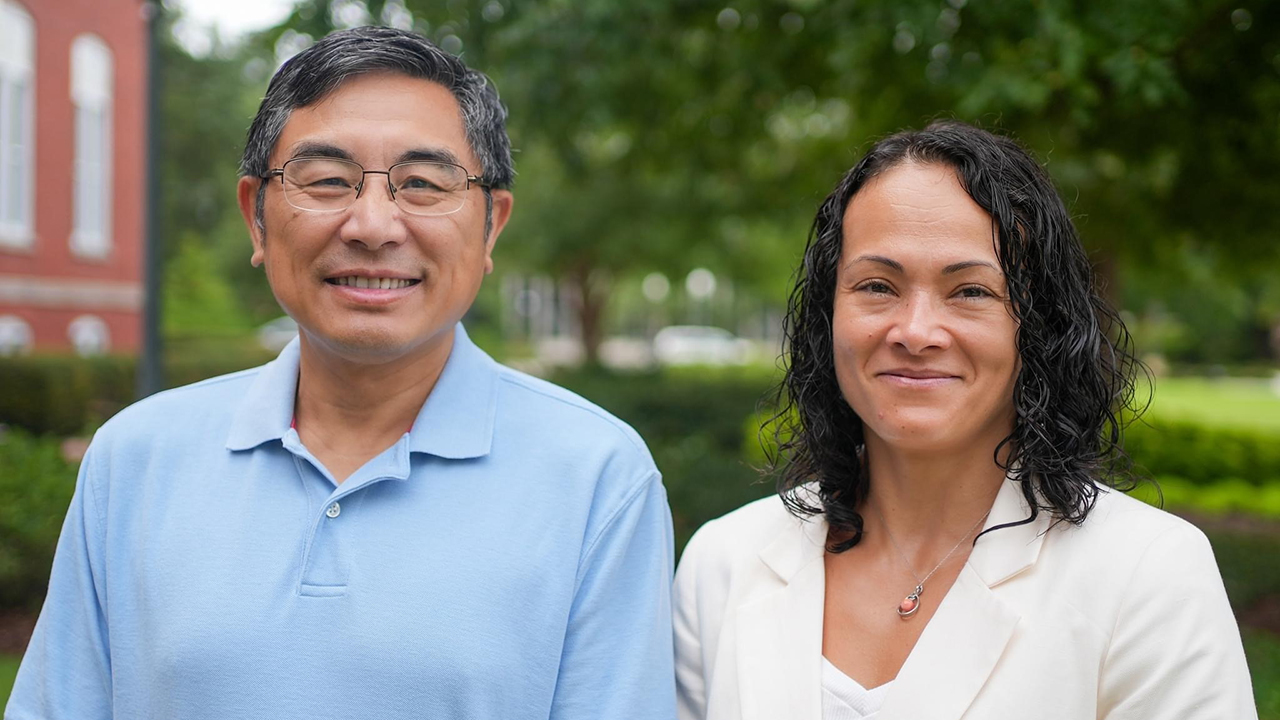
From left, Zhihua Jiang, the Auburn Pulp and Paper Associate Professor in chemical engineering, and Selen Cremaschi, the B. Redd & Susan W. Redd Professor and chemical engineering chair.
Categories: Energy & the Environment, Engineering, Manufacturing
Auburn University study reveals honey bee nest structure is surprisingly adaptive, resilient
Researchers from the Department of Biological Sciences at Auburn University have discovered that honey bee colonies have surprising abilities to adapt and maintain their nest structure, even in the face of severe disruptions.
Contrary to previous assumptions, the researchers found that the disruption of three-dimensional nest structure while colonies were building their nests did not hinder colony performance. The findings shed new light on the adaptive nature of honey bee colonies and how nest structure contributes to colony function.
The study focused on the intricate three-dimensional nest building behavior of honey bee colonies. To investigate the development of honey bee nests over time, the research team employed non-destructive, photo-based sampling methods using moveable wooden bee-frames. This approach allowed them to observe and analyze the growth and organization of combs within the nests without sacrificing the colonies. They found that honey bees rapidly build a well-connected spheroid nest composed of parallel combs that expand in all directions from the nest origin.
To test how important this stereotyped structure is for colony development, the international team of researchers disrupted the nest structure of another group of colonies by rearranging the movable wooden bee-frames in a new randomized order every week. They initially hypothesized that this disruption would negatively impact colony-level performance. However, the study revealed no significant difference in worker population, comb area, hive weight, or nest temperature between colonies with intact nest structures and those with disrupted nest structures.
The surprising lack of difference in colony performance led the researchers to explore the mechanisms behind the honey bees’ ability to compensate for repeated disruptions. By modeling the colony’s building behavior, they found that colonies prioritize structural connectedness when expanding their nests, actively repairing connections in the three-dimensional nest structure following the experimental disruptions. This highlights the colony’s ability to adapt their comb shape to the available space within a cavity, an essential skill in the wild, where cavities are not uniform.
The study also identified potential reasons why honey bees prioritize nest connectedness. A well-connected nest reduces the surface area-to-volume ratio, potentially enhancing thermoregulation efficiency, improving larvae development and winter survival. It also may facilitate information-sharing among colony members and optimize travel distances within the nest for essential activities such as foraging, feeding larvae, and egg-laying.
“We were all surprised that the shuffled colonies performed as well as they did,” said Auburn’s Peter R. Marting, the first author of the study. “We expected some shuffled colonies wouldn’t even survive the summer. The bees’ resilience led us to take a closer look at how and where exactly workers were adding new comb to shape their nests and ultimately led us to develop the predictive comb growth models.”
The research team believes that understanding the underlying mechanisms behind these adaptive building strategies in social insects can provide valuable insights into collective intelligence and resilience in complex systems.
The study, “Manipulating nest architecture reveals three-dimensional building strategies and colony resilience in honeybees,” appears in the journal “Proceedings of the Royal Society B: Biological Sciences” and is available for reference.
“Honey bees are an extremely well-studied system, but many basic developmental questions remain unanswered, because we don’t typically look at the colony’s natural life cycle,” said Michael L. Smith, senior author of the study. “Sometimes you just have to do the experiment and see what the bees will do.”
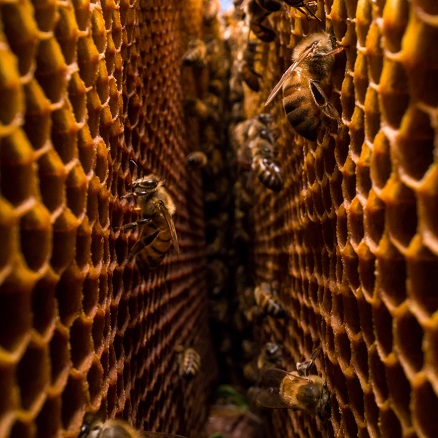
Honey bees (photo by Peter R. Marting)
Categories: Energy & the Environment, Food Systems, Life Sciences, Agriculture
DOE, NAWI tap Auburn team for $1.5M advance reverse osmosis brine management project
The Department of Energy (DOE) and National Alliance for Water Innovation (NAWI) recently tapped Auburn University to spearhead a $1.5 million investigation into the reuse of wastewater and brackish water as a possible means of meeting mounting freshwater demands in inland cities.
Titled “Development of a Flow-through Intensified ELectroDialysis (FIELD) system to manage inland reverse osmosis concentrate,” the project is led by Shiqiang (Nick) Zou, an assistant professor in the Department of Civil and Environmental Engineering.
Commonly referred to as inland desalination, the water reuse process in question relies on reverse osmosis (RO) and generates a highly concentrated RO brine — which would be fine were it not for the hazardous metals, pesticides and polyfluoroalkyl substances the brine contains.
“Unfortunately, no cost-effective treatment systems exist to eliminate these contaminants, leaving deep well injection the only option for inland RO brine,” Zou said. “This project will tackle the above critical problem to promote RO-based inland desalination and a circular water economy. Specifically, we will develop a FIELD system to eliminate contaminants from inland RO brine, produce a clean brine safe for environmental disposal, and harvest freshwater and other valuable resources for beneficial reuse.”
Zou calls RO brine management the “Achilles’ heel” of inland desalination.
“Existing brine management practice is not able to achieve simultaneous water recovery, salt removal, organics degradation and metal separation,” he said. “To tackle this critical challenge, our research project will explore a suite of electricity-powered processes, including electrooxidation, electroplating and electrodialysis, to develop the FIELD system for resource-efficient brine management.”
Zou believes his team, which includes collaborators from Rice University, Lawrence Berkeley National Lab, Electric Power Research Institute and The Water Tower in Georgia, can improve the energy efficiency of inland desalination, drive decarbonization of water and wastewater sectors, and provide the U.S. with climate-resilient, cost-effective water supplies.
“This is our second DOE and NAWI project but first as the lead organization,” Zou said. “We’re excited that our track record has been recognized by the DOE and NAWI over the past two years. Our research program shares a similar vision with NAWI to develop automated, precise, robust, intensified, modular and electrified (A-PRIME) water treatment technologies. With this award, we can bring together theoretical material scientists, electrochemical scientists and engineers, environmental engineers, energy research organizations and at-stake inland municipalities to advance resilient water management and a circular water economy.”
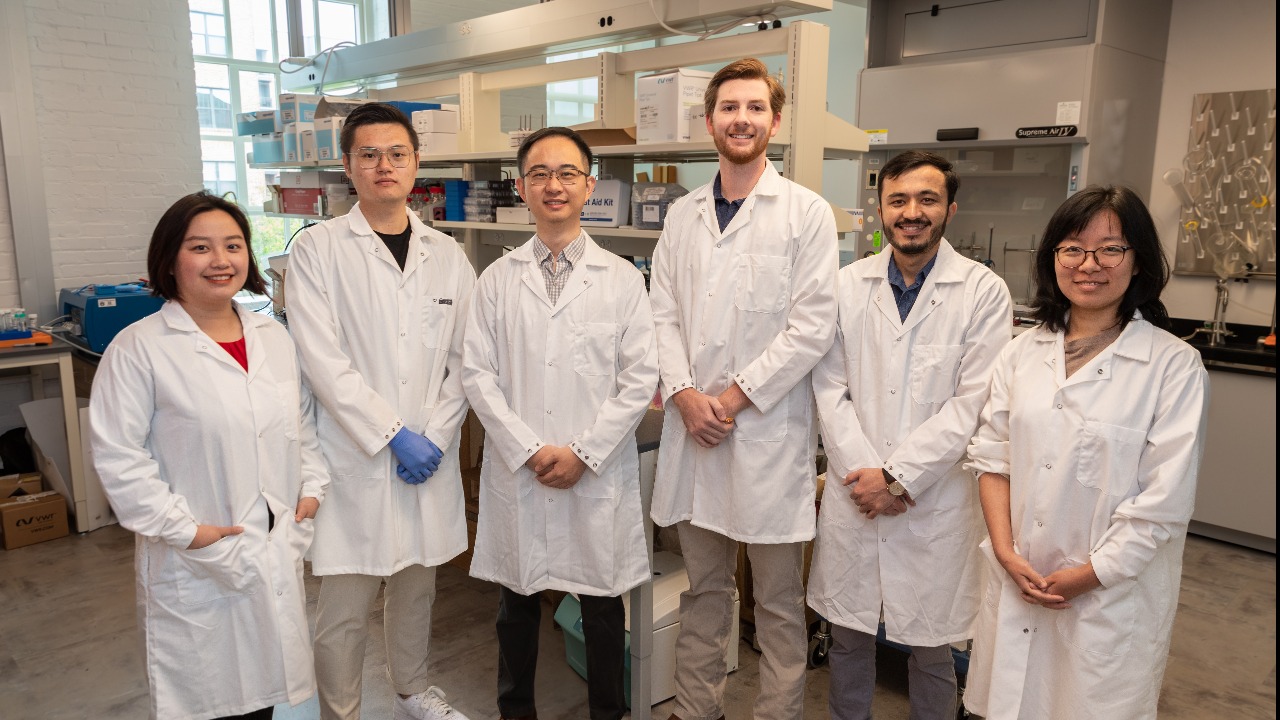
Shiqiang (Nick) Zou, third from left, poses with his research team. From left to right: Zilan Yang, Jiaxiang (Jason) Zhao, Brandon Alderman, Najibullah Zulfeqar and Ao Xie.
Categories: Energy & the Environment, Engineering
Auburn researchers lead $2 million research project to produce hydrogen
Auburn University researchers are leading a $2 million Department of Energy grant that aims to produce hydrogen from blended feedstock such as legacy waste coal, forest residues and municipal solid waste.
“The benefits of converting waste coal, biomass and food waste are twofold,” said Sushil Adhikari, professor of biosystems engineering and principal investigator for the proposal. “First, it will help us to reduce greenhouse gas emissions from hydrogen production. Second, it will help to solve food waste problems.”
AU’s co-principal investigator for the project is Oladiran Fasina, department head and alumni professor for the College of Agriculture’s Department of Biosystems Engineering.
Other engineering staff involved in this project are James Johnson, Caroline Whiting and Bobby Bradford, who work for the Department of Biosystems Engineering and the Center for Bioenergy and Bioproducts (CBB). The CBB is funded by the Alabama Agricultural Experiment Station (AAES), College of Agriculture, and the Samuel Ginn College of Engineering.
The Biden Administration is focused on producing clean hydrogen at $1 per kg, Adhikari said, and this goal can be reached through the use of biomass and food waste while reducing greenhouse gas emissions.
The six primary objectives of the project — titled “Hydrogen Production from Modular CO2 Assisted Oxy-Blown Gasification of Waste” — are to understand how biomass, waste coal and food waste will flow into the gasifier; how biomass, coal and food waste composition will impact the gas composition and quality; and to understand the cost of hydrogen production from biomass, coal and food waste blends.
Auburn researchers are partnering with RTI International — an independent, nonprofit institute that provides research, development and technical services to government and commercial clients worldwide — to facilitate a unique combination of experimental and modeling research to produce hydrogen from the gasification of a coal-food waste-forest residues mixture while reducing greenhouse gas emissions.
The research will examine the gasification performance of coal waste from Alabama, food waste discarded from cities and towns and southern pine residues mixture in a laboratory-scale fluidized-bed gasifier to produce hydrogen. Food waste will be supplied by Burcell Technologies located in Cordele, Georgia.
Other specific objectives of the project are to 1) understand the effect of feedstock blends on flow properties and energy requirement for preprocessing; 2) examine the effect of feedstock blends on syngas composition and contaminants; 3) evaluate water-gas shift catalysts, and sulfur and metals removal sorbents for high-purity H2 production; 4) demonstrate 100 hour operation of an integrated system for waste blend gasification and syngas clean up and conditioning at a 1 kg/hour scale gasifier; 5) perform techno-economic analysis for hydrogen production using waste materials; and 6) develop a technology maturation plan to advance the proposed technology beyond TRL-4.
Flow properties for the coal-food waste-forest residues mixture will be measured, and syngas composition will be analyzed for permanent gases such carbon monoxide, carbon dioxide, methane and hydrogen along with contaminants such as tar, hydrogen sulfide and ammonia.
RTI will develop a gas cleanup system and process model for hydrogen production from the waste coal-food waste-biomass mixture using data gathered in the laboratory-scale system at Auburn University.
The 24-month research project will have applications in industries such as fertilizer synthesis, power production and chemical production, Adhikari said.
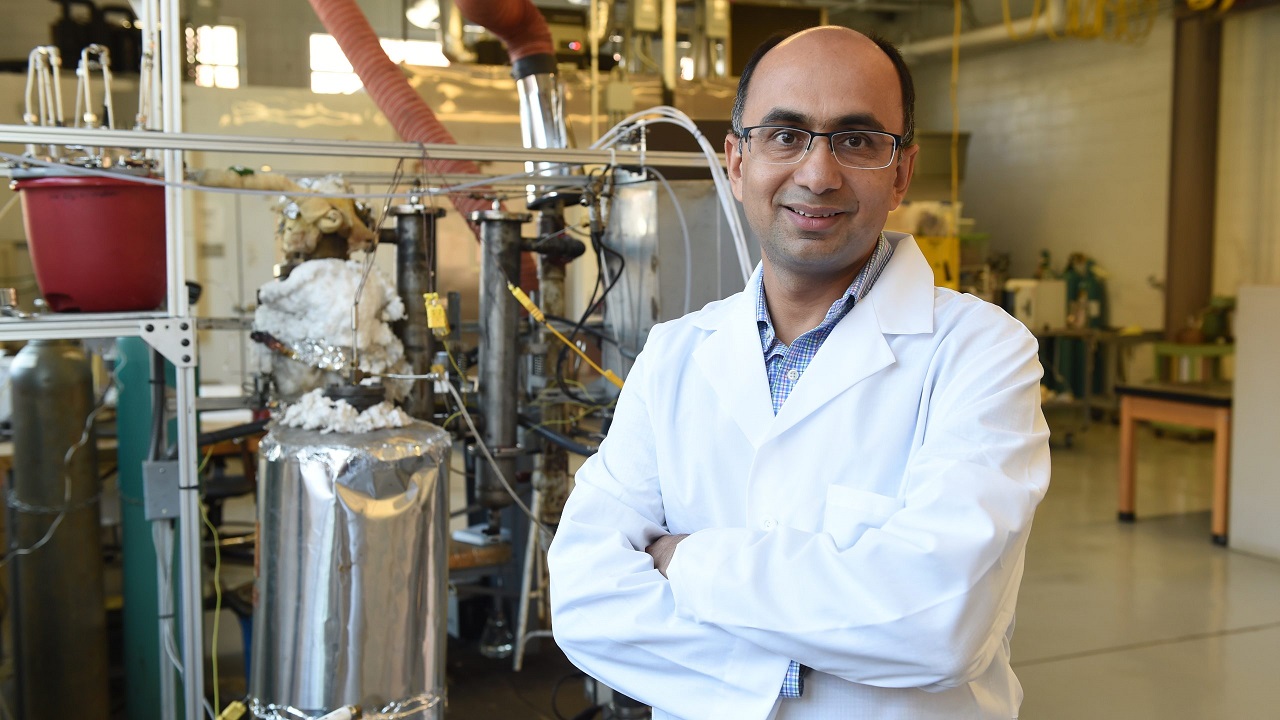
Sushil Adhikari
Categories: Energy & the Environment, Food Systems, Agriculture
Revolutionary grass developed at Auburn taking root at exclusive golf courses
A revolutionary variety of grass developed in Auburn University’s College of Agriculture has recently taken root at some exclusive golf courses around the nation following an acquisition of rights by an Oregon-based seed grower and wholesale supplier.
The bentgrass variety, called AU Victory, was forged from the adversity of historic drought conditions that decimated golf courses throughout the state in 1999 and 2000. AU Victory was developed by Edzard van Santen, professor in the Department of Crop, Soil and Environmental Sciences. He recognized the potential in a grass that survived a devastating drought and then began years of research that ultimately produced AU Victory in 2015.
Fast-forward to today and to Oregon-based Mountain View Seeds’ recent acquisition of rights to AU Victory. Adam Russell, vice president of Mountain View Performance Genetics, a subsidiary of Mountain View Seeds, or MVS, said the company expects great things ahead for their partnership with Auburn and for the little seed that could.
Already, MVS has sold AU Victory to golf courses around the nation, including as the exclusive variety for greens at the scenic McLemore in northwest Georgia. AU Victory is part of a new course in South Africa and has also been chosen to seed in the fall by the Lookout Mountain Club in Georgia.
Up next for the seed that is known for its perseverance in the face of adversity—Auburn and MVS hope to see it featured nationally and internationally at the most prominent golf courses.
“Of course, our goal has to include placing AU Victory at the best golf courses in the nation,” Russell said. “But really, the sky is the limit with such a durable, heat-tolerant grass that has been rated as a superior surface by golfers around the world.”
AU Victory is seen by many as the perfect solution for golf course superintendents looking for a putting surface that will thrive in the high humidity and heat.
“AU Victory was more than a decade in the making,” he said. “Research and development just take that long, and then when it finally was released, people heard about it—and wanted it—but there was never enough supply to satisfy demand. It became almost an urban legend. And that’s what got us hooked on it.”
Innovative research, rooted in a commitment to fuel industry growth, has been a driving force in Auburn’s College of Agriculture. The development of AU Victory wasn’t just a win for Auburn, it was a win for seed growers and golf course superintendents throughout the world.
“Auburn scientists always need to keep the needs of a specific industry in mind when conducting research,” said John Beasley, professor and head of the Department of Crop, Soil and Environmental Sciences. “Dr. van Santen realized the need for an improved creeping bentgrass cultivar for golf courses, especially one that responds well to stressful climates. If AU Victory continues to perform as we have initially seen, we expect it to become a turf cultivar that will be widely used on golf courses around the globe.”
With one of the largest research facilities in the nation, MVS has established relationships with universities including Rutgers University and North Carolina State University. AU Victory is creating a natural partnership with Auburn that researchers hope will lead to further collaborations.
“In the past, we had a plant breeding program in turfgrass cultivar development, and that is the program from which AU Victory evolved,” Beasley said. “Mountain View Seeds could certainly be a very important partner for commercializing cultivar releases from our forage and grass breeding program.”
BY SHERYL CALDWELL
 Consistently rated as one of the best finishing holes in golf, McLemore’s 18th hole features a dramatic landscape with an awe-inspiring rocky ledge, surrounded by beautiful hillside and a breathtaking view of the horizon and Lookout Mountain. The luxury resort’s northwest Georgia course also features AU Victory, the revolutionary bentgrass developed at Auburn, with a beautiful, durable and exceptional putting surface. (Photo by Dave Sansom)
Consistently rated as one of the best finishing holes in golf, McLemore’s 18th hole features a dramatic landscape with an awe-inspiring rocky ledge, surrounded by beautiful hillside and a breathtaking view of the horizon and Lookout Mountain. The luxury resort’s northwest Georgia course also features AU Victory, the revolutionary bentgrass developed at Auburn, with a beautiful, durable and exceptional putting surface. (Photo by Dave Sansom)
Categories: Energy & the Environment, Agriculture
Auburn University part of $20 million statewide collaboration to boost plasma science, engineering
Auburn University is part of a $20 million collaboration among nine Alabama universities and one private firm to develop transformative technologies in plasma science and engineering, or PSE.
The five-year effort—which is being led by the University of Alabama in Huntsville, or UAH—is funded by a grant from the National Science Foundation, or NSF, Established Program to Stimulate Competitive Research, or EPSCoR. The goals of the Future Technologies enabled by Plasma Processes, or FTPP, initiative are to develop new technologies using plasma—the most abundant form of matter in the observable universe—in hard and soft biomaterials, food safety and sterilization and space weather prediction.
“This research directly impacts two of the largest industries in the state of Alabama, space and agriculture,” said Ed Thomas Jr., interim dean, Auburn College of Sciences and Mathematics and project lead. “For more than three decades, Auburn has been a leader in plasma research, and we have one of the highest ratios of plasma physicists in our faculty in the entire nation.”
Auburn’s team includes: Saikat Chakraborty Thakur, Uwe Konopka, Evdokiya (Eva) Kostadinova, Yu Lin, Stuart Loch, David Maurer, Joseph Perez from the Department of Physics, Mary Lou Ewald, director of COSAM Outreach, Virginia Davis from the Department of Chemical Engineering and Amit Morey from the Department of Poultry Science.
“The Alabama EPSCoR program continues to promote cutting-edge research and economic advancement in the state, and this funding presents a great opportunity for Auburn University and its collaborators,” said James Weyhenmeyer, Auburn’s vice president for research and economic development.
The alliance will build Alabama’s PSE research capacity, as well as the supporting workforce, while making the state a world-renowned PSE hub.
“The funding is the result of a team effort from the co-investigators in assembling the group, who generated the concepts and ideas underlying the proposal and executed the plan by writing a successful proposal,” said Gary Zank, FTPP’s principal investigator and director of UAH’s Center for Space Plasma and Aeronomic Research, or CSPAR, and the Aerojet Rocketdyne chair of the Department of Space Science.
“The Alabama EPSCoR committee that oversees all the Alabama EPSCoR activities—especially Professor Chris Lawson and his team of Alabama university vice presidents of research—was instrumental in guiding and helping us develop the proposal.”
Alabama Sens. Richard Shelby and Tommy Tuberville, as well as former Sen. Doug Jones, have helped champion the collaboration.
“This grant will allow for ground-breaking plasma research to occur, accelerating new technologies for a variety of applications, and will further solidify Alabama as a leader in this field,” Shelby said. “I look forward to seeing the impact that this five-year initiative will have on the future utility of plasma science and engineering.”
Tuberville called the grant welcome news and said it is well-deserved for this innovative collaboration.
“Our state is home to many talented researchers and developers, and this funding will go a long way in making Alabama a leading pioneer in PSE research and stimulating meaningful advancements in plasma technologies,” Tuberville said.
Although different in intentions, research goals and scope from a previous $20 million NSF EPSCoR grant awarded in 2017, the new FTPP grant will continue to build plasma expertise, research and industrial capacity, as well as a highly trained and capable plasma science and engineering workforce, across Alabama.
Both plans prioritize advanced manufacturing, agricultural and food products, biosciences and biotechnology, chemical and petrochemical, energy, forestry products, information technology and cybersecurity, metal and advanced materials, nanotechnology, plasma science and transportation.
Partnered with Auburn and UAH are: the University of Alabama; (lead: R. Branam); the University of Alabama at Birmingham (lead: Y. Vohra); Tuskegee University (lead: V. Rangari); the University of South Alabama (lead: E. Spencer); Alabama A&M University (lead: R. Mentreddy); Alabama State University (lead: K. Vig); and Oakwood University (lead: A. Volkov); along with a commercial/industrial partner CFD Research Corporation (lead: V. Kolobov), that specializes in computational fluid dynamics software and is located in Cummings Research Park in Huntsville.
In addition, FTPP cooperatively partners with three national laboratories: Los Alamos National Lab, Sandia National Lab and Princeton Plasma Physics Lab. FTPP will harness and share cooperatively the project team’s collective expertise, resources and workforce.
FTTP will exploit low-temperature plasma, or LTP, physics to develop technologies for advanced materials, agriculture, food safety and health-related applications. It will use space plasma physics from the sun to the ionosphere to develop actionable space weather forecasting and nowcasting models to mitigate potentially damaging effects on spacecraft, humans and infrastructure.
Those are two of the six Grand Challenge problems identified in the Plasma 2020 decadal report. The National Academy of Sciences named Zank co-chair to produce that report in 2018, and Thomas was a member of the Plasma 2020 committee and one of the co-authors of that report.
“The FTPP project is the next step in Alabama’s and Auburn’s growing contributions in plasma science and engineering,” Thomas said. “We will use the FTPP project to continue to expand our collaborations in the state, nationally and internationally and create new educational, economic and scientific opportunities for our students and the people of Alabama.”
Proposed educational and outreach programs for college and K-12 students, collaboration with national and international partners, scientific exchange programs, workshops and internships between academic institutions and national labs and industry partners also will build PSE capacity. FTPP partnerships will work toward building a sustainable foundation from which further PSE ambitions can be realized, such as a hub for cutting edge PSE in Alabama.
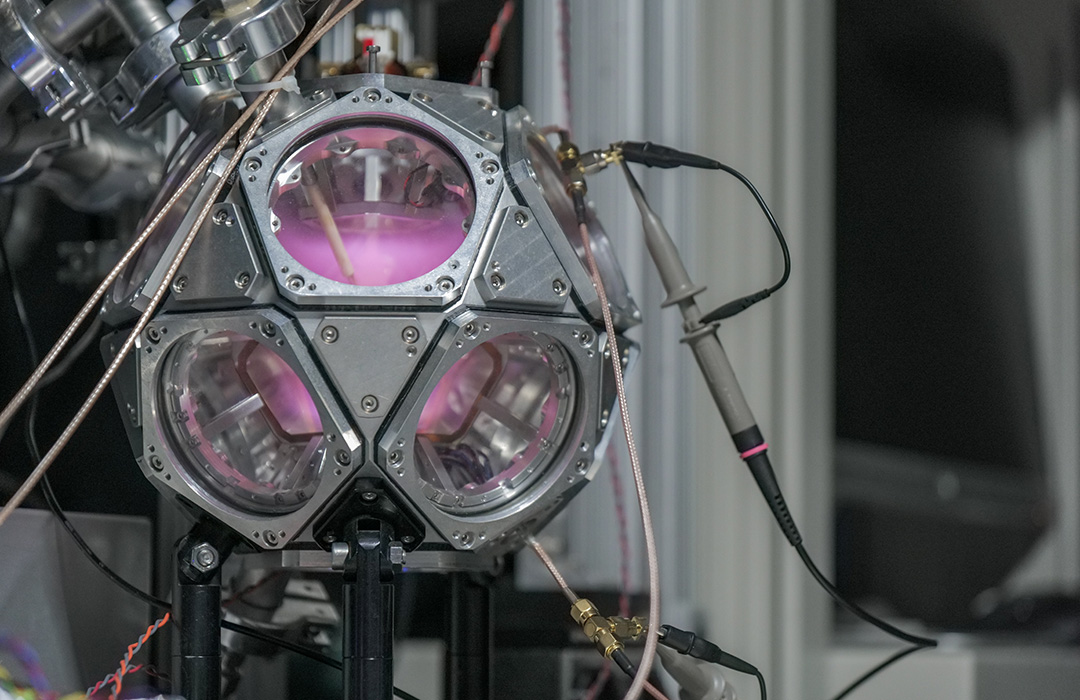
The National Science Foundation Established Program to Stimulate Competitive Research, or EPSCoR, is committing $20 million to a research collaboration among nine Alabama universities and one private firm to develop transformative technologies in plasma science and engineering.
Categories: Energy & the Environment, Food Systems, Agriculture
Auburn College of Agriculture faculty member receives NSF CAREER Award to study flash drought
Di Tian, an assistant professor in the Auburn University College of Agriculture’s Department of Crop, Soil and Environmental Sciences, has been named a recipient of the National Science Foundation’s Faculty Early Career Development, or CAREER, Award.
The CAREER program is a foundation-wide activity that offers the NSF’s most prestigious awards in support of early-career faculty who have the potential to serve as academic role models in research and education and to lead advances in the mission of their department or organization. Activities pursued by early-career faculty should build a firm foundation for a lifetime of leadership in integrating education and research.
Tian’s award is for his integrated project titled “Analytical methods for understanding and predicting agricultural flash droughts in a changing climate.” The total award is $574,706 over five years, co-funded by the NSF Hydrologic Sciences and NSF Climate and Large-Scale Dynamics programs.
The research, Tian said, will investigate underlying drivers of agricultural flash droughts using machine learning-based causal inference analysis, develop and evaluate sub-seasonal agricultural flash drought forecasts using deep learning approaches and assess changes in agricultural flash drought under contemporary and future climate based on coupled general circulation models large ensembles.
“These research objectives will be integrated with an education and outreach plan focusing on developing and implementing innovative lessons on drought through the 4-H ‘head, heart, hands and health’ program, conducting workshops on sub-seasonal forecasts and decision making with stakeholders through a climate learning network and mentoring undergraduate and graduate students,” Tian said.
Deliverables from this project will contribute to an improved understanding and predictions of flash droughts at the regional scale and will provide a framework for analyzing a broader class of extreme climate events, which will be transferrable to different locations around the world, he added.
Flash drought, Tian said, is an extreme hydro-climate event characterized by sudden onset, rapid intensification and devastating impact on communities. A notable example is the U.S. Southeast flash drought in September 2019.
“It rapidly depletes soil moisture, posing significant water and heat stresses for agriculture and ecosystems and potentially driving water demand and irrigation expansions to traditionally rainfed regions,” he said. “Flash drought is challenging to predict because of its fast onset and development and complex land-ocean-atmosphere factors that contribute to or affect their formation. The NSF CAREER Award allows me to probe into the immediate goal to understand and predict flash droughts, which can potentially accelerate strategies for climate change adaptation.
“It also encourages me to continuously pursue my long-term research goal to integrate terrestrial hydrology, climatology and data science to address gaps and needs for better understanding and predicting hydro-climate impacts and risks in water and food sustainability, and my educational goal to integrate research and real-world applications to enhance learning and climate-aware decision making.”
Tian’s lab, Climate Analytics Group, focuses on understanding and predicting primary climate and hydrologic indicators, extreme events and impacts on water resources, ecosystem and food and agriculture using data science and artificial intelligence techniques, process-based modeling, high-performance computing and emerging earth system data generated from numerical simulations, sensors and satellites.
BY PAUL HOLLIS
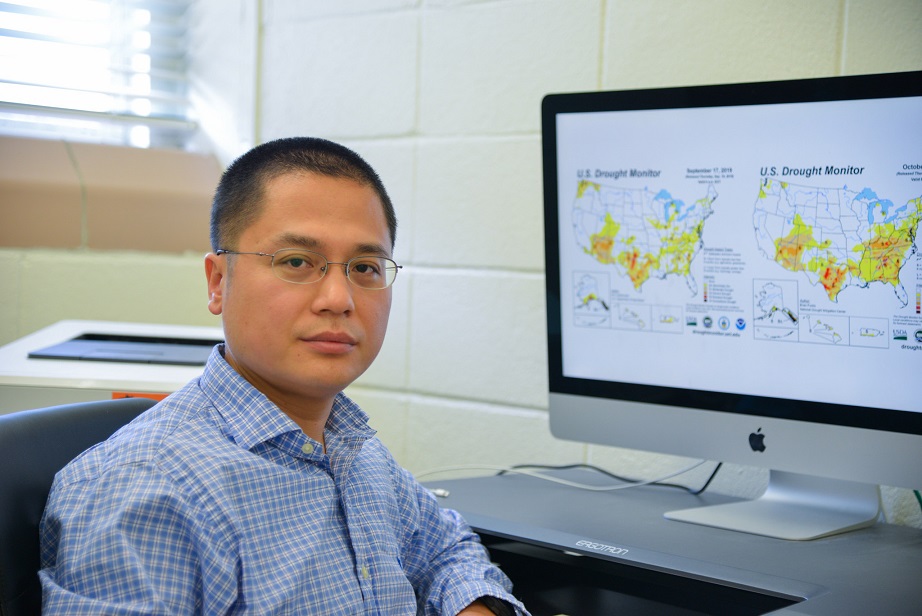
Di Tian
Categories: Energy & the Environment, Food Systems, Agriculture
Auburn showcases variety of university-developed technologies at BIO Alabama conference
Auburn University recently participated in the BIO Alabama conference at the Grand Bohemian Hotel in Mountain Brook, showcasing seven of its biotechnology research developments.
BIO Alabama is the trade organization for the state’s biosciences industry. This year’s event—the first meeting following a six-year hiatus due in part to the COVID-19 pandemic—featured approximately 200 scientists and their research developments April 25-26.
Melinda Richter, global head of Innovation at Johnson & Johnson, served as keynote speaker under this year’s theme, “Building Alabama’s Biohorizons,” focusing on the future of the industry’s participation in Alabama’s innovation economy.
Auburn’s presentations included:
-
Vivosphere cell encapsulation technology platform for drug development and discovery (Elizabeth Lipke; presented by co-inventor Yuan Tian) – This is a 3D cell encapsulation method and device for more accurate and cost-effective drug screening, bioinks and regenerative medicine.
-
Anti-cancer immunotherapy targeting CD47 (James Gillespie, joint project with VCOM) – Development of an anticancer treatment that could replace immunomodulatory therapies targeting CD47.
-
Computational tool for speeding discovery of natural beneficial compounds (Angela Calderon and Cheryl Seals; presented by Kabre Heck and Muhammad Gulfam) – A collaborative project about an automated method to analyze mass spectrometry data to identify potential bioactive compounds in complex mixtures.
-
Engineered bacteria for producing biofuels and other compounds (Yi Wang) – Engineering of bacteria to express record levels of butanol for biofuel or other industrial applications or to express record levels of butyl acetate for use in foods, consumer goods or industrial processes.
-
Computationally designed compounds for treating Alzheimer’s disease (Raj Amin; presented by Ian Steinke and Fajar Wibowo) – A custom-designed therapeutic compound for treating Alzheimer’s without the side effects seen with other drugs in this class.
-
Gene therapy vectors for therapeutic treatment of neurological disease (Doug Martin) – Engineered AAV vectors for treating neurological diseases such as rabies.
-
Medical device for improving diagnosis and monitoring of neuropathy in diabetic patients (Michael Zabala and Thomas Burch; presented by co-inventor Kenny Brock, VCOM) – A medical device for accurately monitoring and measuring loss of feeling in diabetic patients. (Jon Commander is also a co-inventor and is with VCOM.)
BIO Alabama is the leading advocate for Alabama's bioeconomy. The organization represents the state on a national and international stage, promoting the intellectual and innovative capital to make Alabama a premier place to invest, start and grow in bioscience.
Alabama’s bioscience industry provides a $7.3 billion impact on the state’s economy, according to BIO Alabama data. Auburn has participated in BIO Alabama events for a number of years.
"As presenting sponsor for this year’s BIO Alabama conference, Auburn University had an important opportunity to showcase some of our latest technologies during a reverse-pitch session to industry,” said Bill Dean, executive director of the Auburn Research and Technology Foundation.
“Auburn’s participation in events like the BIO Alabama conference speaks to our role in growing the region’s bioeconomy and demonstrates our commitment to the bio-sector in the form of industry collaboration and partnerships that will advance research and impact quality of life throughout the state.”
BY MITCH EMMONS
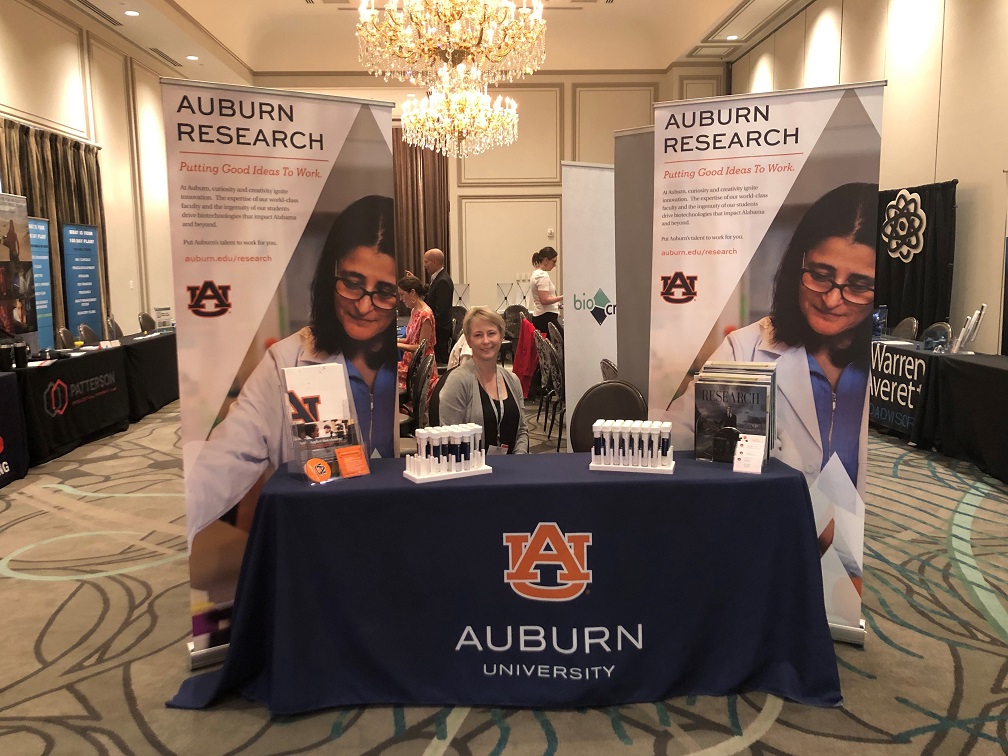
Liz Smith, College of Agriculture academic advisor, works at Auburn’s booth during the BIO Alabama conference. She talked with companies about opportunities for applied biotechnology graduates.
Categories: Energy & the Environment, Health Sciences, Food Systems, Engineering, Life Sciences, Manufacturing, Agriculture
$1.5 million NSF CAREER Award granted for study of plasticity, genetic and environmental impacts on butterflies
Brian Counterman conducts research asking insightful questions about the environment, genetics and mating preferences impacting the Dogface Butterfly. He is the recipient of a National Science Foundation (NSF) CAREER Award for $1,565,641 for “Physiological genomics of sexually dimorphic developmental plasticity on butterfly wings.” His research will also help inspire the next generation of scientists currently in Alabama middle schools through outreach programs.
Plastic Response
Dogface Butterflies are native to the Black Belt Prairie region and have areas on their wings with distinct pink, yellow and ultraviolet markings.
Brian Counterman, an assistant professor in the Department of Biological Sciences in the College of Sciences and Mathematics (COSAM), researches genetic and genomic changes specifically in butterflies.
“In fall, we noticed that the color markings on the Dogface Butterfly were extremely pink,” Counterman said. “The environment induces color changes of the pigment seen on butterfly wings.”
The changes are not just seen in the pigment coloration.
“Pigmentation changes occur with seasonality, but what was really interesting is that these butterflies are also experiencing structural or cell-centric changes that cause a loss of the ultraviolet colors on their wings.”
Counterman’s research focuses on the genetics of plastic responses or plasticity, which is how the environment can influence development.
“We compare which genes in the butterflies are changing and control how much pink, yellow and ultraviolet is visible on the butterfly wings,” Counterman added.
Counterman teaches a class on development plasticity for undergraduate and graduate students at Auburn University. He discusses the importance of how the environment is impacting species in this course.
Genetic Mapping
“In the laboratory, we will create lines from local populations so that we can genetically map what causes the wing color differences,” Counterman said.
He anticipates that through artificial selection over several generations they will make colonies of pink colored butterflies.
“After several generations of artificial selection, we will use CRISPR to edit genes to change the pink and ultraviolet colors on the butterfly wings,” Counterman said.
In addition to pigmentation, Counterman will be able to learn if the butterflies prefer to mate with butterflies with the same color differentiation or not.
Outreach Component
The outreach component of Counterman’s grant embodies the land-grant mission of Auburn University.
Counterman will reach out to middle school teachers and offer an interactive summer camp giving them an opportunity with hands-on research.
“These teachers will discuss hypothesis-driven research and gain insight on how to conduct this research with their students in the classroom,” Counterman said.
He then will send each teacher three experiments in the fall. Each student will receive an origami-based microscope as well as additional ones for the classroom.
Through these experiments, students will be able to learn about butterfly wing scales.
“Student will be able to then apply the information they learned and use the microscopes for projects for state science fairs,” Counterman added.
Counterman will also share information about his research at the annual Destination STEM event hosted by COSAM’s Office of Outreach. Additionally, students will be able to attend a capstone event and teachers will be able to share what their students learned through a poster presentation.
Counterman’s NSF CAREER Award will help to share a passion for science with middle school students in the state of Alabama and create the next generation of STEM leaders.
BY MARIA GEBHARDT
Brian Counterman
Categories: Energy & the Environment, Life Sciences
Auburn University, Fort Benning agree to $18 million, 10-year environmental services partnership, paving the way for new multidisciplinary research opportunities
Auburn University and Fort Benning have agreed to a 10-year partnership for the university’s Department of Risk Management & Safety to assume management of the Georgia Army base’s environmental services.
The Intergovernmental Support Agreement, or IGSA, connects the university and military base—which are located just 40 miles apart—in a long-term partnership that will expand research opportunities for Auburn’s colleges and units. The university’s Department of Risk Management & Safety, or RMS, will support Fort Benning’s environmental compliance program needs for the next decade as part of the $18 million deal, which begins in April.
Auburn RMS operates with a mission to “protect people, the environment, property, financial and other resources in support of Auburn University’s teaching, research, outreach and student services.” RMS also will help the base adhere to state and federal Clean Air Acts and Clean Water Acts and hazardous waste regulations, oversee staffing needs and expand research opportunities for Auburn’s colleges and units.
The partnership marks a significant advancement in the collaboration between Auburn and Fort Benning.
“This long-term partnership between Auburn University and Fort Benning is a welcomed joint venture that will link our two great neighboring institutions for years to come,” said Lt. Gen. (ret.) Ron Burgess, Auburn’s executive vice president and a 38-year U.S. Army veteran. “Auburn has long been a friend to the military and veterans, and this collaboration will strengthen that bond as we help the Army manage the base’s environmental needs through our Department of Risk Management & Safety. The potential for faculty research opportunities through this agreement will be a profound boost across campus, and we look forward to a long alliance with Fort Benning.”
For the base, the deal represents an opportunity to streamline operations, maximize efficacy and partner with a major land-grant institution.
“The Intergovernmental Service Agreement model has been successful across the Army and has been a great tool to work with surrounding communities to create mutually beneficial partnerships,” said Maj. Gen.
Patrick J. Donahoe, commanding general, Fort Benning and the Maneuver Center of Excellence. “We are excited to build on those lessons learned and apply them here at home.”
The partnership was initially conceptualized by College of Sciences and Mathematics Interim Dean Edward Thomas Jr., who views the collaboration as a mechanism for additional research funding at Auburn.
“I am excited for this opportunity to have Auburn faculty work in conjunction with Fort Benning to conduct research and help solve problems that have real-world applications,” Thomas said. “This partnership will spark new innovations and help Auburn work on long-term projects with the United States Army.”
As part of the partnership, Auburn’s various colleges, faculty and campus units can apply for research funding for projects relevant to Fort Benning missions. The university will form an advisory board to process funding applications, consider new projects related to the Army base and communicate opportunities for faculty to consider during their research.
“Fort Benning relies on our partnerships and contracts to support our operations,” said Brandon Cockrell, deputy to the Garrison Commander, Fort Benning. “Intergovernmental service agreements like this allow us to reduce the administrative costs and focus on the partnership and our mission.”
Auburn RMS will manage many of the same environmental compliance responsibilities for Fort Benning that it does for the university, including chemical waste management, stormwater pollution prevention, spill response and personnel training.
“This is a tremendous opportunity for Auburn University and Fort Benning to work together in this first of its kind partnership,” Auburn Department of Risk Management & Safety Executive Director Chris O’Gwynn said. “Through this agreement Auburn University Risk Management & Safety will be providing Fort Benning with singular oversight of environmental compliance including Hazardous Waste Management, Clean Water Act compliance, Clean Air Act compliance and a variety of environmental education and training services. Our goal is to help them create more efficient processes and improved coordination of personnel, on-site inspections, and tracking of materials.
“Our Environmental Health & Safety team does an outstanding job for the university, and the opportunity to work with Fort Benning to provide the same exceptional level of support is very exciting. Additionally, Auburn University will have the opportunity to establish new types of educational, research and professional development opportunities for its faculty, staff and students. We are looking forward to a long, collaborative partnership.”
BY NEAL REID

Auburn University and Fort Benning signed a 10-year environmental services agreement at The Park at Auburn in the university's Research and Innovation Center on Wednesday. Auburn was represented by Executive Vice President Lt. Gen. (ret.) Ron Burgess, left, and Fort Benning by Maj. Gen. Patrick J. Donahoe, commanding general, Fort Benning and the Maneuver Center of Excellence.
Categories: Energy & the Environment, External Engagement
Auburn University ranks among top U.S. research institutions in National Science Foundation survey
Auburn University is ranked in the top 11% of U.S. research institutions, coming in at No. 100 among 915 universities, according to the National Science Foundation’s recent Higher Education Research and Development, or HERD, Survey. Among public universities, Auburn is ranked No. 67 out of 415 institutions.
“Auburn’s ranking among the nation’s top 100 research institutions is a significant accomplishment,” said James Weyhenmeyer, Auburn vice president for Research and Economic Development. “Our innovative researchers have remained committed to engaging in impactful research even during the challenges of a global pandemic. Their dedication and ingenuity are reflected in Auburn’s rise in the rankings.”
The annual survey, compiled from fiscal year 2020 research expenditures, saw Auburn climb five spots from the previous year.
During the five-year period of 2016-20, Auburn’s annual research expenditures increased from $152.4 million to $255.3 million, resulting in a rankings jump of 26 places. Among Southeastern Conference universities, Auburn had the highest percentage increase in research expenditures over that time period: a jump of 67.5%.
For universities without a medical school, Auburn ranked No. 61 nationally and No. 1 in the state. Auburn also was highly ranked nationally in a number of specific fields of research, including No. 54 in engineering, No. 54 in mathematics and statistics and No. 93 in physical sciences, all tops in the state.
A hallmark of Auburn’s research is the diversity of its funded projects. Highlights include:
- The Samuel Ginn College of Engineering’s National Center for Additive Manufacturing Excellence is working with NASA under a $14.6 million contract to develop additive manufacturing processes for improving the performance of liquid rocket engines. The center also is using $6 million from the Federal Aviation Administration to advance the use of additive manufacturing in commercial aviation.
- The state of Alabama recently awarded Auburn $1.6 million for four sustainability projects: advanced jet and diesel fuels from woody biomass grown in the state and from waste plastics; biotechnology that enables conversion of organic wastes into bioplastics; 3D printable polymer smart machines, such as actuators, sensors and energy harvesters; and a new, high-value aquaculture feed binder made from soybean hulls.
- The National Institutes of Health recently awarded Auburn a $1.5 million Research Training Initiative for Student Enhancement grant to broaden participation in the sciences for traditionally underrepresented students.
In addition to the high ranking in the NSF HERD Survey, Auburn is recognized by the Carnegie Classification of Institutions of Higher Education as a top-level, or R1, university with “very high research activity.”
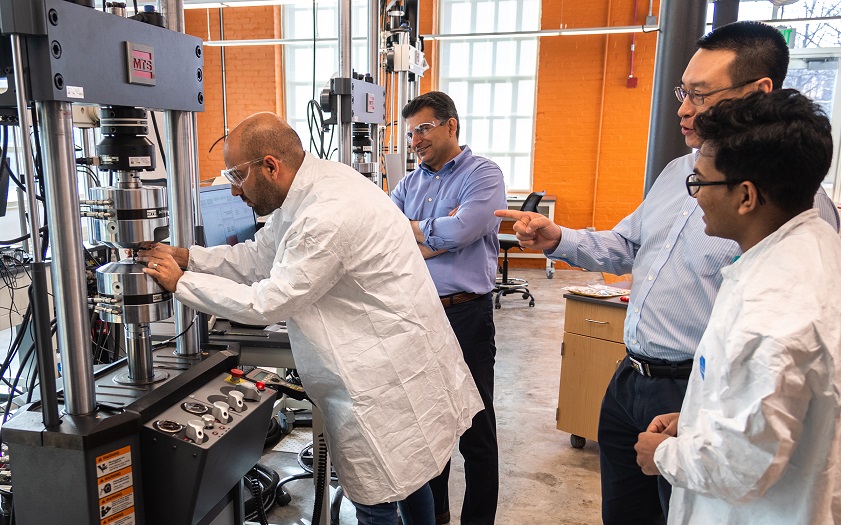
Auburn University is ranked in the top 11% of U.S. research institutions, coming in at No. 100 among 915 universities, according to the National Science Foundation’s recent Higher Education Research and Development, or HERD, Survey. Pictured, scientists in Auburn’s National Center for Additive Manufacturing Excellence conduct fatigue testing on an additively manufactured part.
Categories: Energy & the Environment, Engineering, Auburn In the News, Manufacturing, Advanced Systems, Agriculture
Auburn University professor receives award to study climate adaptation in coral reef communities
Kelly Dunning, an Auburn University assistant professor in the College of Forestry and Wildlife Sciences, hopes to improve citizens’ understanding of science and natural resource policy decisions in communities most impacted by climate change.
Dunning has been chosen as one of 12 faculty members from U.S. universities to participate in research through the National Center for Atmospheric Research, or NCAR, and its main sponsor, the National Science Foundation. Through this NCAR award, Dunning received $100,000 to study how marginalized communities are adapting to climate change in coral reefs.
The NCAR Early Career Faculty Innovator program was founded in 2019 to enhance NCAR’s capacity to effectively partner with external collaborators across a broad spectrum of human dimensions and social science research.
Dunning’s seed project is a community-focused project that engages locals in coastal communities in Florida and the U.S. Virgin Islands using NCAR climate data.
“I am working with three amazing women, Joanie Kleypas, coral reef scientist, Melissa Moulton, oceanographer, and Kristen Krumhardt, ocean biogeochemist,” said Dunning. “I am developing several narrative accounts of how climate change will impact American reefs through their work modelling ocean temperature and bleaching.”
Through fieldwork, Dunning relays the accounts to stakeholders on the ground working in coral reef management.
“I ask them what types of policy responses are needed, given the changes we will predict,” said Dunning. “These simple narrative accounts, or ‘climate scenarios,’ will make complex science accessible to all, creating a more informed public when it comes to coastal decision-making.”
Dunning describes the grant as career-making, uniting the fields of environmental policy, conservation governance and natural sciences.
“It allows me to work with accomplished scientists and early career team members,” said Dunning. “We have been able to add a master’s student to the team, increasing graduate training in my lab, the Conservation Governance Lab.”
Dan Morris, a College of Forestry and Wildlife Sciences graduate student working in Dunning’s lab, studies how policies are made regarding port expansion projects and their impacts on adjacent coral reefs. His role in the project will be to identify stakeholders and beneficiaries to suggest additional policies to better increase the protection of coral reefs.
After graduating from Auburn in 2007 with a bachelor’s degree in political science, Morris was commissioned as a second lieutenant in the U.S. Air Force, where he served as a logistics readiness officer. Morris specialized in air transportation and contingency planning.
Through the help of her funding, Dunning also hopes to determine whether stakeholders working to conserve mainland American coral reefs in Florida have different levels of access to resources and capacity compared to U.S. territories.
“Working toward equitable adaptation for all American coastal communities is our main goal,” said Dunning.
“The cohort’s research theme is actionable Earth systems science, and the funded projects address a range of important topics,” said Janaki Alavalapati, the college’s dean. “It is an honor that one of our faculty will play a vital role in this impactful program.”
BY GRACEN CARTER
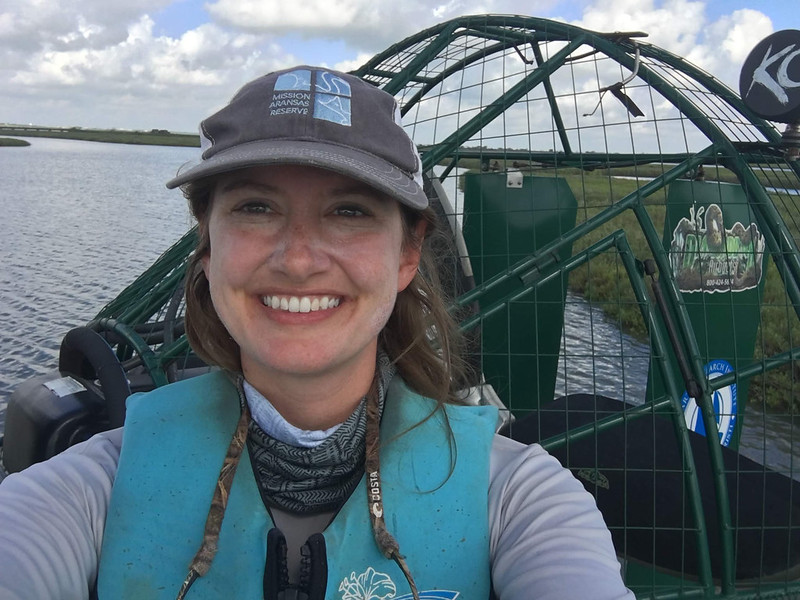
Kelly Dunning, assistant professor of conservation governance in Auburn University’s College of Forestry and Wildlife Sciences, has been chosen as one of 12 faculty members from U.S. universities to participate in research as a recipient of the National Center for Atmospheric Research Early Career Faculty Innovator award.
Categories: Energy & the Environment
Chemical engineering professor becomes Auburn’s first senior member of National Academy of Inventors
Jin Wang is the first faculty member at Auburn University to be named a senior member of the National Academy of Inventors, or NAI.
The Walt and Virginia Woltosz Professor in Auburn’s Samuel Ginn College of Engineering is also Auburn’s first female faculty member to be named a senior member or a fellow of NAI. Since starting its fellows program in 2013, NAI has named seven Auburn faculty members to its esteemed list; all seven are male. Fa Foster Dai, the Godbold Endowed Chair Professor in the Department of Electrical and Computer Engineering, joined the 2021 fellows’ class.
“It’s wonderful to be recognized as an inventor and, in particular, a female inventor,” said Wang, who has been a part of the Department of Chemical Engineering since 2006. “I hope this will encourage female students to pursue technology innovation.”
Wang joins 82 other academic inventors from 41 research universities as part of the 2022 senior membership class. They are named inventors on more than 1,093 issued U.S. patents. Wang is also one of 40 female and/or minority inventors in the class.
Wang’s research innovations center around effectively converting waste into value-added products. In particular, she focuses on using a novel microbial coculture to convert agriculture waste-derived biogas into bioplastic feedstock. This method has shown great potential to reduce greenhouse gas emission and water and land pollution.
Throughout her academic career, Wang’s expertise in biogas conversion and sustainable food production have earned her national and international recognition, and her technological innovations have resulted in numerous patents granted by the U.S. Patent and Trademark Office.
“I hope and believe that our research will open new doors to greatly improve the sustainability of U.S. food production and help promote the transition of the current linear food production model (take-make-dispose) into a sustainable, circular and bio-based economy that minimizes, or even eliminates, waste generation,” she said.
NAI senior members are active faculty, scientists and administrators from NAI member institutions who have demonstrated remarkable innovation producing technologies that have brought, or aspire to bring, real impact on the welfare of society.
BY CASSIE MONTGOMERY
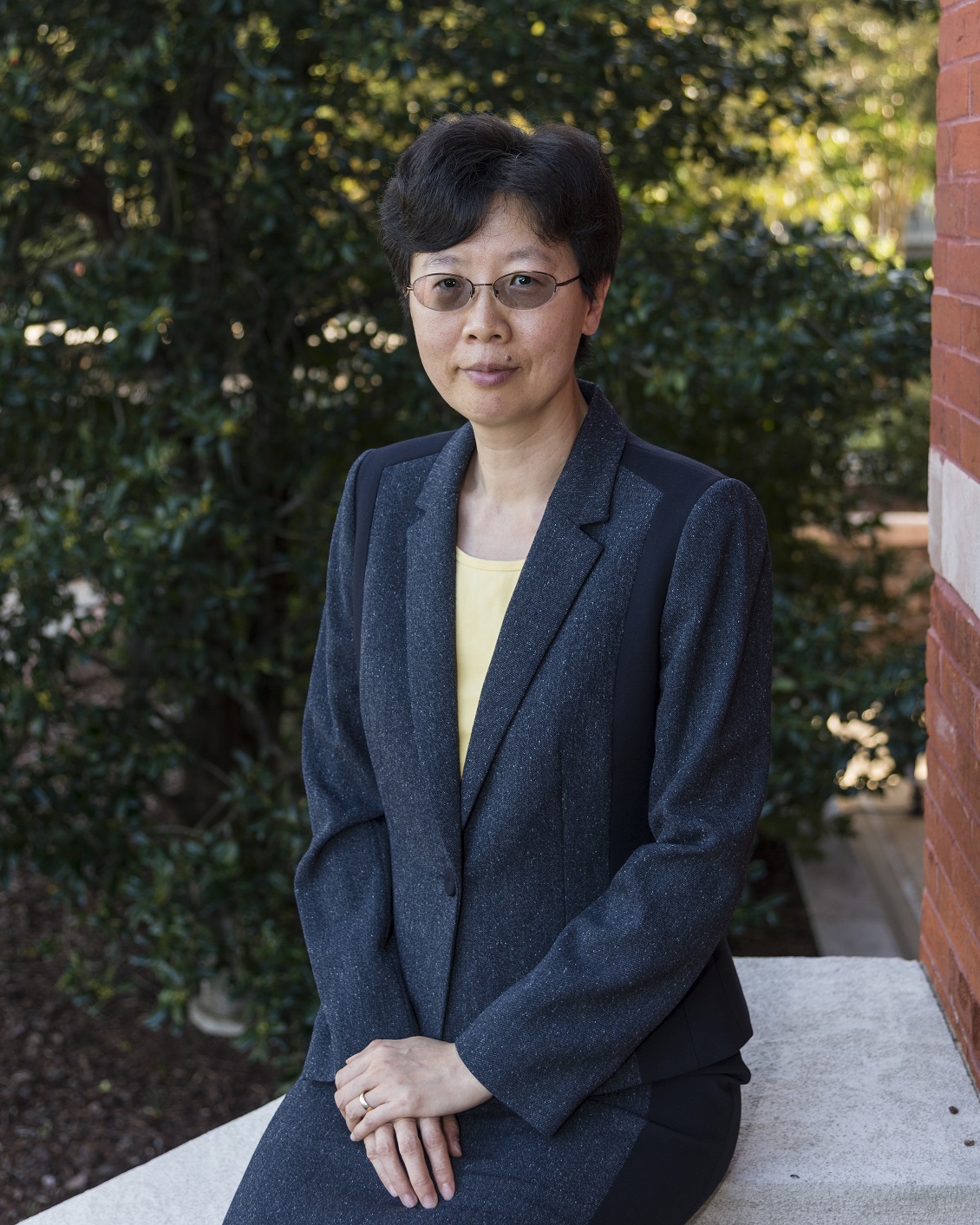
Jin Wang, the Walt and Virginia Woltosz Professor in Auburn’s Samuel Ginn College of Engineering, is the first Auburn faculty member to be named a senior member of the National Academy of Inventors.
Categories: Energy & the Environment, Engineering, Manufacturing, Agriculture
Auburn University researcher co-authors study determining economic impact of invasive species in U.S. exceeds $1.2 trillion
An Auburn University researcher has co-authored a study that found the economic costs of biological invasions in the U.S. have exceeded $1.2 trillion since 1960.
The study, recently published in the journal Science of the Total Environment, determined that costs were mainly related to resource damages and losses, with 53% of costs reported from invasive species, such as wild pigs, from land habitats. Agriculture was the most impacted sector with over $500 billion in damages from mammals and insects.
“Invasive species are a pressing ecological and economic problem, both here in the U.S. and worldwide. However, the impacts of these species are often poorly understood and, as a result, underestimated,” said Jean Fantle-Lepczyk, research professor in Auburn’s School of Forestry and Wildlife Sciences and co-author of the multinational study conducted with a team of seven scientists from the U.S., Germany, France, the Czech Republic and the United Kingdom.
The objective was to raise public awareness of the economic and biological impacts of the issue to underscore the need for more decisive actions to control invasive species. Using InvaCost, a public database of the economic costs of global biological invasions, the research team compiled all published information to determine that the economic impact of invasive species within the U.S. conservatively totaled $1.22 trillion from 1960 to 2020.
Fantle-Lepczyk describes invasive species as those that were moved by humans to a new ecosystem that have begun breeding outside of the area to which they were initially introduced.
“Once established, they can cause great ecological and economic harm,” said Fantle-Lepczyk. “Costs due to invaders are likely increasing as these species establish and spread.”
Drew Kramer, professor and co-author from the Department of Integrative Biology at the University of South Florida, said, “While not all impacts of invasive species are economically quantifiable, robust estimates of their economic impacts can be a convincing way of communicating the scale of the problem to a diverse audience.”
To provide this context, the research team mobilized to create a comprehensive record of invasion costs that would highlight the necessity of invasive species management for decision-makers and the public.
“For the first time, we were able to link all published information on the economic costs of invasive species from a variety of source documents with standardized taxonomic, sectorial, regional and temporal descriptors,” said Fantle-Lepczyk. “As higher trade volumes introduce a suite of new species, and climate change facilitates the establishment and spread of already introduced species, the number of invasive species in the U.S. is increasing rapidly.”
Auburn School of Forestry and Wildlife Sciences Dean Janaki Alavalapati said the research likely will have a significant impact.
“Dr. Fantle-Lepczyk and her fellow team of researchers have addressed a critical gap in knowledge related to the economic costs associated with invasive species in the United States,” Alavalapati said.
In addition to Fantle-Lepczyk and Kramer, the research team included scientists Phillip J. Haubrock, Ross N. Cuthbert, Anna J. Turbelin, Robert Crystal-Ornelas, Christophe Diagne and Franck Courchamp.
BY GRACEN CARTER

An Auburn University-led research team found the economic impact of invasive species within the U.S. conservatively totaled $1.22 trillion from 1960 to 2020. Pictured are zebra mussels along the Lake Michigan shoreline. (Photo by Darnell Glerl, NOAA Great Lakes Environmental Research Laboratory)
Categories: Energy & the Environment, Life Sciences
Auburn University-led study shows ancient cities also dealt with toxic pollution
The negative impact humans can have on their own environment is constantly on full display, with climate change, land alterations and harmful algal blooms impacting people’s lives daily.
But this isn’t an entirely new phenomenon, according to a recent study published in the “Proceedings of the National Academy of Sciences,” or PNAS, by Auburn University paleolimnologist Matthew Waters. PNAS is the official journal of the National Academy of Sciences and one of the world’s most cited and comprehensive multidisciplinary scientific journals.
The research leading to the study was a jointly funded project between the National Geographic Society and the National Science Foundation, which took Waters and his team to Lake Amatitlán in the highlands of Guatemala. The research also has been highlighted in the magazines “Popular Science” and “Scientific American.”
“Human-induced deforestation and soil erosion were environmental stressors for the ancient Maya of Mesoamerica,” said Waters, an associate professor of environmental science in the College of Agriculture’s Department of Crop, Soil and Environmental Sciences. “My study adds water quality/harmful algal blooms to the list of stressors, which was not addressed by the scientists previously studying the Maya.”
Waters also is a National Geographic Explorer and leads the Auburn PaleoEnvironmental Lab, where he and his team of researchers reconstruct historic data recorded in lake sediments and cave environments to document ecological change throughout time.
“Today, lakes worldwide that are surrounded by dense human settlement and intense riparian land use often develop algae/cyanobacteria blooms that can compromise water quality by depleting oxygen and producing toxins,” Waters said. “Such environmental impacts have rarely been explored in the context of an ancient Maya settlement.”
Blooms of algae and cyanobacteria can reduce oxygen in the water column and produce toxins. Such harmful algal blooms are typically caused by nutrient-dense runoff from human activities.
Waters and his colleagues from the University of Florida and the Universidad del Valle de Guatemala examined sediment from Lake Amatitlán in Guatemala to determine whether ancient Maya societies, which reached dense populations within the lake’s watershed, contributed to or were affected by algal blooms.
The study’s authors report that more than 1,000 years ago, harmful algal blooms rivaled eutrophic conditions currently found in the highland lake. The authors measured biomarkers for nutrients, algae, cyanobacteria and cyanotoxins in a sediment core representing approximately 2,100 years, from 110 BCE to present times.
The analyses revealed moderate nutrient and low cyanobacteria levels until 550 CE and a rise in cyanobacteria from 550 to 1200 CE, coinciding with the highest ancient population levels and human disturbance within the watershed.
Cyanobacteria declined in 1380 and remained low until around 1800, when current eutrophic conditions began. According to the authors, harmful algal blooms are not a modern phenomenon and should be considered among the factors that affected the ancient Maya population.
“Human-associated harmful algal blooms have affected both modern and ancient societies and deserve attention when exploring past human-environment interactions,” Waters said.
The study suggests that pre-Columbian Maya occupation of the Lake Amatitlán watershed negatively impacted water potability.
“Prehistoric cultural eutrophication indicates that human-driven nutrient enrichment of water bodies is not an exclusively modern phenomenon and may well have been a stressor for the ancient Maya,” Waters said.
BY PAUL HOLLIS

An Auburn University-led study examined sediment from Lake Amatitlán in Guatemala to determine whether ancient Maya societies, which reached dense populations within the lake’s watershed, contributed to or were affected by algal blooms. Pictured, from left, are Alehandra Agular, undergraduate student at the Universidad del Valle de Guatemala; Jason Curtis, senior associate professor of geology at the University of Florida; Mark Brenner, professor of geology at the University of Florida; Matthew Waters, associate professor of paleolimnology and environmental science at Auburn; and Ninoshka Lopez, undergraduate student at the Universidad del Valle de Guatemala.
Categories: Energy & the Environment, Food Systems, Agriculture
Auburn’s Zhao wins Creative Research and Scholarship Award at 2021 Auburn University Faculty Awards
He still remembers it. It was exciting. Dongye “Don” Zhao was a graduate research assistant at Lehigh University. He got an email from a researcher interested in a paper he’d written a year earlier—his first published in a journal—on trace contaminant sorption through polymeric ligand exchange.
“We had developed a new absorbent material that could selectively remove toxic chemicals such as arsenic and selenate from water,” said Zhao, the Auburn Alumni Engineering Council Professor of Civil and Environmental Engineering. “I was told they would be citing my paper, which made me feel that we were doing something useful. A great encouragement. That was my first citation.”
That was in 1996—210 Science Citation Index-indexed journal papers and 14,529 citations ago. That’s not a typo—it’s some of the hardest work Andy Nowak has ever seen.
“Don is not an average professor,” said Nowak, the Elton and Lois G. Huff Eminent Scholar Chair for the Department of Civil and Environmental Engineering. “He’s a very intelligent individual, but the reason he is so productive is because he’s such a hard worker. When he first got here in 2001, oftentimes it would be late in the evening, and we would be the only two people in the building. He would still be working. Obviously, there are many examples of how that sort of hard work paid off.”
The latest? The Creative Research and Scholarship Award, intended to recognize the research achievements and contributions of Auburn University faculty and part of the 2021 Faculty Awards. Nowak says he can think of few professors more deserving of the honor than Zhao.
In his 20 years at Auburn’s Samuel Ginn College of Engineering, Zhao has led, co-led or participated in more than 40 projects with external funding totaling nearly $9 million. He also has served as a major professor for more than 25 doctoral students and more than 25 Master of Science students, landed editorships for two major international journals—“Frontiers of Environmental Science & Engineering” and “Water Environment Research”—and delivered 124 invited seminars and keynote presentations across the globe.
In addition to putting him among the top 1% of the world’s highly cited researchers, according to Clarivate and the Stanford List of World’s Top Scientists, Zhao’s innovative work in the field of environmental remediation has earned him seven U.S. patents, including several for nanotechnologies developed for the treatment and decontamination of soil and groundwater. He was the first in the world to develop polysaccharide-stabilized nanoparticles for in situ degradation of chlorinated solvents in soil and groundwater, as well as the first to conceptualize in-situ immobilization of metals/metalloids/radionuclides in soil and groundwater using stabilized nanoparticles.
“It is amazing to apply the latest science to developing new cost-effective technologies to clean up contaminated waters,” said Zhao, the Godbold Endowed Chair Professor in the Department of Electrical and Computer Engineering. “It protects human health and also saves millions of dollars in water treatment costs. So, I am pleased that our work, which stems from the many talented students and visiting scholars, has had some impact on the field.”
“Some impact” is one way to put it. Zhao’s work birthed an entirely new research avenue into technologies for remediation of contaminated soil and groundwater using stabilized nanoparticles and inspired literally hundreds of thousands of additional studies. According to Google Scholar, one of the two journal papers reflecting those particular innovations—which resulted in two patents—has been cited 914 times. The other has been cited 721 times.
Not that Zhao is counting. If he did, he wouldn’t have time to change the world. Over the past five years, his research has averaged five citations per day; 12 have come in the past 24 hours.
“But, yes,” Zhao said, smiling, “I’ll still get on Google Scholar every now and then.”
BY JEREMY HENDERSON
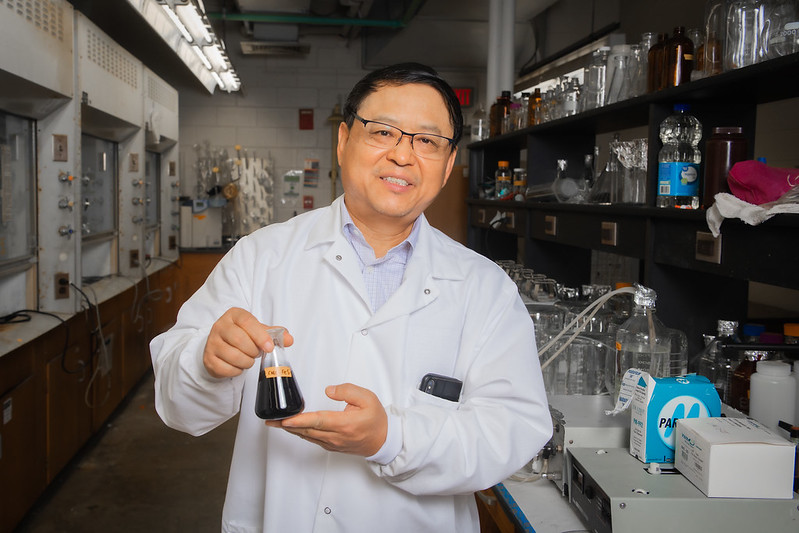
Dongye "Don" Zhao, a longtime professor in the Samuel Ginn College of Engineering, was one of two winners of the Creative Research and Scholarship Award at Auburn University's 2021 Faculty Awards.
Categories: Energy & the Environment, Engineering
Auburn projects receive $1.6 million in latest round of state research development funding
Auburn University has been awarded $1.6 million in research grants from the state of Alabama through the Alabama Research Development and Enhancement Fund.
The grants, administered by the Alabama Department of Economic and Community Affairs, are earmarked for research and development of four different sustainability projects housed in the Samuel Ginn College of Engineering.
Of the $1,590,470 total awarded to Auburn:
-
$727,677 goes to research for producing jet and diesel fuels from woody biomass and waste plastics;
-
$294,008 goes to researching and assessing the economic feasibility of converting organic wastes into bioplastics;
-
$268,353 goes to conducting research involving polymer smart machines; and
-
$300,432 goes to developing soybean hulls as a means to keep aquaculture feed pellets in mass, resulting in less waste and more intake by farm-raised fish and shellfish.
The researchers include principal investigator Sushil Adhikari, professor and director of the Center for Bioenergy and Bioproducts, Department of Biosystems Engineering; principal investigator Peter He, associate professor, and co-principal investigators Jin Wang and Mario Eden, Department of Chemical Engineering; principal investigator Jason Clark, assistant professor, Department of Electrical and Computer Engineering; and principal investigator Zhihua Jiang, assistant professor and director of the Alabama Center for Paper and Bioresource Engineering Science, and co-principal investigator Burak Aksoy, Department of Chemical Engineering.
Summaries of the projects are as follows:
Title: Advanced Liquid Transportation Fuels from Co-Liquefaction of Forest Biomass and Waste Plastics
Investigator: Adhikari
The goal is to advance economic development in the state and nationally through reinvigoration of natural resource-based industries and to establish new industries based on advanced liquid fuels from woody biomass grown in the state and the waste plastics collected from cities. Woody biomass prevalent in Alabama will be co-liquefied with waste plastics using a pyrolysis technology, which will then be subjected to hydrogen treatment to produce jet and diesel fuels.
Title: A Novel Biotechnology That Converts Agricultural and Municipal Waste into Bioplastics
Investigators: He, Wang and Eden
Alabama is one of the top agricultural producing states in the U.S., with annual agricultural exports exceeding $1 billion. As a result, there is a significant amount of organic wastes produced in the state, and Alabama ranks 14th among all states in terms of biogas generation potential from organic waste through anaerobic digestion, or AD. These organic wastes represent an underutilized renewable feedstock for biofuel and biochemical production. This project aims at researching and assessing the economic feasibility of converting organic wastes into bioplastics. Specifically, the project will develop and optimize a prototype of a patent-pending biotechnology that enables the conversion of organic wastes into bioplastics, and to assess its technical and economic feasibility at scale through techno-economic analysis, or TEA.
In the proposed technology, a microalgae-methanotroph coculture will be cultivated in a novel patent-pending circulation coculture biofilm photobioreactor, or CCBP, to convert biogas (both methane and carbon dioxide) derived from organic wastes into microbial biomass while simultaneously recover chemicals from AD effluent to produce treated clean water. The produced mixed microbial biomass can be economically processed to produce high-value bioplastics that is in rising demand. The project will advance the progress of the patent pending biotechnology towards commercialization, which has potential to create many new jobs in the state of Alabama.
Title: Polymer Smart Machines
Investigator: Clark
This project aims to research and develop the foundational building blocks of “polymechatronics,” which will enable the realization of 3D printable polymer smart machines. The research includes designing, fabricating, modeling and characterizing piezopolymer versions of traditional active mechanical and electrical building blocks such as actuators, sensors, energy harvesters, energy storers and analog and digital circuit elements. Compared to traditional devices, polymer smart machines are expected to be less expensive, easier to manufacture, biocompatible, recyclable, use less energy, operate over a larger range of temperatures, offer new functionalities and be more environmentally friendly.
Title: A Novel and Sustainable Feed Binder from Soybean Hulls: Scale-Up Production and Evaluation
Investigators: Jiang and Aksoy
The goal is to establish a low-cost, high-value and novel compound feed binder from soybean hulls, a co-product of soybean processing for oil and meal production. The specific objectives of this project are: 1) to scale-up feed binder production to around 1.5 kg/hour and optimize process conditions for production; and 2) to scale-up shrimp feeding trials simulating shrimp farming operations at a commercial shrimp operation in west Alabama.
Successful completion of this project will establish a high-value and novel compound feed binder platform using 100% soy hulls that is ready for commercial scale productions and applications with significant economic and environmental benefits: It will significantly enhance competitive advantage of shrimp farmers in Alabama by reducing their feed costs. This will, in turn, improve employment opportunities in seafood farming and processing sector, making more local seafood and services available to the citizens of Alabama. In addition, it will also significantly improve water quality by reducing leached nutrients.
Auburn is among five Alabama universities and one research institution sharing in grants totaling $4.85 million, according to the announcement released recently by the Alabama governor’s office.
“Our universities and research institutions in Alabama truly impact the world, and I am proud to continue investing in the important work they are doing,” Gov. Kay Ivey said. “This $4.85 million is an investment in the future of Alabama and the future of research.”
BY MITCH EMMONS

Samford Hall
Categories: Energy & the Environment, Food Systems, Engineering, Auburn In the News, Agriculture
USDA grants Auburn engineers $500K for timber, steel structure research
Four Auburn Engineering professors from three different disciplines will research the best way to design a sustainable, economically feasible building structure using timber and steel thanks to nearly $500K in federal and industry funds, including $237,000 from the USDA Forest Service Wood Innovations Grant program.
The goal of the project is not only to provide an environmentally friendly construction option but also a structurally efficient and widely applicable building method.
According to Kadir Sener, assistant professor of civil and environmental engineering and co-principal investigator on the project, steel and timber are ideal structural partners. The combination of steel and timber have a degree of structural performance that the individual materials could never reach, he said.
“In order to open the market for mass timber, we wanted to use it with steel structures, since timber alone is not economically feasible for high-rise buildings,” Sener said. “We ended up designing a very sustainable construction system, too.”
The current construction practice for mid-rise steel frame buildings uses 60-70% of the overall material in the floor alone. Additionally, most of the material used is concrete — an inexpensive, yet environmentally detrimental material which leaves a substantial carbon footprint. For this reason, cross-laminated timber panels will replace the concrete in this new design.
“Southern pine, the species that we are going to be using, is stronger than most other species of wood commonly used,” said David Rouche, assistant professor of civil and environmental engineering and specialist in the cross-laminated timber (CLT) component of the project. “It grows quickly, it's abundant in the southeast and the industry is growing so there is a lot of great potential for it in regards to this project.”
Replacing concrete floor elements with CLT panels has numerous advantages, such as significant reduction in structure weight, which will reduce gravity and seismic demands, reducing the carbon footprint by eliminating cement production and replacing time-consuming concrete field work. Additionally, it offers more convenient repair methods, providing more favorable structural performance and being a more sustainable option during repurposing or deconstruction.
The industry partners providing financial and technical support for the project include American Institute of Steel Construction, the Softwood Lumber Boards, the American Wood Council and Simpson Strong-Tie.
Media Contact: Jeremy Henderson, jdh0123@auburn.edu, 334-844-3591
BY VIRGINIA SPEIRS
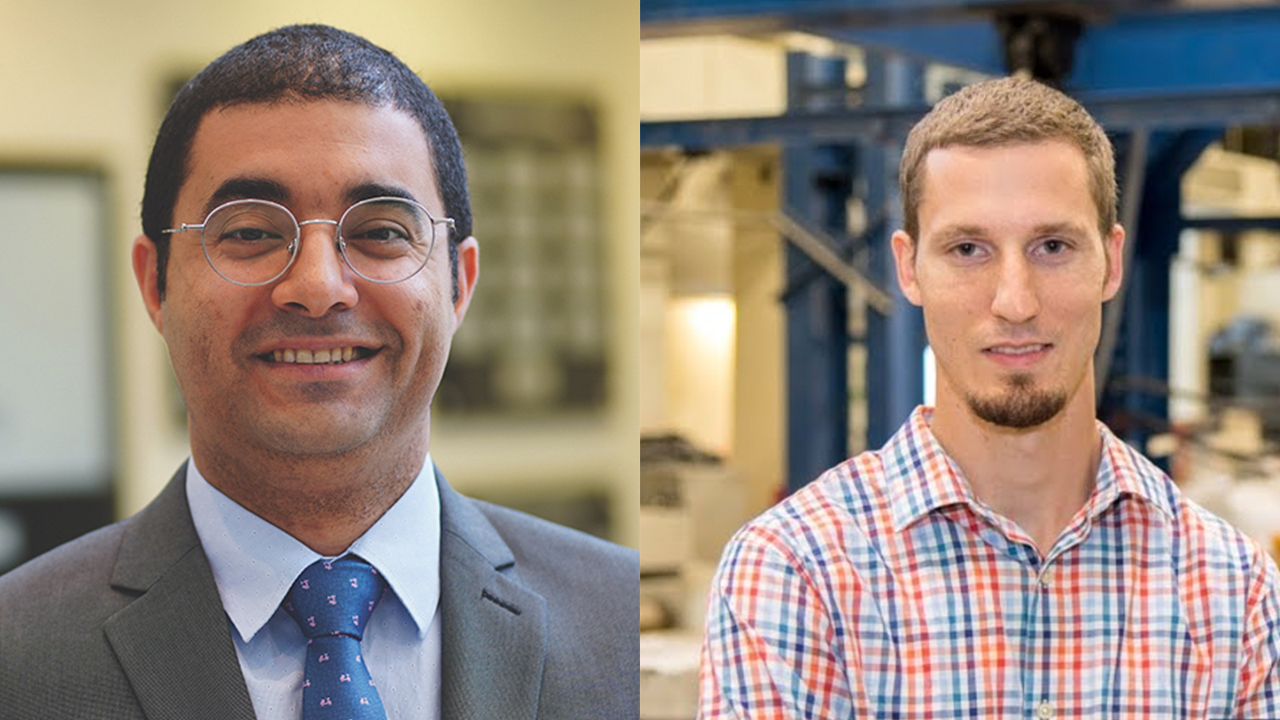
Pictured from the left: Kadir Sener and David Roueche
Categories: Energy & the Environment, Engineering, Manufacturing
Auburn-led research team develops biochemical breakthrough for renewable fatty acid ester production
Ongoing, Auburn-led research into biofuel and biochemical production just got a lot more eyes on it.
Supported by a $2 million U.S. Department of Energy award issued in 2018, as well as funding from the USDA's National Institute of Food and Agriculture, insights from the project led by PI Yi Wang, associate professor in Auburn's Department of Biosystems Engineering, were recently highlighted by the journal Nature Communications — for obvious reasons.
"Our findings represent a breakthrough," Wang said. "Production of biofuels and biochemicals from renewable resources through biological routes is environmentally sustainable and friendly, and is considered as a possible solution for the pressing issues related to energy crisis and environmental deterioration."
Despite tremendous investment over the past decades, developing viable efficient bioprocesses that can achieve high production has been much easier said than done.
Thanks to Wang's team, that's not as true as it once was.
"We have developed a potentially economically viable bioprocess that can produce fatty acid esters at unprecedented levels," Wang said.
Naturally occurring short-chain, fatty acid esters are the source of the sweet smell in fruits, such as apples, bananas, pineapples and strawberries. They typically find applications as artificial flavorings in food and cosmetics, as well as high-grade solvents used for manufacturing plastics and resins. In addition, esters could be a fuel of desirable properties which can serve as an additive to gasoline, diesel and even jet fuels.
"Conventionally, esters are produced from petrochemical-based fatty acids and alcohols through the chemical catalysis process called Fischer esterification," Wang said. "The reaction consumes a large amount of energy and generates tremendous wastes, and thus is not environmentally friendly.
"To avoid these problems, we chose to engineer non-pathogenic and safe Clostridium bacterial strains known for their natural ability to produce building blocks that could be used for ester synthesis. We envisage Clostridium as the ideal platform for ester production with such native genomic pathways.”
Clostridium strains, a group of bacteria that thrive in the absence of oxygen, are notoriously difficult to manipulate genetically. Wang’s group is pioneering versatile genome engineering tools for clostridia based on a new technology called CRISPR, putting his lab at the forefront of this particular research.
“To convert these building blocks into esters, we introduced genetic pathways from fruits or yeast responsible for ester synthesis,” Wang said. “With further systematic genome engineering, we were able to produce esters called butyl acetate and butyl butyrate at the highest bioproduction and lowest cost levels to date. And we did it using corn stover – a renewable product made from the stalk, leaves, husks and tassels that are left after corn is harvested – as the raw material."
According to Wang, a techno-economic analysis is essential to evaluate the economic practicality of a new bioprocess before it can be scaled up for commercialization.
“Our analysis suggested that butyl acetate production from corn stover through the developed bioprocess in this study could be competitive economically,” said Haibo Huang, an associate professor in the Department of Food Science and Technology at Virginia Tech, who led the techno-economic analysis in this study. “With further development, we anticipate economic feasibility of the process at commercial scale.”
The promise of Wang’s engineered strains for economic and environmental benefit have not gone unnoticed. Recently, a small Canadian biotech company engaged Wang to test drive the patent-pending strains. They plan to partner with larger companies to scale up production and advance the ester-based products to market.
“Dr. Wang put a lot of elegant genetic engineering into boosting ester production and that investment of time and talent is starting to pay off.” said Troy Brady, senior licensing officer at Auburn’s Office of Innovation Advancement and Commercialization. “The expectation is that with additional improvements to the strain and the economies of industry-scale production, the process will be more environmentally friendly and less expensive compared to current fossil fuel-derived processes. That translates to a win for everyone.”
Wang’s work has also been featured and highlighted by the editor of Nature Communications as one of the 50 best papers recently published in "Biotechnology and methods."
“We presented a concept of producing high-value and easy-separable end products — esters, like oil, don’t mix well with water and thus can be easily separated from the fermentation broth — as a strategy to improve bioproduction efficiency and economic viability,” Wang said. “Our principle of selecting the most appropriate microbial host for specific bioproduction is also inspiring.”
“I should also emphasize the importance of multidisciplinary collaboration on this work,” Wang said.
In addition to Auburn and Virginia Tech researchers, collaborators from Iowa State University, Tel Aviv University in Israel, Shandong University in China, and University of Science and Technology of China also contributed to the project.
The work was supported by the U.S. Department of Energy’s Office of Energy Efficiency and Renewable Energy through the Co-Optima initiative, through which Wang and collaborators produce bio-based esters to be blended into diesel fuel to reduce soot and greenhouse gas emissions, and to yield cleaner engine operation in cold-weather conditions. The work was also partially supported by USDA's National Institute of Food and Agriculture for bioprocessing organic waste streams into valuable bio-based products to enhance bioeconomy.
Media Contact: Jeremy Henderson, jdh0123@auburn.edu, 334-844-3591
BY JEREMY HENDERSON

Yi Wang (left), associate professor in the Department of Biosystems Engineering, works with post-doc Yuechao Ma in the lab. The research from Wang’s lab for renewable fatty acid ester production has been recently published and highlighted by the journal of Nature Communications.
Categories: Energy & the Environment, Engineering
Auburn University researcher ranked among the world’s most influential climate scientists
Within its recent ranking of the world’s most influential climate scientists, the international news agency Reuters has named Hanqin Tian, professor in Auburn University’s School of Forestry and Wildlife Sciences, one of the world's top scholars leading the study of climate change.
Tian, who serves as the Solon and Martha Dixon Endowed Professor and director of the International Center for Climate and Global Change Research, was ranked 118th out of 1,000 international scientists. Known as a preeminent scholar of global environmental change, Tian also leads Auburn’s Climate, Human and Earth System Science (CHESS) Cluster, an interdisciplinary group of faculty working to advance solutions to persistent environmental challenges.
“Dr. Tian’s contributions to the study of climate systems continue to advance solutions to many of the grand challenges facing our society, including protecting natural resources and developing environmentally sustainable solutions,” said Auburn Provost Bill Hardgrave. “His exemplary record of research and scholarship certainly makes him one of the most influential scholars in the field.”
Two of Tian’s former graduate and postdoctoral fellows, Chaoqun “Crystal” Lu and Wei Ren, also are included on the list.
To compile the list, Reuters data journalist Maurice Tamman developed a system of identifying and ranking climate academics according to the influence of their research. Examining more than 350,000 scholarly papers, Tamman’s criteria included evaluating the number of publications as of December 2020, the frequency of those citations relative to other papers in the field and the number of references in the press, social media and other public policy papers.
Tian’s groundbreaking research findings in the field of climate science have been featured in over 300 publications, including 10 papers published in the most prestigious scientific journals: Nature, Science and Proceedings of the National Academy of Sciences, or PNAS. Tian’s Nature paper, “A comprehensive quantification of global nitrous oxide sources and sinks,” made the Altmetric Top 100 most discussed article out of 3.4 million works in 2020 and was featured in 134 news outlets globally.
In 2019, Tian received a prestigious Andrew Carnegie Fellowship to support his work in climate change and food security. Tian was also elected as a fellow to the American Geophysical Union, or AGU, in 2020 for his outstanding and pioneering contributions to understanding the role of terrestrial ecosystems in controlling sources and sinks of greenhouse gases. AGU elects fewer than 0.1% of members to join this prestigious group of fellows.
Tian has co-led an international consortium of scientists from 48 research institutions in 14 countries under the umbrella of the Global Carbon Project, on which he serves as one of 12 scientific steering committee members and co-chair for the International Nitrous Oxide Assessment.
“International collaboration is essential for solutions to global climate change and sustainable development goals,” said Tian. “Therefore, strengthening partnerships for international research and education is of critical importance to Auburn University’s global profile and ranking.”
In the past decade, Tian has trained and prepared young scientists, including more than 10 doctoral students and postdoctoral fellows who have become faculty members across the United States, such as the two who also made the Reuters list: Lu, currently an assistant professor at Iowa State University’s Department of Ecology, Evolution and Organismal Biology, and Ren, now an assistant professor in the Department of Plant and Soil Sciences at the University of Kentucky.
“Lu and Ren had a decade-long training and research experience in climate science at Auburn, initially as graduate students, postdoctoral and then research fellows before they assumed faculty positions,” said Tian. “Both received NSF CAREER awards, the most prestigious award in support of early-career faculty.”
Janaki Alavalapati, dean of Auburn’s School of Forestry and Wildlife Sciences, said the U.S. administration acknowledges the growing need for climate scientists and initiatives relating to academics, research and outreach.
“With global recognition of Auburn’s unique strengths in climate science, Auburn is well-positioned to engage and lead some of these emerging sciences,” said Alavalapati. “To extend the intellectual reach of Auburn University at regional, national and international scales, it would be strategic and timely to facilitate a conversation to explore avenues to strengthen and expand AU’s climate science platform.”
BY TERI GREENE
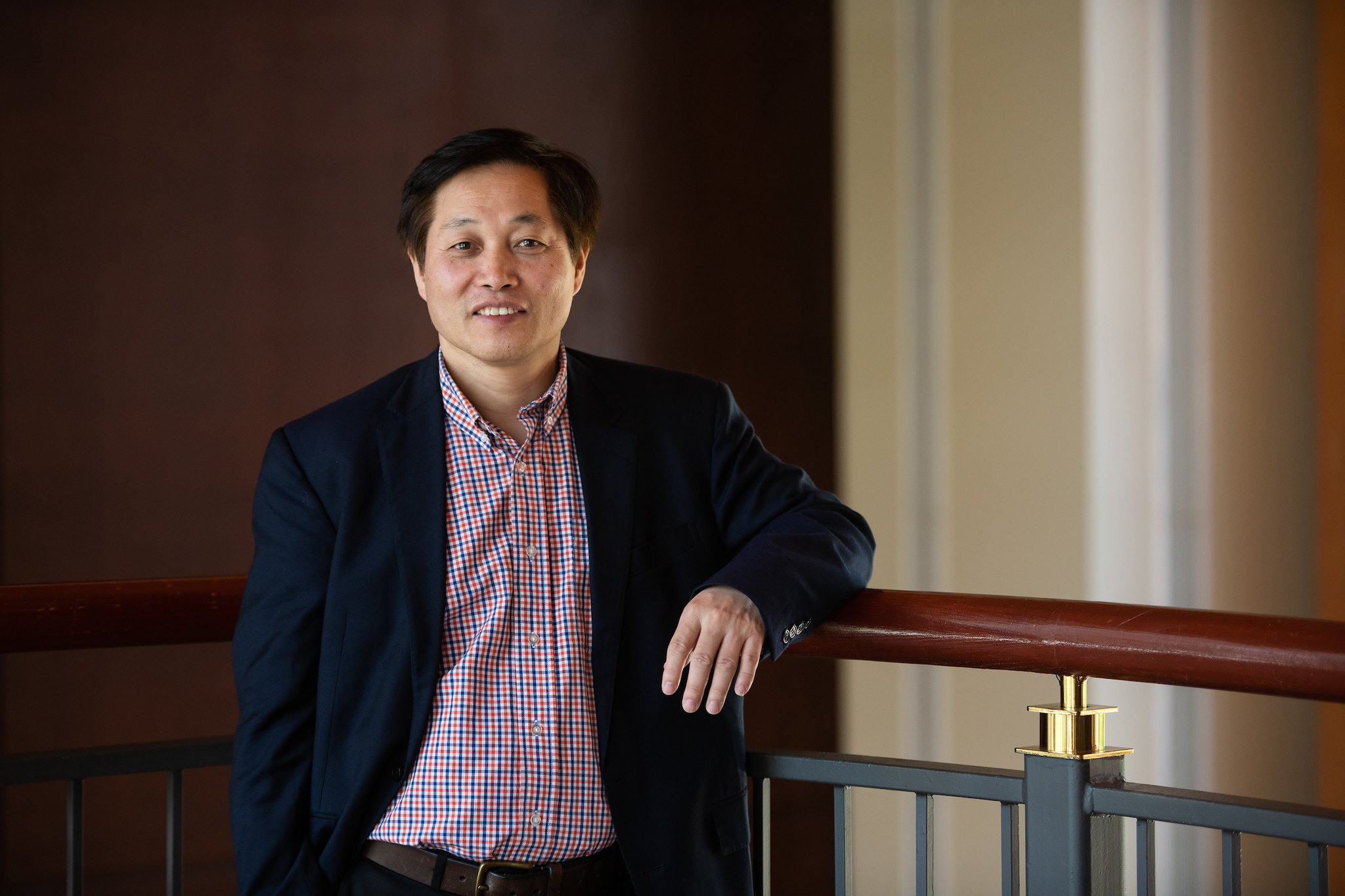
Reuters has named Hanqin Tian, Auburn University’s Solon and Martha Dixon Endowed Professor and director of the International Center for Climate and Global Change Research, to its list of top scholars leading the study of climate change.
Categories: Energy & the Environment, Auburn In the News
New Auburn University internal awards programs name winners for 2021
Auburn University launched two new pilot internal awards programs in 2021 and has named the program’s first recipients.
The Research Support Program, or RSP, and the Creative Work and Social Impact Scholarship Funding Program, or CWSI, were established by the Office of the Vice President for Research and Economic Development. Both programs provide a competitive internal funding source to support faculty and to provide an opportunity for them to experience a small-scale pilot and refine their projects before competing for larger awards.
“This is a pilot version of a larger intramural award program,” said Bob Holm, associate director of Proposal Services and Faculty Support, the unit that administers the programs. “It enables faculty to participate in a competitive funding program and make improvements to their projects before a commitment to a long-term award program is made. The pilot provides a platform to test what works and what does not.”
The RSP is intended to be an annual cycle funding program to foster the development and growth of innovative and transformational research activities. It builds on faculty expertise, stimulates interdisciplinary collaborations and strengthens seed research activities. It is a strategically focused Auburn investment that promotes promising and impactful new lines of research as well as the growth of collaborative and interdisciplinary teams to build the foundations of science, to overcome scientific and societal challenges and to promote and enhance the quality of life and wellbeing of individuals, groups and communities.
The CWSIS funding program fosters innovation and discovery and builds faculty reputation and competitiveness. Examples of prestigious recognition for CWSIS include: the McArthur Genius Award, the Gates Foundation Award, appointment to the National Council on the Humanities or the National Council on the Arts and an NSF Senior Advisor for Public Access. Disciplines associated with CWSIS include design and the arts, humanities and applicable areas within business, education, social sciences and health and well-being.
As a form of research, creative work poses questions and searches for the answers through iterative processes that demand intellectual rigor and hard work. Related scholarship narrates, analyzes and evaluates the production and products of creative work, or proposes new and innovative approaches to that work, including interdisciplinary collaborations and explorations. The goals of creative work and scholarship are ultimately tied to making significant contributions to a meaningful and dignified quality of life.
Social impact scholarship involves research that is specifically aimed at societal challenges and values both theoretical and applied domains to produce core knowledge and address persistent and complex issues to create a better world and improve the lives of all individuals. Research in this domain often engages a diversity of stakeholders with the goal of bringing beneficial effects and valuable changes to the economy, society, education, public policy, health and quality of life.
This year’s recipients are:
Research Support Program
Brian Albanese, College of Liberal Arts, $24,999.34; “Neurobehavioral sensitivity to negative reinforcement in suicide”;
Benjamin Bush, College of Architecture, Design and Construction, $24,987; “EX4C: Next Generation Blood and Vaccine Transport for Combat, Austere and Challenging Environments”; co-investigators: Lorenzo Cremaschi, Samuel Ginn College of Engineering; Joellen Sefton, College of Education; David Crumbley, School of Nursing;
Nathaniel Hardy, College of Agriculture, $25,000, “The Evolution of Virulence in Xylella fastidiosa”; co-investigator: Leonardo De La Fuente, College of Agriculture;
Amal Khalil Kaddoumi, Harrison School of Pharmacy, $25,000; “Amylin role in Alzheimer’s disease”; Co-Investigator: Ahmed Hamid, College of Sciences and Mathematics;
Peng Li, Samuel Ginn College of Engineering, $25,000, “Probing Novel Quantum Phases in van der Waals Magnet Fe5GeTe2”; co-investigators: Masoud Mahjouri-Samani, Samuel Ginn College of Engineering; Wencan Jin, College of Sciences and Mathematics;
Panagiotis Mistriotis, Samuel Ginn College of Engineering, $25,000; “Bioengineering tools to uncover the mechanisms of human mesenchymal stem cell migration”;
Kristina Neely, College of Education, $25,000; “Inhibitory Motor Control in Adults with ADHD,” co-investigator: William Murrah, College of Education;
Janna Willoughby, School of Forestry and Wildlife Sciences, $24,998; “How do environmental and genetic effects interact to determine individual fitness?”; co-investigators: Avril Harder, School of Forestry and Wildlife Sciences; Lana Narine, School of Forestry and Wildlife Sciences; Kelly Dunning, School of Forestry and Wildlife Sciences.
Creative Work and Social Impact Scholarship Funding Program
Junshan Liu, College of Architecture, Design and Construction, $20,000; “Digitally Preserving and Re-presenting Alabama’s Rosenwald Schools”; co-investigators: Gorham Bird, College of Architecture, Design and Construction; Richard Burt, College of Architecture, Design and Construction;
Alicia Powers, College of Human Sciences, $19,191.92; “A clinical-community pediatric wellness initiative to manage and prevent cardiometabolic diseases in children with limited resources in Alabama”; co-investigators: Jeanna Sewell, Harrison School of Pharmacy; Felicia Tuggle, College of Liberal Arts, Sarah Watts, School of Nursing.
More information about these and other funding support programs supported by the AU Office of the Vice President for Research and Economic Development can be found by clicking here.
BY MITCH EMMONS
Categories: Energy & the Environment, Health Sciences, Food Systems, Engineering, External Engagement, OVPRED, Creative Scholarship, Life Sciences, Agriculture
Biosystems faculty to train undergraduate researchers in bioprocessing with NSF award
Reduce, reuse, recycle. Especially if you can research cool, new ways to do it.
A team of Auburn faculty recently received a grant from the National Science Foundation to host a research experiences for undergraduates (REU) site, a program in which a university hosts 10 undergraduate students to do scientific research each summer. The project will focus on ways to convert waste into new and useful products through bioprocessing.
Led by Brendan Higgins, assistant professor of biosystems engineering and Sushil Adhikari, Alumni Professor of biosystems engineering and director of the Center for Bioenergy and Bioproducts, the 10-week program will be offered to a selection of students from a pool of undergraduate applicants studying at universities around the nation, who will each be paired to work directly with an Auburn University faculty member.
“The purpose of our site is to train them in research focused on converting waste materials and waste products back into products of value,” Higgins said. “So we have a team of faculty across the university who do research in this area, and we have four projects that the students will engage in.”
The program received $391,099 from NSF, with a focus on giving opportunities to underrepresented students. Students from around the country who go to universities that do not have research programs will have priority when it comes to this program, Higgins said.
“NSF’s goal when they created this program was to maximize the diversity of students that are able to experience research,” Higgins said. “We’re particularly targeting students who might not otherwise have the opportunity to do this.”
Students will do research either in a lab or in the field, depending on what kind of work is necessary for the individual project, Higgins said. Most of the 10-week period will be dedicated to research. A smaller amount of time, however, will be dedicated to professional development.
“The students are going to be learning how to become a researcher,” Higgins said. “Another theme of our site is teamwork. The communication aspect of science is also a big component.”
To do that, students will be encouraged to co-author a paper about their research with their faculty mentor, Higgins said.
“I kind of have this viewpoint that if you didn’t tell someone you did something, you didn’t do it,” Higgins said. “Also, publishing is really part of the scientific process. Telling people what you’ve discovered is really important.”
Some of the projects that the students will be working on include: making sensors for disease detection out of waste biomass, making adhesive out of discarded plant matter and upgrading agricultural waste water into protein. All of these projects will be significant in helping convert waste into useful products, which will help our planet long-term, Higgins said.
“The most impactful outcome we want from an REU site is a change in perception among the students,” Higgins said. “We want to know how the attitudes of our students changed throughout the program, and if they began to see themselves as a researcher during this program. Our hope is that this will reinforce and strengthen the desire in our students to continue their research career.”
The application for this REU site will open in September.
Media Contact: Cassie Montgomery, cmontgomery@auburn.edu, 334.844.3668
BY VIRGINIA SPEIRS
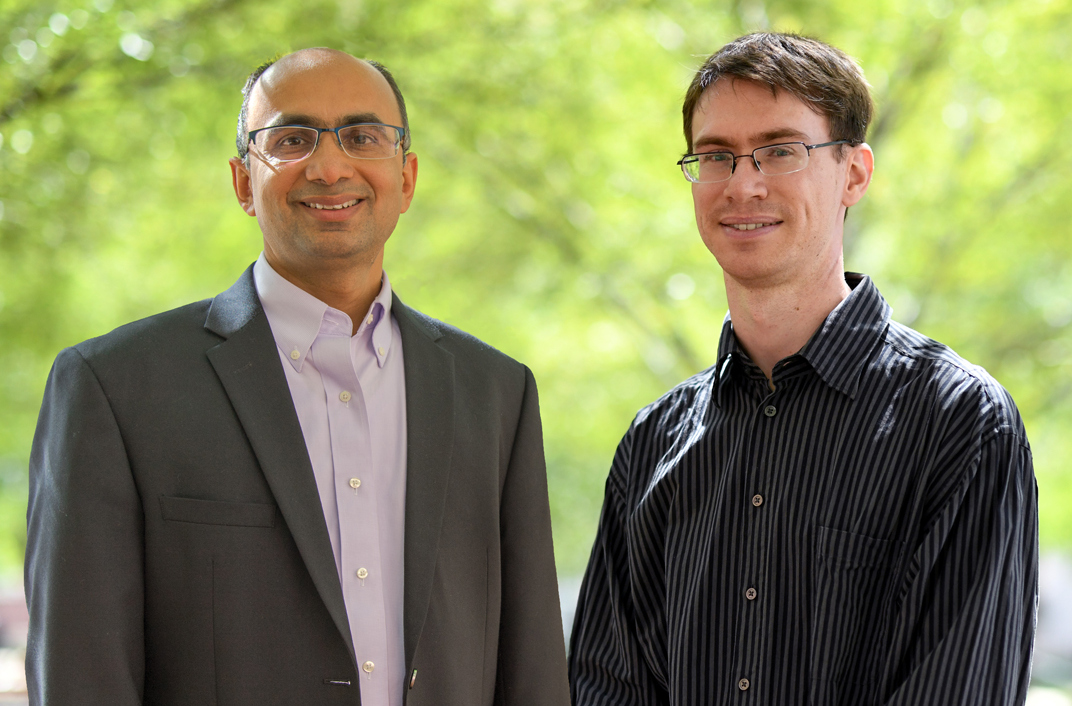
Sushil Adhikari and Brendan Higgins
Categories: Energy & the Environment, Food Systems, Engineering, Undergraduate Research, Agriculture
Auburn entomologist seeks alternatives for urban pesticide use
More than 80 percent of Americans live in expanding urban areas, and suburbanites are still craving greenspace as farmland gives way to housing developments and big-box stores.
The problem is that proud homeowners use significantly more insecticides than farmers, and these insecticides kill all insects, not just the pests. Insecticides also end up in creeks and rivers through runoff, leaching or accidental release, and exposure has been linked to human health problems.
David Held, chair of the College of Agriculture’s Department of Entomology and Plant Pathology, seeks to improve pest management in urban landscapes and turf grass systems (such as lawns, city parks, stadiums and golf courses) through a better understanding of ecological relationships in the systems. In particular, he has been studying Japanese beetles, one of the most economically important pests in North America, and now Europe, for 20 years.
This tiny, copper-and-green beetle packs an oversized punch as a threat to a wide range of plants, from rose bushes to birch trees.
The adult beetles attack foliage, consuming all the leaf material between the veins, leaving just a lacy skeleton. The immature stage, called a white grub, chews through grass roots, causing the turf to brown and die.
“This beetle can damage more than 300 species of plants, including row crops, fruits and ornamental horticultural crops,” Held noted. “And the grub, which consumes grass roots, accounts for most of the insecticide applied to suburban lawns.”
The Japanese beetle was introduced to the U.S. accidentally in the early 1900s. Before that, the pest was found only on the islands of Japan, isolated by water and kept in check by natural predators.
The grubs probably hitchhiked in the soil on imported iris roots. Without anything to check their growth, the beetle proliferated, becoming a major problem.
Held and his team are taking a multi-pronged approach to controlling this pest, as well as others. For one thing, they have evaluated the use of “plant growth-promoting rhizobacteria” (PGPR), which stimulate growth in the root system of a plant. These beneficial microbes colonize the soil around grass roots (the Greek root “rhiza” actually means “root”), forming a symbiotic relationship that encourages enhanced root growth, making the roots stronger and more capable of resisting pests.
Held’s team has confirmed that grass colonized by PGPR becomes more resistant to root-feeding insects, and two patent applications outline how PGPR can be used in conjunction with, or in place of, insecticides for integrated pest management of root-feeding pests.
He has also shown that PGPRs can be mixed with the insecticides currently used to manage root-feeding white grubs or mole crickets. In solution with insecticides, the bacteria can be sustained for at least two weeks.
Team members are Joe Kloepper, an emeritus professor in Entomology and Plant Pathology; John Beckmann from Entomology and Plant Pathology; and Adriana Avila Flores from the Department of Biological Sciences.
They are also experimenting with RNA interference (RNAi), which allows identification of a specific gene that is essential to the survival of a particular pest species and unique to that species. That specific gene is then targeted and “turned off.” Organisms without the targeted gene are not affected.
In particular, Held is experimenting with injecting the Japanese beetle with a small piece of double-stranded RNA (dsRNA), which is present in all cells and acts as a “messenger” that carries instructions from DNA to control synthesis of proteins such as enzymes.
Previous work by Held’s student showed that Japanese beetles rely on particular groups of enzymes to break down the protective toxins in plants, so their research is trying to target those enzymes. So far, they have attempted to target four genes; three in adults and larvae and one in larvae only.
“We have been successful in targeting one gene in larvae and are hoping to continue this research,” Held said. “We hope to eventually develop a commercial application, possibly a topical spray that would deliver the dsRNA like an insecticide.”
Held’s work has taken on added urgency because the Japanese beetle was discovered in Italy in 2014 and had spread to Switzerland by 2017. Europe does not allow the import of biological controls (which manage crop pests by using their natural enemies instead of pesticides), nor do EU countries have the insecticide options available in the U.S.
Targeted control with RNAi would limit the negative effects of insecticide applications and could be used in Europe as well as the U.S. Another possibility is to engineer the PGPR bacteria, which are already able to enter turfgrass with ease, to produce novel dsRNA while living temporarily inside plants. This would enable a plant able to temporarily defend itself against Japanese beetles without the use of chemical insecticides.
Insecticides are necessary to prevent damage from insects to lawns and landscape plants, but chemical insecticides are rarely selective and kill beneficial insects along with pests; in fact, insecticides are one cause of the precipitous decline in honeybees.
“Development of alternative methods of pest control that are able to target specific pests, without affecting other insects, wildlife or humans, is essential,” Held said. “And we absolutely must develop new, reduced-risk technologies to lessen our dependence on chemical insecticides.”
BY JACQUELINE KOCHAK
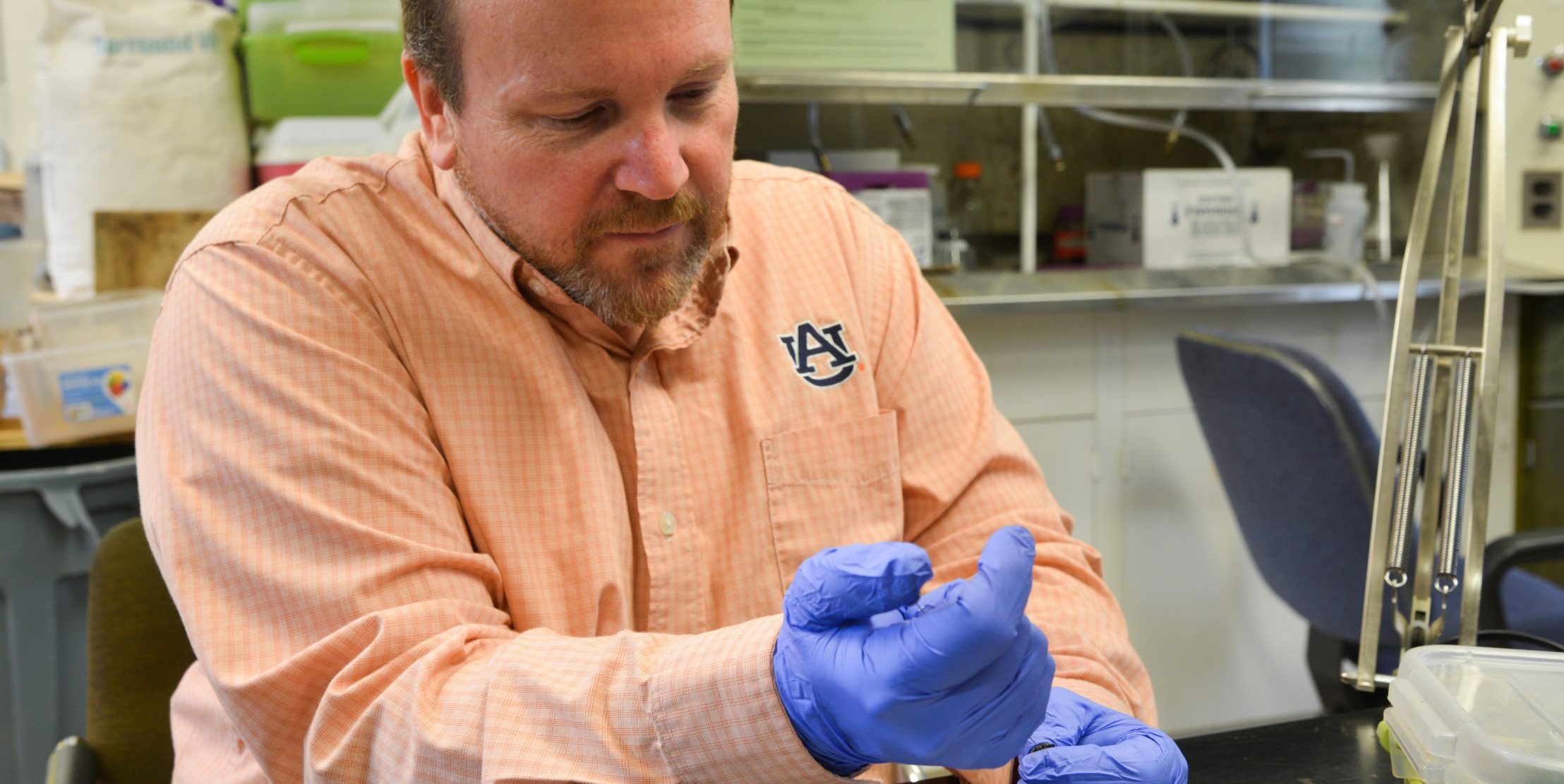
David Held
Categories: Energy & the Environment, Food Systems, Agriculture
Auburn University researcher developing management practices for problem algal blooms in aquaculture
Aquaculture is the fastest-growing sector of animal agriculture; however, sustainable expansion and intensification of aquaculture is severely hampered by issues related to aquatic animal health.
A researcher in Auburn University’s School of Fisheries, Aquaculture and Aquatic Sciences is focused on developing programs to help the aquaculture industry better manage problematic algae growth in ponds and other water sources.
Alan Wilson, professor and assistant director for instruction in his school, is partnering with the Aquatic Animal Research Unit of the U.S. Department of Agriculture-Agricultural Research Service, or USDA-ARS, to conduct research involving catfish growers in west Alabama.
“We are currently focused on projects involving 21 ponds across five catfish farms,” Wilson said. “We are monitoring algal growth and gathering environmental data to help those growers establish best management practices for water quality.”
Wilson says algal blooms can be a normal occurrence in ponds with elevated nutrients, but there is an urgent need to manage water quality in aquaculture ponds that favors beneficial algal communities versus those that can be harmful to the fish.
“A ‘green pond’ can be a good thing in the healthy context,” Wilson said. “Algae are important, as they produce oxygen. But blooms can also become too abundant with harmful types of algae, creating conditions that kill the fish. This is what our control focus is on.
“We are developing new detection, prevention and control measures for harmful algae to reduce fish/shellfish mortality, safeguard animal performance and ensure product quality.”
Harmful algal blooms are occurring with increased regularity and severity in freshwater, estuarine and marine systems around the world, according to Wilson. These harmful algal blooms have brought about large-scale catastrophic losses of valuable catfish and shrimp, particularly in the summer months immediately prior to harvest.
In Alabama alone, since 2015, mortality levels attributed to harmful algal blooms have surged to nearly 1 million pounds of catfish annually, according to Wilson’s USDA-ARS collaborator Benjamin Beck.
Moreover, harmful algal blooms are thought to exert profound chronic effects, such as causing the fish to have less-than-normal feeding rates, thereby increasing the time to harvest, along with stress and immunosuppression that can potentially predispose fish to parasitic and bacterial disease.
Wilson conducts his research through his lab at Auburn, which includes a team of four graduate students, five undergraduate students, one high school student and one technician, in collaboration with scientists located at federal and state agencies, nonprofit environmental groups and universities around the world.
“We are starting our second year of this five-year project,” Wilson said. “We collect monthly water samples from each pond that allow us to monitor changes in water conditions with the objective of developing management tools to assist those aquaculture growers in managing their ponds more effectively and efficiently.”
While Wilson’s current USDA-ARS-funded project focuses largely on catfish growers, his lab is broadly interested in understanding the ecology of freshwater lakes, ponds and reservoirs.
“We study the abiotic and biotic mechanisms mediating the promotion or control of freshwater harmful algal blooms and taste-and-odor events in aquaculture ponds, recreational reservoirs and drinking water reservoirs,” Wilson said.
Wilson routinely helps homeowners understand factors associated with harmful algal blooms in their private ponds. He also conducts water quality analyses to determine the threat that algal toxins pose to a variety of aquatic food webs, livestock and zoo animals.
BY MITCH EMMONS
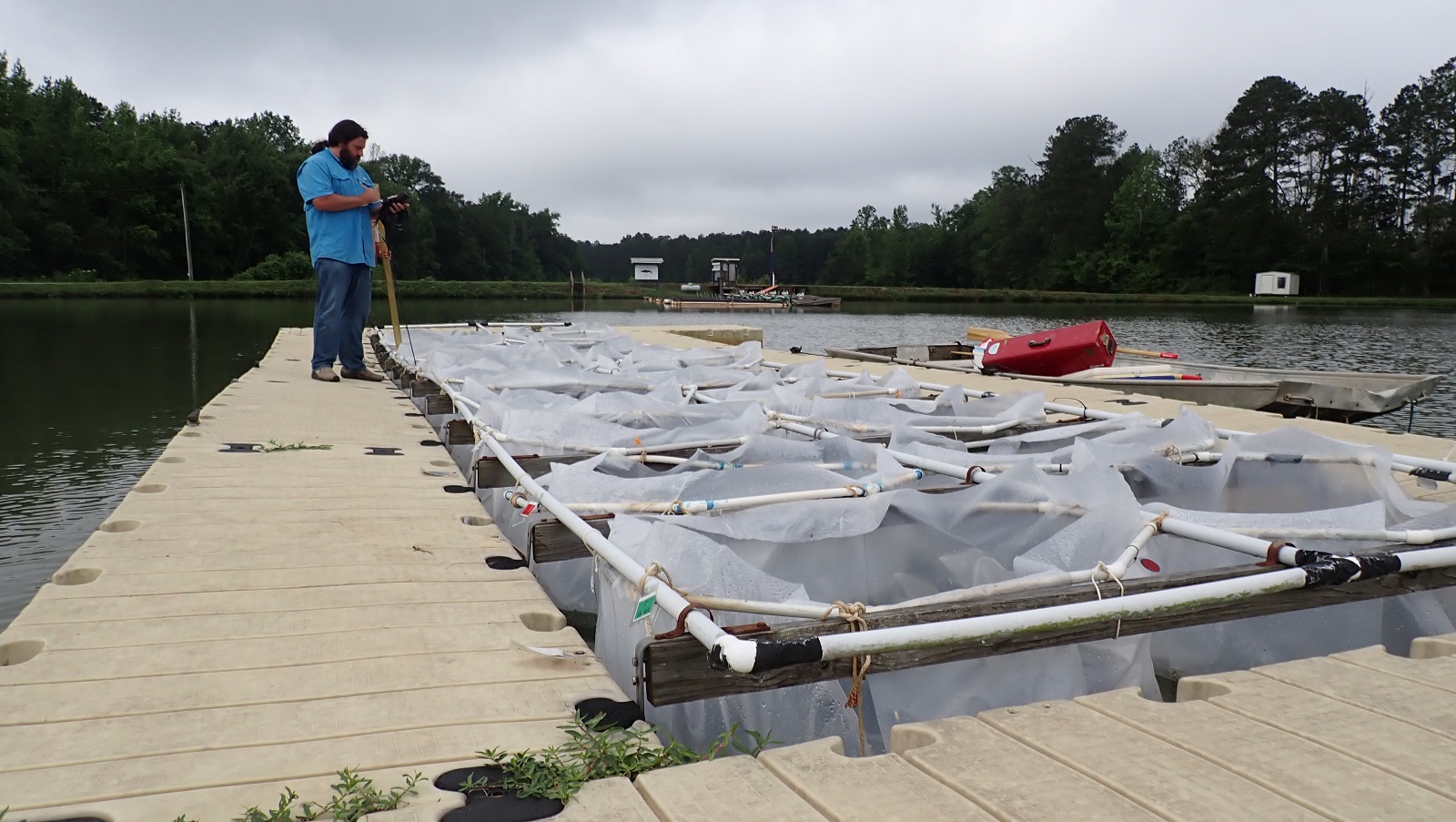
Alan Wilson, professor and assistant director for instruction in Auburn’s School of Fisheries, Aquaculture and Aquatic Sciences, is partnering with the Aquatic Animal Research Unit of the U.S. Department of Agriculture-Agricultural Research Service, or USDA-ARS, to conduct research involving catfish growers in west Alabama.
Categories: Energy & the Environment, Food Systems, Undergraduate Research, Agriculture
Auburn’s pathogen detection technology may improve food, water safety applications
A pathogen detection system that rapidly isolates contaminants in large liquid volumes may enable improvements for food and water safety applications.
Developed by researchers in the Department of Materials Engineering in the Samuel Ginn College of Engineering at Auburn University, the technology uses magnetoelastic sensors that, when placed in a magnetic field, resonate to indicate the presence of a pathogen. Professor Emeritus Bryan Chin and McWane Professor ZhongYang “ZY” Cheng have been developing the technology for some 15 years, according to Brian Wright with Auburn’s Office of Innovation Advancement and Commercialization, or IAC.
“This technology has been proven in the laboratory prototype, and the university is seeking a development partner to take this forward through commercialization,” Wright said.
Current pathogen detection methods may take hours, or even require overnight shipping or incubation steps to obtain results, according to the IAC. This magnetic system allows for rapid, specific detection of target pathogens in large volumes of fluid, such as wash water, irrigation water, food effluent and beverages such as milk or fruit juices.
“For example, an entire tank of produce wash water could be examined for salmonella, with results provided in a matter of minutes,” Wright said.
Chin and Cheng have worked together for nearly 20 years at Auburn, but not all of their research and development has been in the realm of detection technology.
“We also have worked on specialized polymer development and in developing actuators that can serve as artificial muscle,” Cheng said.
“We began working on this pathogen detection technology because we were looking for a way to detect a small number of bacteria in a large volume of liquid,” Chin said. “In the food industry, this would enable the examination of large quantities of food for very small numbers of pathogens.”
IAC describes the development: Auburn’s base technology uses magnetoelastic sensors. When placed in a magnetic field, these inexpensive sensors change their resonance frequency based on their mass. Thus, when coated with a bio-recognition element such as phage or antibodies, a binding event can be easily detected based on a change in resonance frequency.
“It is kind of like a sound produced when someone wets the edge of a glass containing an amount of liquid and rubs the edge with their finger,” Wright said. “Changing the amount of liquid in the glass can change the pitch of the sound produced by that rubbing. These magnetoelastic sensors can be coated with a pathogen-specific antibody and tailored to detect a specific pathogen by producing a specific alarm sound.”
The sensors are arranged inside a pipe or other vessel that carries the fluid to be tested. Because they are magnetic and can be arranged in various arrays, they monitor in real time as the flow passes through.
“This system has the advantages of being rapid, highly sensitive and non-clogging, and it is able to be applied to large-volume testing. It also is recoverable, meaning that bound pathogens can be recovered for further analysis,” Wright said.
According to the IAC, this technology has demonstrated its effectiveness for multiple pathogens in multiple sample fluids. The technology also has application for other detection methods, including with smaller samples and on surfaces.
BY MITCH EMMONS

Auburn University Professor Emeritus Bryan Chin (left) is partnering with McWane Professor ZhongYang "ZY" Cheng to develop a pathogen detection system that rapidly isolates contaminants in large liquid volumes and may enable improvements for food and water safety applications.
Categories: Energy & the Environment, Food Systems, Engineering
Two Auburn University students receive National Science Foundation fellowships
Two Auburn University students, Che Ka and Grant Wilkinson, have been awarded 2021 National Science Foundation Graduate Research Fellowships, or NSFGRF—a fellowship program designed to help ensure the vitality and diversity of the scientific and engineering workforce in the United States.
Each fellowship consists of three years of support accessible over a five-year period. For each year, the NSF provides a stipend of $34,000 to the fellow and a cost-of-education allowance of $12,000 to the degree-granting institution.
“We are especially happy to see a continuation of Auburn students being awarded this prestigious fellowship,” said Tiffany Sippial, director of Auburn’s Honors College. “The NSFGRF recognizes student potential for significant achievements in science and engineering research, and these awards are a perfect fit for the work being done at Auburn University.”
Ka, of Auburn, Alabama, is a biological sciences doctoral student in the College of Sciences and Mathematics. He moved to Auburn from Senegal, Africa, at age 14. His research aims to better understand mechanisms that cells use to orchestrate their activities during animal embryonic development and help reveal how these mechanisms are tweaked through evolution to give rise to the diversity of animal forms we see today.
“This major fellowship from the NSF not only supports my research at Auburn, but also bolsters my efforts to increase science communication and share our work with the broader community,” Ka said.
Wilkinson, of Chelsea, Alabama, is a spring 2021 Honors College graduate with a double major in chemistry and physics in the College of Sciences and Mathematics. His research focused on the photophysical properties of lanthanide and actinide coordination complexes. He hopes to develop sensors for uranium to be detected in environments suspected of contamination.
“I strongly encourage anyone interested in graduate research to apply [for NSFGRF], because it prepares you like few other things can,” said Wilkinson, who served as the spring 2021 graduation marshal for the College of Sciences and Mathematics.
Alex Sauer, coordinator for scholarships and research for the Honors College, added, “This is a truly transformative opportunity for students who are starting careers in research, and we are so happy that Auburn students are continuing to be recognized for their amazing work.
“We are also so grateful for the time and effort that advisors, mentors and recommenders have dedicated to supporting these students. Nationally competitive awards are never won solely by any one individual’s efforts.”
The NSFGRF program recognizes and supports outstanding graduate students in NSF-supported STEM—science, technology, engineering and mathematics—disciplines who are pursuing research-based master’s and doctoral degrees at accredited U.S. institutions.
More information is available at www.nsfgrfp.org or by contacting Sauer at ras0046@auburn.edu.
BY WADE BERRY
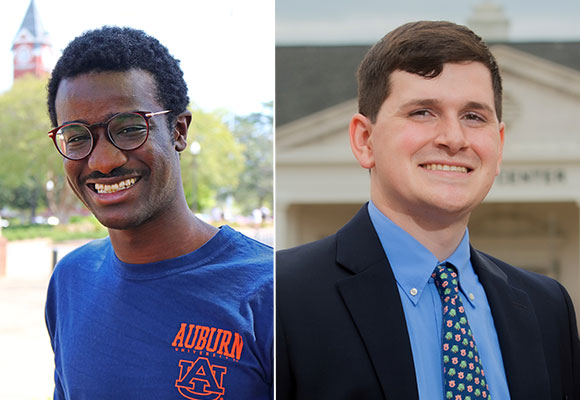
Two Auburn University students, Che Ka and Grant Wilkinson, have been awarded 2021 National Science Foundation Graduate Research Fellowships,
Categories: Energy & the Environment, Life Sciences
Hoang earns first NSF CAREER Award for Department of Mathematics and Statistics
Auburn University mathematics professor Thi-Thao-Phuong Hoang hopes to use applied and computational mathematics to help scientists better understand and potentially solve real-world problems like water contamination and climate change, and the department’s first-ever National Science Foundation, or NSF, CAREER Award could help her do exactly that.
“My job is to develop, analyze and implement numerical methods to solve the mathematical models of those real-world physical processes and phenomena,” said Hoang, just the second professor in the state of Alabama to receive an NSF CAREER award in mathematical sciences since it was created in 1995. “I am passionate about interdisciplinary research, and I want to do both the theoretical and practical things, and I find it more motivational when I see the application of my work and how it is used and applied to better understand our world.”
A rising star in Auburn’s Department of Mathematics and Statistics in the College of Sciences and Mathematics, or COSAM, Hoang was notified in February about the historic award that will provide the Vietnam native and her team nearly $440,000 in funding for the next five years. The prestigious honor—administered by the NSF’s Faculty Early Career Development Program—was both humbling and inspiring for Hoang, an assistant professor.
“I’m very excited about it, and it’s a great thing to know all of your hard work has paid off,” said Hoang, winner of the department’s Jack B. Brown Endowed Faculty Award for 2021-23. “You feel very motivated to continue with what you’re working on now that you have the resources and recognition. I am also grateful to my advisors, mentors and collaborators for their constant support and valuable advice.”
Hoang hopes to use the award to recruit and train undergraduate and graduate students, purchase state-of-the-art computer equipment, attend conferences and attract elite-level mathematicians to Auburn for discussions and speaking engagements. By increasing her team’s size and capabilities, Hoang will look to use her expertise in applied and computational mathematics, as well as numerical analysis, on a grander scale to help scientists and colleagues potentially solve real-world environmental problems.
In addition, she will bolster COSAM’s effort to attract and support high school students via the Auburn University Summer Science Institute, or AU-SSI, an educational enrichment program administered by COSAM’s Office of Outreach. It is designed for highly motivated rising 11th- and 12th-grade students from Alabama and Georgia with a high aptitude and interest in pursuing a degree in science, math or a related field.
“As part of the educational component of my CAREER project, I will develop curricular modules in computational mathematics at the AU-SSI to provide young students early exposure to applied mathematics and inspire them, especially girls, to pursue a career in mathematics,” said Hoang, recipient of COSAM’s 2020 Dr. Robert K. Butz Award for Excellence in Teaching.
Hoang earned her bachelor’s in mathematics from Ho Chi Minh City University in her native Vietnam, completed her master’s in applied math at University d’Orleans on Orleans, France, then lived in Paris for nearly four years while she completed her doctorate in applied mathematics from Universite Pierre et Marie Curie. After teaching at her alma mater in Vietnam from 2014-17, she completed a postdoctoral fellowship at the University of South Carolina—where she was part of a team working on a research project about climate and earth system modeling funded by the Department of Energy—before joining the Auburn faculty as a tenured-track professor in 2018.
Fluid dynamics—which provides methods for studying the evolution of ocean currents, weather patterns, plate tectonics and even blood circulation—and how it applies to real-world situations, is an area of interest for Hoang and her team. By designing algorithms to study how the ocean interacts with coasts and the rest of an area’s ecosystem, Hoang hopes to use math to contribute to scientists’ understanding of how the world is changing and the depth and breadth of everyday environmental dilemmas.
“Fluids are everywhere in our world, and I’m [particularly] interested in environmental science,” Hoang said. “So, I’ve been doing nuclear waste repository simulations, where you simulate the transport of radiation nuclides and where they’re buried in the ground. I do ocean modeling, so I simulate the movement of water in the ocean and things like that, water cycles and the interactions between surface and sub-surface flows.”
Hoang also has long-term goals for her research, including streamlining efficiency and accuracy of numerical methods and their parallel implementation.
“My research is Multiphysics and multiscale systems,” she said. “These systems are everywhere and are difficult to simulate correctly. The challenges come from the fact that you have different physics which occur on different spatial and time scales; moreover, they’re coupled together, so there’s some interaction between them which needs to be considered in the simulation.
“Our goal is to develop stable, accurate and efficient numerical methods based on domain decomposition and local time-stepping for solving large-scale Multiphysics multiscale problems.”
Department Chair Ash Abebe has been impressed with Hoang’s work ethic and is excited about what she has brought to Auburn, as well as what her team can achieve in the future.
“Dr. Hoang’s research program, focused on developing novel numerical methods and numerical analysis for partial differential equations, is a very important component of the department's research portfolio,” Abebe said. “Her research has broad applications from transport through porous media, to climate modeling, to solid mechanics and is supported by two concurrent NSF grants she has obtained since coming to Auburn in 2018 and for which she is the sole primary investigator. This award is an indicator of the growing profile of the Department of Mathematics and Statistics as a research leader in the state and the nation.”
Hoang said she and her husband, Tuan, and 6-year-old son, Minh, have thoroughly enjoyed living in Auburn and becoming part of the Auburn Family. She feels the community’s warm and welcoming nature will help provide a great environment for her research work to thrive.
“I think Auburn is such a great place to live, honestly,” she said. “I love being here, and the people around me are all friendly. I can feel the spirit, and so many people with the same interest is really awesome. The COSAM family is great, and I really feel a supportive environment from the people here.
“I feel very lucky.”
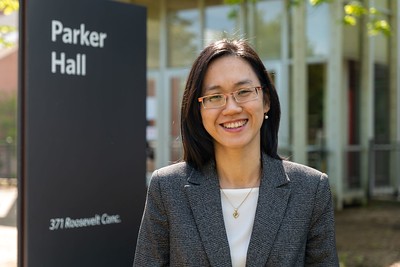
Auburn Assistant Professor Thi-Thao-Phuong Hoang has won the first National Science Foundation CAREER Award in the history of the Department of Mathematics and Statistics. She hopes to use applied and computational math to help solve real-world problems like climate change.
Categories: Energy & the Environment, Health Sciences, Science, Technology, Engineering and Mathematics (STEM)
Fired up: Auburn University researchers studying how controlled burns could help mitigate effects of wildfires
The news is often filled with stories about wildfires and the widespread damage caused when they burn out of control. A combustion expert in Auburn University’s Department of Aerospace Engineering in the Samuel Ginn College of Engineering is studying how the absence of managed control burns could be a significant contributor to this problem.
Assistant Professor David Scarborough and his graduate research assistant, Daniel Stubbs, are conducting studies on the characteristics of wildfire burning and the ways that naturally occurring fuels—largely ground litter vegetation—interact. Their objectives include, among other things, collecting data to support the use of prescribed—or controlled—burning as a means for mitigating the devastation caused by wildland fires. John Kush, a research fellow and forest ecology expert in the School of Forestry and Wildlife Sciences, has also contributed to the ongoing project.
“We are seeking to learn more about how wildfires and the fuels that feed them interact,” Scarborough said. “Forestry researchers are not usually focused on combustion research, so we joined with forestry in this study. We are trying to use our expertise in combustion and fluid dynamics to serve and contribute to a large, important state and regional industry. This project gives us a platform to conduct relevant research and compile valuable data.”
Using their laboratory apparatus—dubbed the Wildland Fire Integrated Research Experiment, or WildFIRE—Scarborough and his team simulate wildland fires under a variety of conditions and fuel compositions. WildFIRE is a laboratory-scale experiment that incorporates high-speed, high-resolution optical diagnostics along with more traditional diagnostics, such as fuel mass consumption, temperature and emissions measurements, to investigate the effects of fuel composition and moisture content, terrain slope and wind speed on the combustion of wildland fuels. WildFIRE is used to obtain important data on such factors as flame height, flame propagation speed, fuel consumption rate, harmful emissions and residual fuel mass to compare with and improve modeling tools that are used to simulate wildfires.
“Our primary focus is on combustion of loblolly pine needles, because this is widespread in Southeastern forests,” Scarborough said. “We are trying to better understand how pine needles burn under a variety of natural conditions. We also employ optical diagnostics to observe flames to visually measure various flame characteristics. By studying these situations under controlled conditions, we are able to gather very accurate data and make predictions about how a wildfire will react under specific situations and conditions.”
Their study has been underway for a number of years. It began around the time of the huge Smoky Mountains wildfire in the Gatlinburg, Tennessee, area in 2016. More recent wildfires in the western United States have spawned further interest within the forestry and fire safety communities, according to Scarborough.
Scarborough noted the economic impact of the forestry industry as the catalyst behind this research: “Forestry is a major part of the Alabama, United States and world economies.”
According to the Alabama Forestry Commission, Alabama forests generate more than $21 billion in revenue annually and provide 122,000 jobs. There are 23 million acres of timberland in Alabama, accounting for 69 percent of the total land area in the state.
Alabama has the third most timberland acreage in the 48 contiguous states, behind only Georgia and Oregon. Wildfire poses significant risks to wildlife, forests, human life and property, not to mention the potential environmental impact in both smoke and harmful, gaseous pollutants, he explained.
“Wildfire was once a common, frequently occurring, natural disturbance initiated most commonly by lightning in numerous ecologically important ecosystems,” Scarborough added. “However, across much of the modern landscape, the fire process has been significantly altered and sometimes eliminated through human intervention. In the absence of fire, leaves, evergreen needles and small sticks accumulate on the forest floor over the period of many years. Furthermore, many invasive woody species such as wax myrtle and yaupon holly grow uncontrolled under the tree canopy.
“Therefore, fire, when it does finally occur, as it most assuredly will, often rages out of control, propagating rapidly with high-heat intensity and long flames as it consumes many years’ worth of accumulated fuel and woody plants.”
Foresters have long known that a practice known as prescribed burning is a valuable and effective fire control application, according to Scarborough, but this practice is not applied as frequently for a number of reasons.
“Prescribed, or controlled, burning is a type of intervention that seeks to provide the benefits of natural wildland fires while minimizing the potential threats to property and other anthropogenic concerns,” Scarborough said. “These prescribed burns, when repeated at frequent intervals, serve to consume the fuel materials on the forest floor while managing invasive species. This, in turn, reduces the amount of potential fuels accumulated on the forest floor.”
Although prescribed fire reduces the risk of damaging wildfire and promotes forest restoration and wildlife habitat, significant regulatory restrictions and public perception pose hurdles to the use of prescribed fire. But better data could help change that.
“The primary reason is that data on wildfire and prescribed burns are difficult to obtain due to the cost and risks posed from fire on the scale at which wildland fires occur,” Scarborough said. “On the opposite end of this spectrum, small-scale laboratory studies fail to include many relevant factors.”
This is where the work of Scarborough and his team is making a valuable contribution. The Wildland Fire Integrated Research Experiment is a wildland fire combustion research facility capable of simulating burn areas up to several square meters, located at Auburn University’s Combustion Physics Laboratory, or AUCPLAB.
“WildFIRE is a unique facility among universities in that it is an intermediate-scale facility bridging the gap between traditional university bench-scale experiments, which are typically within the centimeter scale, and full-scale research fires conducted by governmental laboratories,” Scarborough said.
Burn experiments are conducted by simulating a variety of environmental conditions and incorporating different types of fuel source combinations, he explained.
“Our research provides an intermediate-scale facility designed to obtain data on the combustion and emissions properties of wildland fuels under field-relevant conditions that can be used to validate computer simulations of wildland fires and compare with field wildfire and controlled burn observations,” Scarborough said.
Scarborough noted the ultimate goal of the lab’s research is to develop optical diagnostics that are useful in the study of wildland fires in the field and to provide data that help to validate existing wildfire data on combustion, controlled burning and other characteristics surrounding the nature of wildfires.
Also, their hope is that, by better understanding how wildfires interact with the fuel sources and environmental conditions feeding them, they can help in the development of better ways to mitigate the damage caused by out-of-control wildfires by providing a deeper understanding about the combustion properties of fire and fuels.
BY MITCH EMMONS
 Using their laboratory apparatus—dubbed the Wildland Fire Integrated Research Experiment (WildFIRE)—David Scarborough and research team simulate wildland fires under a variety of conditions and fuel compositions.
Using their laboratory apparatus—dubbed the Wildland Fire Integrated Research Experiment (WildFIRE)—David Scarborough and research team simulate wildland fires under a variety of conditions and fuel compositions.
Categories: Energy & the Environment, Engineering, Advanced Systems
Eight Auburn students selected to study Alabama matters with fellows from Stanford University’s Hoover Institution
Eight Auburn University students are the first from the Plains to partner with fellows at Stanford University’s Hoover Institution in conducting research and initiatives for the Alabama Innovation Commission.
Allison Foster, Andrew Miller, Jordan Windham and Regan Moss were selected by the leadership of Auburn’s Honors College, while Shivam Patel, Madeline Ellison, Emily Schramek and Daniel “Trey” Sims III were selected by the Cupola Society in the Samuel Ginn College of Engineering.
Gov. Kay Ivey established Alabama’s first statewide commission on entrepreneurship, technology and innovation in July 2020. In December, the Alabama Innovation Commission, or AIC, announced its partnership with the Hoover Institution, a public policy think tank affiliated with Stanford in Palo Alto, California, to promote innovation and economic growth in Alabama.
The Hoover Institution is known for its fellows, leading scholars in areas such as tech innovation, education, business and economic development. The institution is currently under the direction of Condoleezza Rice, an Alabama native, former U.S. Secretary of State and AIC Advisory Council member.
Auburn students will be working—albeit virtually—with Hoover fellows on specific projects, as well as students selected from the University of Alabama at Birmingham, Tuskegee University, Alabama A&M University and Stanford. Projects should take about 10 weeks to complete.
Miller and Ellison will participate in the Business Incentives and Prosperity project, with Josh Rauh, a Hoover senior fellow and the Ormond Family Professor of Finance at Stanford’s Graduate School of Business. This project will evaluate Alabama’s existing incentives for attracting businesses and make recommendations based on the successes and failures of recent incentive programs around the country.
Miller, from Huntsville, Alabama, will graduate May 1 from the College of Liberal Arts with degrees in economics and political science. Besides the Honors College, he is involved in the Auburn Economics Club, Pi Sigma Alpha National Political Science Honor Society, Auburn Tabletop Club and serves as an academic tutor.
“I consider this experience to be a capstone for everything I have learned at Auburn University, requiring me to apply the entirety of what I have studied into practice,” he said. “Working with the fellows will supplement my Auburn education by allowing me to work with and learn from some of the nation’s foremost authorities in economic development.
“As a lifelong resident of Alabama, I am proud to support this initiative, which will aid Alabama’s understanding of the driving forces and incentives behind fostering economic development. I am hopeful that it will lead to greater prosperity for all its citizens.”
Ellison, from Fairhope, Alabama, will also graduate May 1 from the Ginn College of Engineering with a degree in industrial and systems engineering and a business minor. Besides serving as a Cupola ambassador, she is photo editor of the Glomerata and a member of a social sorority and Tau Beta Pi Engineering Honor Society.
“Being able to contribute to this research is an outlet to further cultivate problem solving and critical thinking skills I have developed through my Auburn education,” said Ellison. “Additionally, it is an incredible opportunity for me to give back to a state and university that have done so much for me.”
Moss and Schramek will join Margaret “Macke” Raymond, founder and director of the Center for Research on Education Outcomes at Stanford, in the project, Deploying Broadband-Based Education. The team will look at the current and potential means for deploying broadband-based education throughout the state to augment the current capacities of K-12 educators to deliver high-quality instruction, especially in the priority areas of science, technology, engineering and mathematics, or STEM, which ties in closely to economic development plans for the state.
Moss, who grew up in Arkansas, but moved to Marietta, Georgia, before starting at Auburn, is a junior, studying microbiology and neuroscience in the College of Sciences and Mathematics, or COSAM. Some of her activities include serving as a COSAM undergraduate research ambassador and a research assistant in various labs. She is also a member of Auburn Students Against Human Trafficking, PERIOD. @ Auburn, NICU and Infant Health Unification, the student advisory board for Student Counseling and Psychological Services, Microbiology Club and Neuroscience Club.
“My Auburn education has given me the opportunity to engage with individuals across numerous disciplines with a range of various expertise,” said Moss. “I hope to apply my education effectively, but also know that this experience will ultimately help me to become a more critical thinker, an engaged listener and a stronger advocate for many necessary statewide and local policy changes forefront to the lives of Alabamians.”
Schramek, who grew up in Birmingham, Alabama, will graduate in August from the Ginn College of Engineering with a degree in chemical engineering. She is this year’s executive chair for Cupola and a student worker in the college’s recruiting and scholarship office. She is a member of Omega Chi Epsilon, Tau Beta Pi and a Delta Zeta sorority alumna.
“This experience will allow me to proudly represent Auburn and the education I’ve received the last five years,” said Schramek. “I plan to apply my engineering education to this project to provide a different perspective which will also allow me to broaden my skills within chemical engineering.”
Windham and Sims will join Rauh and Rick Banks, the Jackson Eli Reynolds Professor of Law at Stanford Law School, in the project, Fostering the Role of Universities. This project will aim to make specific, concrete recommendations for state government policy to build on the strength of Alabama’s universities to grow Alabama’s technology and innovation economy.
Windham, from Cullman, Alabama, is a junior, studying political science in the College of Liberal Arts. She is an assistant swim coach with the Opelika Swim Team and founder of Auburn Get Plugged In, a student organization aimed at helping students safely build a community during the COVID-19 pandemic. She was recently awarded an Auburn University Research Fellowship for the fall.
“This internship is an opportunity to apply the skills and knowledge I’ve learned in my classes to actual policy research,” said Windham. “I am so excited to develop the skills to effectively research and advocate for education policies that lift up communities and change lives in Alabama.”
Sims, from Homewood, Alabama, will graduate next year with a degree in mechanical engineering from the Ginn College of Engineering. He is the director of alumni relations for Cupola and president of the Auburn Biomedical Engineering Society.
“I’m looking forward to this position because I’ll get to work with students from other universities in Alabama to help expand the role of universities with innovation in the state,” said Sims.
Foster and Patel will be part of the Outdoor Recreation Lab project with Stephen Haber, the Peter and Helen Bing Senior Fellow at Hoover and the A.A. and Jeanne Welch Milligan Professor at Stanford’s School of Humanities and Sciences. This project will assess the hypothesis that Alabama’s Cumberland Plateau has necessary environmental characteristics to be a draw for high-tech workers and entrepreneurs but is considered an underdeveloped resource for the state.
Foster, from Tampa, Florida, is a junior, studying wildlife ecology and management in the School of Forestry and Wildlife Sciences. Besides the Honors College, she is involved in Kappa Alpha Theta sorority, Wildlife Society and the Forest, Environment and Wildlife Leadership Academy. Foster is also an undergraduate researcher and a lead peer mentor for Supplemental Instruction.
“This will allow me to take the knowledge and skills I’ve already gained from my time at Auburn and use them in a practical way,” she said.
Patel, from Decatur, Alabama, will earn his degree in electrical engineering from the Ginn College of Engineering on May 1. He is a part of the Cupola Society and a member of Phi Sigma Pi National Honors Fraternity. Patel has served as a Camp War Eagle counselor, Student Government Association senator and EMERGE leader.
“This experience will help me give back to the state and allow me to make connections with those that share similar interests in improving the state,” he said. “It will also shed light on what we can do as Auburn graduates to improve the state of Alabama, fulfilling the mission as a land-grant institution.”
BY AMY WEAVER

Eight Auburn University students have been selected to partner with fellows from Stanford University’s Hoover Institution in conducting research and initiatives for the Alabama Innovation Commission.
(from left, top row): Allison Foster, Andrew Miller, Regan Moss and Jordan Windham
(from left, bottom row): Shivam Patel, Madeline Ellison, Emily Schramek and Daniel “Trey” Sims III
Categories: Energy & the Environment, External Engagement, Education, Undergraduate Research
Auburn University researcher selected for NSF’s prestigious CAREER program, seeks to address critical societal issues with new products from engineered biomass
Maria Soledad Peresin, assistant professor of forest biomaterials in the Auburn University School of Forestry and Wildlife Sciences, has been selected for the prestigious National Science Foundation Faculty Early Career Development, or CAREER, program.
The CAREER Program is a foundation-wide activity that offers the NSF’s most prestigious awards in support of early career faculty who have the potential to serve as academic role models in research and education and to lead advances in the mission of their department or organization. Applicants must be untenured assistant professors at the time of application.
Funding for Peresin’s research, which began in April and will last five years, is expected to total $691,619.
Peresin—recently promoted to associate professor with tenure, effective this fall—aims to unlock the potential of certain components of plant or animal biomass to design engineered biomaterials. To do this, she will work to advance the fundamental understanding of naturally occurring systems to address critical societal issues, such as the removal of emerging contaminants from drinking water.
“I am delighted to be one of the 2021 NSF CAREER Award recipients,” Peresin said. “The proposal was a lot of work, but it was worth every bit of effort in terms of the doors that this grant opens to us. I certainly consider this achievement to be a reward to my entire research team, to whom I am very grateful. Without their hard work, resilience and professionalism, I would have not been able to establish this program.”
At Auburn’s Forestry Products Development Center, or FPDC, Peresin’s multidisciplinary research team gathers expertise in chemistry, pharmacy, materials sciences, engineering and product development to stimulate ideas for new businesses in food, pharmaceutical, biotechnology and medical sectors. The team achieves this through the development of novel value-added product development from biomass—including wood, annual crops, agro-forestry and sericulture, among others—focusing on surface modification of nanocellulose fibers for water remediation, macromolecules immobilization and developing composite materials using biobased polymers.
This project will focus on developing and using renewable, natural polymers—chemicals composed of the building blocks of smaller repeating molecules—to design efficient and sustainable absorbents, which are highly porous structures for the removal of contaminants such as antibiotics, analgesics and herbicides from water bodies. Natural polymer systems are inexpensive and could lead to more affordable filtration systems across the globe—increasing the economic impact of this research.
“There is still a lot to do and learn, but this award certainly gives my research program a great boost,” she said.
This program also provides her with an impactful platform for education and contributing to improved science literacy in Alabama. Peresin has established a successful mentoring program within Auburn University that involves internships and exchange programs with Tuskegee University and international institutions, such as the University of British Columbia and KU Leuven of Belgium for both undergraduate and graduate-level students.
Peresin is also a founding faculty member of the Sustainable Biomaterials and Packaging, or BIOP, program at Auburn, which provides another forum for disseminating information, recruiting new students and informally educating others on the utilization of bio-based materials, including its use to address water quality issues.
“This award is a game changer in many aspects, not only for the prestige, but also because of the unique nature of this five-year funding,” Peresin said. “This will allow me to focus on developing my research program in alignment with my education and outreach efforts toward increasing opportunities in STEM for underrepresented minorities.”
Peresin has partnered with Professor Becky Barlow, the school’s Alabama Extension coordinator and the Harry E. Murphy Professor, to disseminate the outcomes of her work through outreach events such as the yearly ForestHER workshop, an educational program for female forest landowners. Additionally, she will work with Auburn High School teachers on developing specific modules to be included in advanced placement biology and environmental sciences classes, with the aim of making them available to the entire state of Alabama through the Alabama Science in Motion program.
Janaki Alavalapati, dean of the School of Forestry and Wildlife Sciences, said Peresin is at a stage in her career to expand and strengthen the programs with which she is involved through the NSF CAREER Award.
“Dr. Peresin cares about students, their progress and their well-being,” Alavalapati said. “She is a co-lead to promote diversity and inclusion in the school, and her colleagues view her as being fully engaged in her profession and scientific organizations.
“She is the type of professor who climbs to the top of the ladder while being very humble and approachable. Her work is already making a difference in the lives of students and citizens of this country and beyond.”
The NSF CAREER Award opens new doors for both new and existing developments, an exciting prospect for Peresin and those who work with her.
“This funding will enable the consolidation of already established partnerships with national and international research groups and will take the quality of the research we conduct at the FPDC to the next level,” she said.
BY TERI GREENE
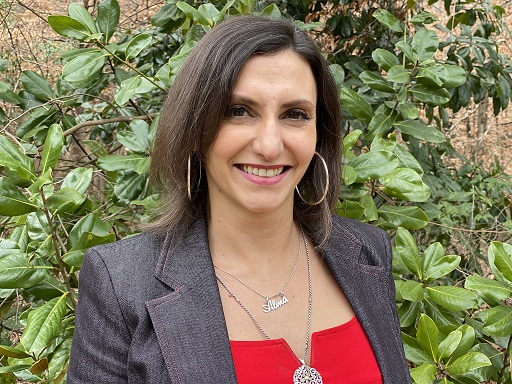
Maria Soledad Peresin, assistant professor of forest biomaterials in the Auburn University School of Forestry and Wildlife Sciences, has been selected for the prestigious National Science Foundation Faculty Early Career Development, or CAREER, program.
Categories: Energy & the Environment, Manufacturing
Auburn researcher demonstrates NASA satellite’s ability to observe forest health, generate data to support sustainable forest management
Lana Narine, an assistant professor of geospatial analytics in the Auburn University School of Forestry and Wildlife Sciences, is part of a research team whose recent study presented a breakthrough in the capabilities of a NASA satellite to examine the three-dimensional structure of forests.
The study, “Using ICESat-2 to Estimate and Map Forest Aboveground Biomass: A First Example” in the Remote Sensing journal, shows how NASA’s Ice, Cloud and land Elevation Satellite-2, or ICESat-2, can be used to estimate aboveground biomass, or AGB, of forests and map its distribution. The upscaling of AGB estimates was done in conjunction with other available data, including vegetation indices from Landsat 8 Operational Land Imager.
Narine said limited information on the three-dimensional structure of forests has contributed to uncertainties in the carbon budget. However, ICESat-2 can capture this information using its photon-counting light detection and ranging—or lidar—instrument, the Advanced Topographic Laser Altimeter System, or ATLAS.
Lidar facilitates direct three-dimensional structural measurements, and utilization of this technology from a space-based platform translates to exciting possibilities for assessing forest resources up to global scales, Narine said.
Knowing the capabilities of the novel ICESat-2, and specifically photon-counting lidar data from a space-based platform, allows for a better understanding of the satellite’s capabilities and limitations for characterizing vegetation.
“With ICESat-2 providing elevation measurements globally, a plethora of indicators of ecosystem health and function—including a key surrogate measure of forest AGB—can be potentially estimated to support sustainable management of forests,” Narine said.
The ICESat-2 mission was primarily designed to capture ice measurements, but its remarkable capture of data over vegetated areas offers current and future investigators broader insights into ecosystem structure and the potential to contribute to the sustainable management of forest ecosystems.
Narine’s research implemented methods she had worked on prior to the start of the mission to better understand the data and to develop methodologies for vegetation applications.
Janaki Alavalapati, dean of the School of Forestry and Wildlife Sciences, said the study is groundbreaking in its field.
“Dr. Narine’s role in researching the capabilities of the NASA Ice, Cloud and land Elevation Satellite-2 is yet another notable contribution from our faculty in the rapidly evolving field of geospatial and environmental informatics,” Alavalapati said. “This study has provided the first example of the satellite’s unique ability to gather critical data from forests that was previously unavailable.”
Narine’s co-authors were Sorin C. Popescu and Lonesome Malambo of the Department of Ecology and Conservation Biology at Texas A&M University, Narine’s former institution. Narine is a co-investigator on a NASA grant with the same team, with Popescu as principal investigator.
BY TERI GREENE

Lana Narine, an assistant professor of geospatial analytics in the Auburn University School of Forestry and Wildlife Sciences, is part of a research team whose recent study presented a breakthrough in the capabilities of the NASA satellite, ICESat-2, to examine forest attributes.
Categories: Energy & the Environment
Auburn professor co-authors study finding that carbon dioxide levels within plant communities influence soil carbon dioxide emissions
Predicting future climate and ecological change is among the world’s top priorities, and an Auburn University faculty member is among a group of researchers whose findings in a recently published study on carbon dioxide emissions could make a vast contribution to those future outlooks.
Mike Aspinwall, assistant professor of tree physiology and ecophysiology in the School of Forestry and Wildlife Sciences, said the study examines how rising atmospheric carbon dioxide, or CO2, might impact CO2 emissions from grassland soils.
The findings of the nearly decade-long study, published in the Proceedings of the National Academy of Sciences, stresses that understanding ecosystem carbon-cycling responses to atmospheric CO2 enrichment is critical to preserve biodiversity and maintain vital ecosystem services in grasslands impacted by global change.
The research explored CO2 emissions from soil, which represent the largest flux of CO2 from the land surface to the atmosphere, Aspinwall said.
“Changes in soil CO2 emissions will have consequences for future climate, yet our understanding of the impacts of rising atmospheric CO2—a key driver of global change—on CO2 emissions from soil is limited,” he said.
There has been a particularly limited understanding of how factors such as plant species diversity and soil properties might influence the way rising atmospheric CO2 impacts soil CO2 emissions, he added.
Aspinwall’s co-authors represented the USDA Agricultural Research Service, the University of Texas at Austin, Stanford University and Tennessee State University.
He said the team approached the research in several unique ways.
First, instead of using two discrete CO2 treatments, the researchers used a continuous gradient of atmospheric CO2, spanning past CO2 concentrations—about 250 parts per million, or ppm—to future CO2 concentrations of about 500 ppm.
“This allowed us to examine both the ‘shape’ and magnitude of the response to CO2,” Aspinwall said.
Secondly, the experiment incorporated different soil types and textures—including sandy, silty and clayey—an important inclusion since texture influences both nutrient and water availability, which in turn can influence how plants and ecosystems respond to changing CO2.
Aspinwall said the third unique approach involved the length of the experiment—eight years—which is important to this research.
“Longer-term experiments like this are very rare and provide more certainty about future responses,” he said.
Janaki Alavalapati, dean of the School of Forestry and Wildlife Sciences, underscored the study’s significance.
“The research of Dr. Aspinwall and his team on CO2 emissions from soil presents important findings that will go a long way in future predictions of climate and ecological change,” Alavalapati said. "The team’s dedication to this uniquely sourced research is a noteworthy contribution.”
Aspinwall is optimistic about its impact.
“We hope this research will improve our ability to predict changes in soil CO2 emissions over space and time—which will inform predictions of future climate and ecological change,” he said.
BY TERI GREENE
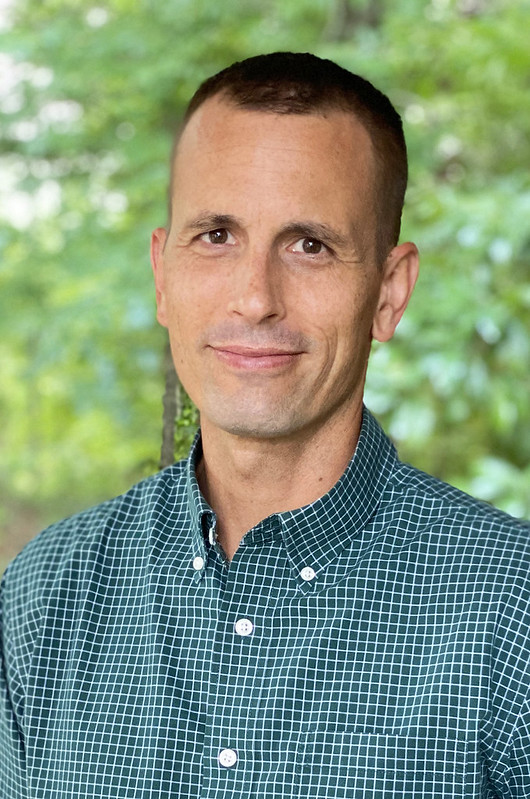
Auburn University faculty member Michael Aspinwall is among a group of researchers whose findings in a recently published study on carbon dioxide emissions could influence predictions of future climate and ecological changes.
Categories: Energy & the Environment, Life Sciences
Auburn University researcher, team present new methods of drought forecasting to advance early-warning efforts for agriculture, natural ecosystems
With his research team, Sanjiv Kumar, assistant professor in the Auburn University School of Forestry and Wildlife Sciences, co-authored a breakthrough study on drought forecasting published March 12 in Climate and Atmospheric Science, a partner publication to the journal, Nature.
In the paper, “Seasonal to multi-year soil moisture drought forecasting,” researchers sought to find out whether they could accurately forecast soil moisture conditions at long lead times—from the next season to a few years out—and identify the mechanisms underlying that possibility.
Kumar said advanced long lead time in predicting soil moisture will greatly improve drought early-warning efforts for agriculture and natural ecosystems. The research is based on the latest advances in earth system modelling, as well as an improved understanding among researchers of land surface processes that influence soil moisture behavior on long timescales.
He said these new findings will benefit agricultural and water resources as well as wildfire planning to mitigate the impacts of drought on society, including economic losses in the billions of dollars and intense stress to the productivity of ecosystems.
Kumar has done seminal work in past few years to discover and develop a scientific basis for the potential for skillful soil moisture predictability, said Imtiaz Rangwala, one of the study’s co-authors.
Kumar’s previous work includes leading the group of researchers that in 2019 discovered soil-moisture re-emergence, a phenomenon that will likely have a profound impact on climate predictability science.
“That body of work, in culmination with this paper, provides a strong foundation for future research in soil moisture forecasting,” said Rangwala, a research scientist at the Cooperative Institute for Research in Environmental Sciences (CIRES)/Western Water Assessment at the University of Colorado-Boulder and the climate science lead at the North Central Climate Adaptation Science Center.
Janaki Alavalapati, dean of Auburn’s School of Forestry and Wildlife Sciences, said Kumar’s ongoing work with fellow researchers has led to an ever-growing list of potential benefits.
“Dr. Kumar’s compelling new research builds on his previous work,” Alavalapati said. “These findings could have an enormous positive impact on drought predictability, leading to improved early-warning systems. This, in turn, will have a profound impact on people who experience drought in different parts of the world every year.”
In addition to Kumar and Rangwala, the research team included Musa Esit, a visiting scientist who worked with Kumar on the research; Ashutosh Pandey, a former graduate student; David M. Lawrence from the National Center for Atmospheric Research, or NACR, in Boulder, Colorado; and Stephen Yeager from NCAR.
While advancing the capacity for drought early warning was a major motivation for this study, the work also has implications to address other water and land management issues, Rangwala said.
“Better information on soil moisture conditions is highly sought-after among communities who manage our land and water resources, but it has historically been among the most challenging variables to get accurate information on. Forecasting soil moisture accurately has been even a greater challenge,” Rangwala said.
“Currently, we cannot forecast precipitation with any skill beyond two weeks. That's a pretty hard physical limit on our drought predicting skills. But our research shows the potential to skillfully forecast soil moisture several months out, particularly for regions in the central and western U.S., where there is even some skill to predict soil moisture conditions over multiple years.”
The next step for this research, Kumar and his collaborators said, is to apply the principles of this discovery to develop tools to forecast soil moisture at local scales, where it can directly benefit users in agricultural planning, including the planting of drought-tolerant varieties and irrigation management.
BY TERI GREENE
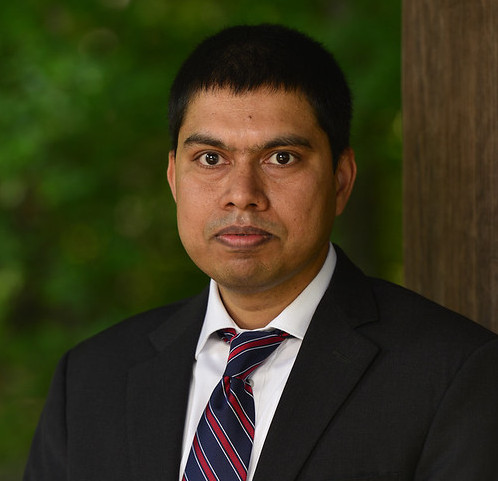
Sanjiv Kumar is an assistant professor in Auburn University’s School of Forestry and Wildlife Sciences.
Categories: Energy & the Environment
Auburn forestry professors part of multi-institution study revealing U.S. needs to double nursery production
1.7 billion more tree seedlings needed annually to meet climate, jobs, fire recovery goals
Two Auburn University professors have co-authored a multi-institution study indicating the nation’s tree nurseries need to increase seedling production by an additional 1.7 billion each year to realize the full potential of reforestation, a 2.4-fold increase over current nursery production.
These numbers, taken from the study co-authored by Scott Enebak and Daowei Zhang of the School of Forestry and Wildlife Sciences, show the promise of increased nursery output as a way to fight climate change, create jobs and recover from uncharacteristically severe wildfires.
With more than 200,000 square miles in the United States suitable for reforestation, ramping up nursery production could offer big benefits for the climate. The researchers say restoring forests is an important nature-based solution to climate change and a compliment to the critical work of reducing fossil fuel emissions.
“To meet the need for reforestation, we’ll need to invest in more trees, more nurseries, more seed collection and a bigger workforce,” said the study’s lead author, Joe Fargione of The Nature Conservancy. “In return we’ll get carbon storage, clean water, clean air and habitat for wildlife.”
The study, published in the science journal, Frontiers in Forests and Global Change, was co-authored by 18 scientists from universities, nonprofits, businesses and state and federal agencies.
“Due to the research team’s diverse range of expertise, we have been effective in addressing questions related to the capacities and limitations of U.S. seedling production,” said Enebak, professor and director of the Southern Forest Nursery Management Cooperative at Auburn University.
“With this combined knowledge, the team was able to identify the pinch points and strategies that would allow the U.S. to increase tree planting.”
To illustrate the requirements for increasing reforestation capacity in the U.S., the researchers identified 64 million acres of natural and agricultural lands, nearly half of the total reforestation opportunity. Accounting for different planting densities by region, it would require 30 billion trees to reforest these lands. This equates to 1.7 billion more tree seedlings produced each year for this land to be reforested by 2040.
To achieve this large increase, investment is required across the entire reforestation “pipeline.” Additional investment would be needed to expand capacity for seed collection and storage, tree nursery expansion, workforce development and improvements in pre- and post-planting practices.
To encourage nursery expansion, low-interest or forgivable loans in addition to long-term contracts will be needed. Across the pipeline, achieving this scenario will require public support for investing in these activities, plus incentives for landowners to reforest. The investments will create jobs in rural communities, not only in nurseries but across the whole spectrum of reforestation activities—from seed collection, to preparing sites for planting, to post-planting management activities essential to growing healthy young stands.
“The reforestation challenge is really an economic and political challenge,” said Zhang, professor and associate dean for research in Auburn’s School of Forestry and Wildlife Sciences. “Reforestation is one of the lowest cost options to deal with climate change and provide many other public benefits. How to translate these public goods benefits into private reforestation incentives is critical.”
There are several existing reforestation programs in the United States that could be scaled up to put the new study’s information to work. On public lands this includes the Reforestation Trust Fund, which can be enhanced via the soon-to-be-introduced federal REPLANT Act to fully fund reforestation of America’s national forests. On private lands, they include the U.S. Department of Agriculture’s Environmental Quality Incentives Program, or EQIP, and the Conservation Reserve Program, or CRP, as well as state conservation agency cost-share programs.
Given the large opportunity for reforestation across the country, the researchers say more funding will be needed, particularly for federal and state agencies that lack a stable, dedicated funding source for reforestation, such as the Department of the Interior.
They add that, in the United States, hundreds of millions of acres could potentially be reforested. Currently, most lands in need of reforestation are not being reforested. This problem is being exacerbated by the increasing need to reforest after fires—which are becoming increasingly large and severe due to a century of misguided fire suppression and climate change. Only by increasing the capacity to plant trees will this need be met.
BY JAMIE ANDERSON

Two Auburn University professors have co-authored a multi-institution study revealing the nation’s tree nurseries need to increase seedling production by an additional 1.7 billion each year to realize the full potential of reforestation, a 2.4-fold increase over current nursery production.
Categories: Energy & the Environment
Civil and environmental engineering professor receives $1.3 million Department of Defense grant
Natalie Cápiro, assistant professor of civil and environmental engineering, has been awarded a $1.3 million grant by the Strategic Environmental Research and Development Program (SERDP) for her project “Development of Predictive Tools for Assessment of Natural Attenuation Capacity and Treatment Transition at Chlorinated Solvent Sites.”
SERDP is an environmental science and technology program for Department of Defense (DoD), that is planned and executed in partnership with Department of Energy and U.S. Environmental Protection Agency, with participation by numerous other federal and non-federal organizations.
Cápiro’s project aims to develop a quantitative understanding of the relationships between the processes that govern long-term attenuation at contaminated sites that are characterized by complex hydrogeology and failure of prior remediation efforts.
According to Cápiro, current nationwide estimates of costs and predicted cleanup times required for the restoration of federal and state hazardous waste-impacted groundwater sites are underestimated. The cleanup timeframe for sites with complex hydrogeology can exceed acceptable timeframes, which are typically considered to be 30-50 years.
“Particularly difficult are sites contaminated with highly toxic chlorinated solvents that have been widely used as degreasers at military bases, dry cleaners and in other industries,” Cápiro explained. “Groundwater resources at more than 126,000 known contaminated federal and state hazardous waste sites are estimated to require more than $100 billion to achieve cleanup goals.”
Cápiro’s work aims to develop a holistic remediation approach accounting for natural attenuation processes that control chlorinated solvent contaminant persistence in groundwater, while providing long-term cost-saving measures and safeguarding drinking-water supplies.
The research will establish a more complete understanding of the relationships between the coupled processes that govern long-term natural attenuation of chlorinated solvent groundwater plumes. Also, it will provide site managers, regulatory officials and the scientific community with mathematical models and predictive tools that are capable of estimating the capacity of an aquifer to naturally attenuate chlorinated solvents in complex hydrogeological settings.
The outcomes of the project will aid in the selection of scientifically sound strategies for sustainable long-term management of complex, contaminated sites and support the recommendations on when the transition from active to passive treatment is justified.
Cápiro’s co-PIs are Kurt Pennell (Brown University) and Mark Widdowson (Virginia Tech), as well as Michael Kavanaugh and Eric Suchomel, both with Geosyntec Consultants.
BY ALYSSA TURNER
Media Contact: , jdh0123@auburn.edu, 334-844-3591
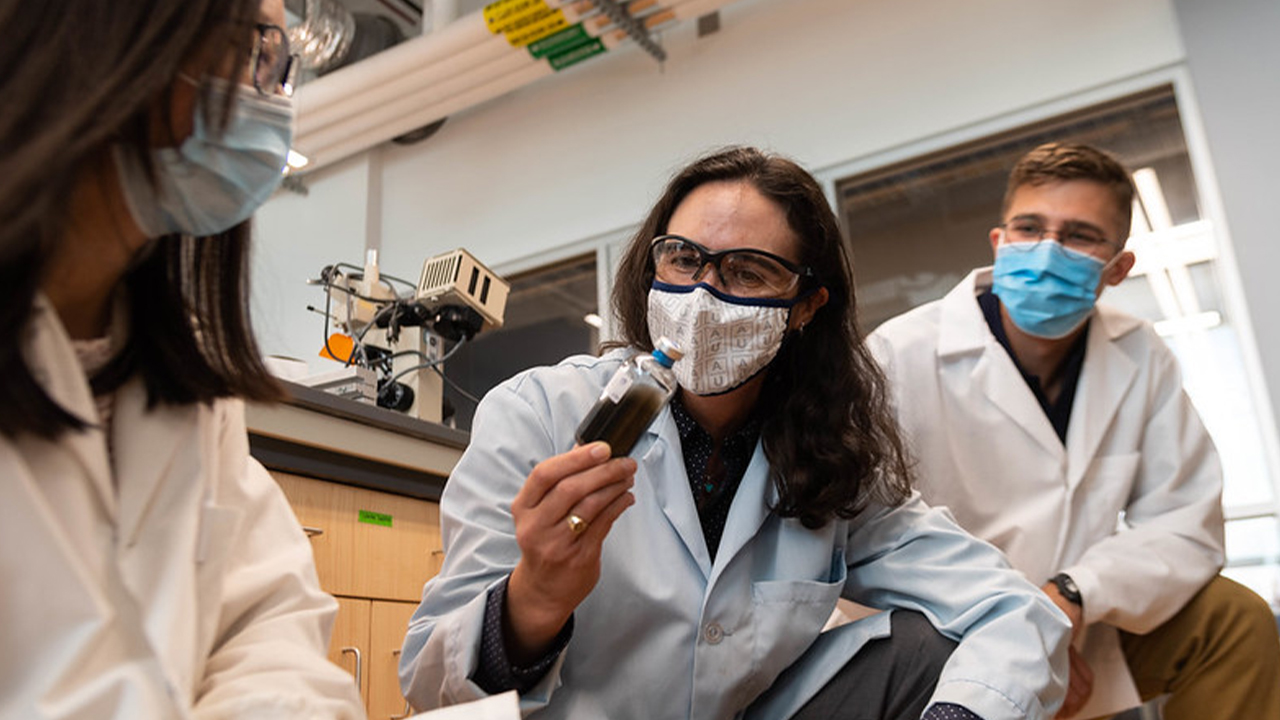 Natalie Cápiro
Natalie Cápiro
Categories: Energy & the Environment, Engineering
Significant use of nitrogen fertilizers worldwide is increasing concentrations of nitrous oxide in the atmosphere, study finds
Rising anthropogenic nitrous oxide emissions are jeopardizing climate goals and the Paris Accord, a study published in Nature and led by an Auburn University researcher has found.
The significant use of nitrogen fertilizers in the production of food worldwide is increasing concentrations of nitrous oxide in the atmosphere—a greenhouse gas 300 times more potent than carbon dioxide—which remains in the atmosphere longer than a human lifetime.
This finding is part of a study co-led by Professor Hanqin Tian, director of the International Center for Climate and Global Change Research at Auburn University’s School of Forestry and Wildlife Sciences and an Andrew Carnegie Fellow. The study was published today in Nature, the world's most highly cited interdisciplinary science journal.
Tian co-led an international consortium of scientists from 48 research institutions in 14 countries under the umbrella of the Global Carbon Project and the International Nitrogen Initiative. The objective of the study, titled “A comprehensive quantification of global nitrous oxide sources and sinks,” was to produce the most comprehensive assessment to date of all sources and sinks of the potent greenhouse gas nitrous oxide.
Tian’s Auburn colleagues including Professor Shufen Pan, postdoctoral fellows Rongting Xu, Hao Shi and Yuanzhi Yao and graduate student Naiqing Pan served as co-authors among an international research team of 57 scientists.
The study points to an alarming trend affecting climate change: Nitrous oxide has risen 20 percent from pre-industrial levels, and its growth has accelerated over recent decades due to emissions from various human activities.
“The dominant driver of the increase in atmospheric nitrous oxide comes from agriculture, and the growing demand for food and feed for animals will further increase global nitrous oxide emissions,” Tian said. “There is a conflict between the way we are feeding people and stabilizing the climate.”
The researchers further identify an emerging cause of increased atmospheric nitrous oxide coming from the interaction between global warming and nitrogen additions for food production further enhancing emissions from agriculture. Warmer temperatures tend to increase nitrous oxide emissions.
The study also determined that the largest contributors to global nitrous oxide emissions come from East Asia, South Asia, Africa and South America.
Emissions from synthetic fertilizers dominate releases in China, India and the U.S., while emissions from the application of livestock manure as fertilizer dominates releases in Africa and South America, the study found. The highest growth rates in emissions are found in emerging economies, particularly Brazil, China and India, where crop production and livestock numbers have increased.
The co-authors agreed that the most surprising result of the study was the finding that current trends in nitrous oxide emissions are not compatible with pathways consistent to achieve the climate goals of the Paris Climate Agreement, or the Paris Accord.
Signed by 195 nations, the agreement aims to strengthen the global response to the threat of climate change by keeping a global temperature rise in the 21st century well below 2 degrees Celsius above pre-industrial levels, and to pursue efforts to limit the temperature rise even further, to 1.5 degrees Celsius.
“Current emissions are on track to cause global temperature increases above 3 degrees Celsius by the end of this century, twice the temperature target of the Paris Accord,” said Robert Jackson, a professor and coauthor from Stanford University and chair of the Global Carbon Project.
However, opportunities to reduce nitrous oxide emissions do exist, said Wilfried Winiwarter, a senior research scholar with the International Institute of Applied Systems Analysis in Austria and former director of the International Nitrogen Initiative and its European center.
“Europe is the only region in the world that has successfully reduced nitrous oxide emissions over the past two decades,” Winiwarter said. “Industrial and agricultural policies to reduce greenhouse gases and air pollution and to optimize fertilizer use efficiencies have proven to be effective. Still, further efforts will be required, in Europe as well as globally.”
Rona Thompson, a senior scientist from the Norwegian Institute for Air Research, was another study co-leader.
“This study shows that we now have a comprehensive understanding of the nitrous oxide budget, including climate impacts,” Thompson said. “We are able to assess and quantify measures to reduce nitrous oxide emissions, and many of these measures will also improve water and air quality, benefiting both human health and ecosystems.”
Study co-leader Josep “Pep” Canadell, chief scientist in the Climate Science Center at the Australia-based Commonwealth Scientific and Industrial Research Organisation and executive director of the Global Carbon Project, agreed the research is significant and urgent.
“This new analysis calls for a full-scale rethink in the ways we use and abuse nitrogen fertilizers globally and urges us to adopt more sustainable practices in the way we produce food, including the reduction of food waste,” Canadell said. “These findings underscore the urgency and opportunities to mitigate nitrous oxide emissions worldwide to avoid the worst of climate impacts.”
Francesco Tubiello, a senior statistician and team leader for Agri-Environmental Statistics in the Food and Agriculture Organization of the United Nations, added, “Many of the actions to improve nitrogen use efficiency and improve crop and livestock productivity, required now to begin reducing these emissions, are also needed to achieve sustainable and productive agriculture under the United Nation’s 2030 Agenda for Sustainable Development Goals.”
BY TERI GREENE
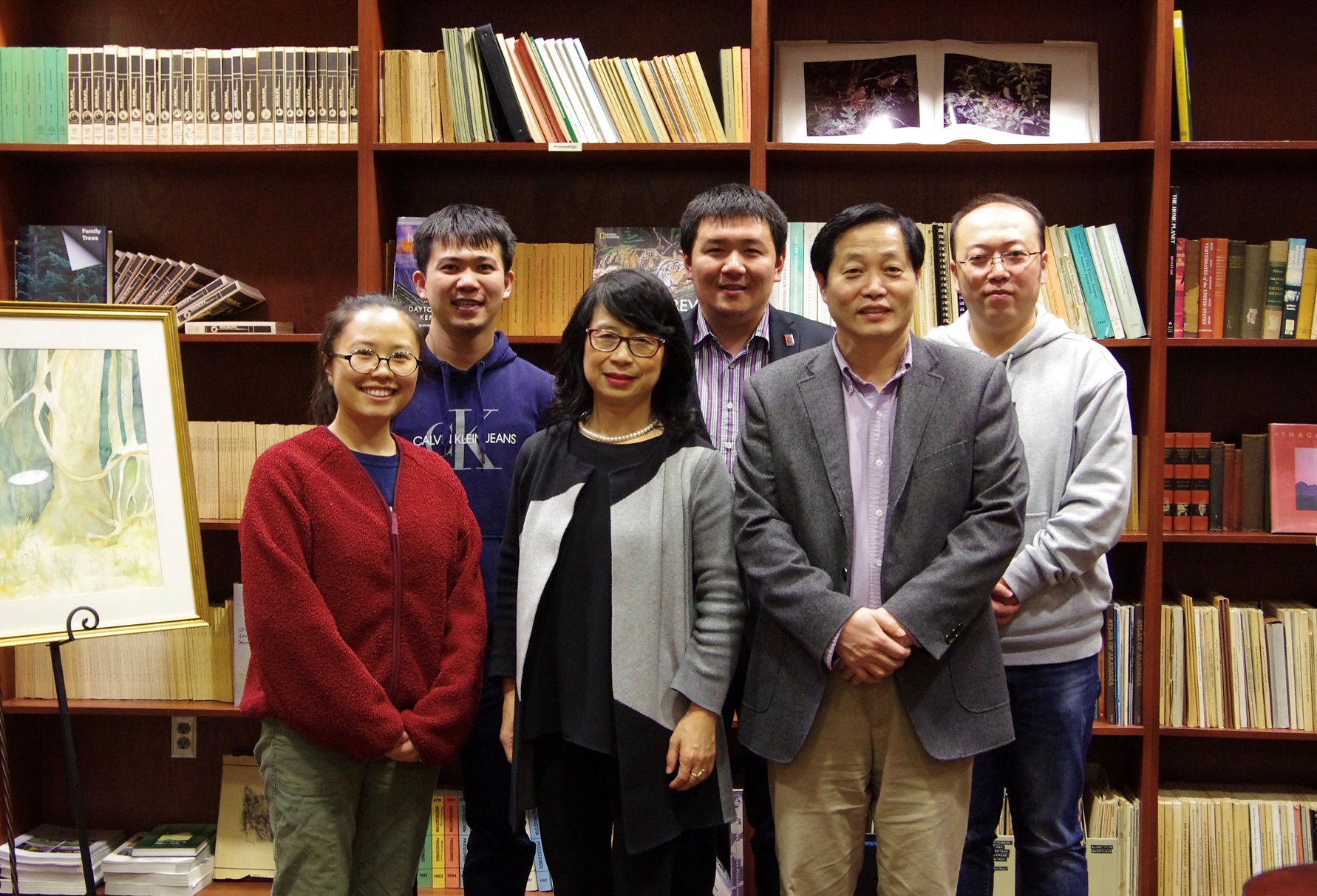
Auburn University researchers co-authored a breakthrough study showing that rising nitrous oxide emissions are jeopardizing climate goals and the Paris Accord. Auburn co-authors are, front row from left, Rongting Xu, Shufen Pan, Hanqin Tian, and, back row from left, Naiqing Pan, Yuanzhi Yao and Hao Shi.
Categories: Energy & the Environment, Food Systems
AU awarded $1.21 million by Department of Energy to develop nuclear energy technology
The U.S. Department of Energy recently awarded Auburn University a combined $1.21 million to develop advanced manufacturing technology for next-generation reactor designs and expand the university’s existing nuclear research infrastructure. The two awards are among the DOE’s $65 million research investment to domestic universities and national laboratories for 93 advanced nuclear technology projects across 28 states.
“In the United States, nuclear power represents approximately 20% of the electricity consumed without greenhouse gas emission,” said Xiaoyuan Lou, principal investigator of both awards and associate professor of materials engineering. “Innovative manufacturing technologies and advanced materials are both crucial to the future economic outlook of nuclear power and the development of next-generation reactor designs such as small modular reactor (SMR) and GEN IV advanced reactors.”
Through the first award of $1 million funded by the DOE's Nuclear Energy Enabling Technologies (NEET) program, Auburn will lead a joint university-industry team to develop and demonstrate the powder metallurgy-hot isostatic pressing (PM-HIP) cladding and joining strategies to manufacture dissimilar metal pressure retaining components.
Nuclear reactors and many other energy infrastructures are formed by large-size and thick-section metal structures.
The traditional approach to manufacture these structures often involves multiple lengthy and costly fabrication steps and requires vastly different expertise, resulting in high manufacturing cost and delayed deployment schedule. The performance demands and compactness of future reactor designs require the complex construction of dissimilar metal structures, which further increase the manufacturing complexity and cost. PM-HIP can be an alternative solution to handle the design complexity, reduce the manufacturing cost and time, and eliminate the burden of in-service inspection.
“Tens of millions of dollars have been invested by government and industry to mature PM-HIP for manufacturing nuclear reactor structures," Lou said. "With these efforts, PM-HIP was recently approved by ASME Boiler and Pressure Vessel Code. By working with key nuclear technology providers, we will demonstrate PM-HIP can produce nuclear-grade multi-material reactor components with one shot.”
The second infrastructure award of $210,000 supports Lou to enhance the advanced mechanical testing capabilities at Auburn University. Bart Prorok, interim program chair for materials engineering, is the co-PI on the project.
Lou said the new equipment acquisitions would boost the Samuel Ginn College of Engineering’s nuclear research and training opportunities and expand the existing nuclear research programs.
“Nuclear power not only ensures reliable and clean electricity for the American people but also supplies propulsion energy to Navy operation and NASA’s space exploration,” Lou said. “These awards provide us opportunities to work closely with the major nuclear technology providers at the forefront of technological innovation.”
BY VIRGINIA SPEIRS
Media Contact: Jeremy Henderson, jdh0123@auburn.edu, 334-844-3591
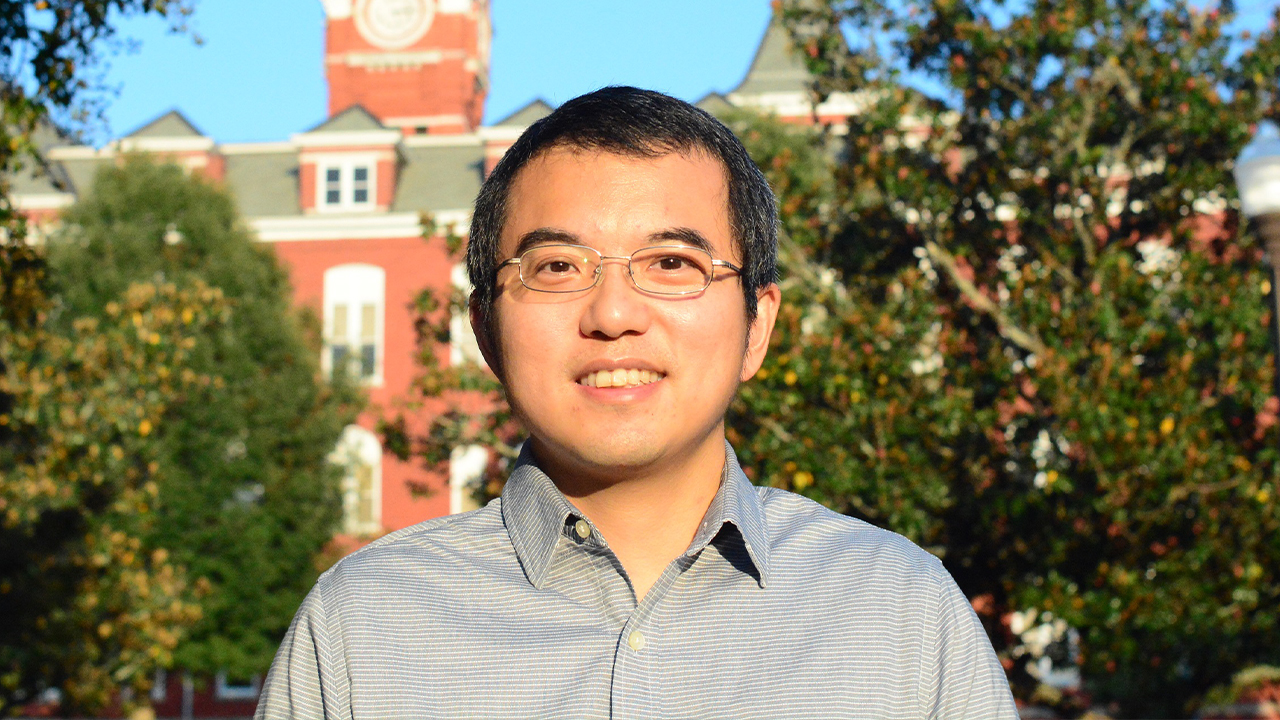
Xiaoyuan Lou
Categories: Energy & the Environment, Engineering
Assistant professor aims to improve fuel cell efficiency with NSF award
Ion-containing polymer membranes are found in many energy generation and storage devices. Using artificial photosynthesis, these devices convert water, sunlight and carbon dioxide into energy in an electrochemical cell, such as a solar fuel cell. Maximizing the efficiency of solar fuel cells requires understanding the relationships between polymer membrane structure and the transport of ions and molecules.
Chemical engineering assistant professor Bryan Beckingham will explore the relationships between ion-containing polymer membrane structure, membrane physiochemical properties and membrane-transport behavior with a $259,036 award from the National Science Foundation. The project, “Cooperative Transport in Ion-Conducting Membranes,” seeks to provide guidance for the future design of ion-containing polymer membranes to improve the efficiency of solar fuel cell devices.
Through lab experiments, Beckingham will examine transport properties such as permeability, solubility and diffusivity for a neutral solute (methanol), an ionic solute (acetate) and complex mixtures of the two.
“This project is going to investigate the transport behavior of different product species across these polymer membranes which can play a big role in reducing device performance,” he explained. “The particular focus is on how the presence of more than one of these species can change the diffusion behavior of the other species.”
Beckingham, with his graduate students, will be utilizing infrared spectroscopy in a novel way that will allow them to examine the diffusion behavior of multiple species at once. The technique, first developed in Beckingham’s post-doctoral research at Lawrence Berkeley National Laboratory as part of the Joint Center for Artificial Photosynthesis and refined in his lab at Auburn University, allows him to streamline the characterization process.
“In traditional experiments, you can really only look at one species at a time,” he said. “With our method, we will be using an in situ probe fiber optic cable that we can stick into our diffusion cell and it allows us to look at multiple species concentrations at the same time. With the probe taking measurements every minute, we get really high-fidelity data.”
Preliminary experiments using commercial materials have shown that when going from having a single solute to two solutes, the diffusion behavior changes in ways that the researchers cannot yet predict.
“So far what we’ve found is that neutral molecules such as methanol tend to be affected less but this matters a lot for charged molecules. The permeability of the charged molecule can increase a lot in the presence of methanol. This new project will build off of and attempt to understand these results,” he explained.
BY CASSIE MONTGOMERY
Media Contact: Cassie Montgomery, cmontgomery@auburn.edu, 334.844.3668

Bryan Beckingham (center) with graduate students
Categories: Energy & the Environment, Engineering
Auburn University Presidential Research Fellow at the forefront of promoting human-elephant coexistence in Kenya
Lynn Von Hagen, an Auburn University Presidential Research Fellow and doctoral student in the School of Forestry and Wildlife Sciences, spent her first semester in a faraway but familiar location—Kenya, where she has worked on the ground for two years researching African elephants, specifically studying crop-raiding, a perilous issue that endangers the lives of both elephants and native populations.
In January, Von Hagen began her second semester at Auburn, working with Forestry and Wildlife Sciences Professor Chris Lepczyk and Assistant Professor Sarah Zohdy, as well as University Distinguished Professor Bruce Schulte of Western Kentucky University, where she earned her master’s degree.
Von Hagen plans to return to Kenya for a longer stint of elephant research, working in conjunction with major conservation groups, including Wildlife Works, Save the Elephants, Earthwatch and the International Elephant Foundation.
Much of her research has taken place in the Kasigau Wildlife Corridor, home to the country’s largest elephant population and an area of high human and elephant conflict. She and fellow researchers have been hosted by Wildlife Works in Kenya, one of the world’s largest carbon offset schemes.
Von Hagen said crop-raiding is an often-overlooked threat to people and elephants in many parts of Africa and Asia, as elephants move from protected lands into small shareholder farms, where they consume or trample crops. This creates conflicts between elephants and people: Elephants’ lives are endangered when farmers retaliate, and the livelihoods of impoverished people are compromised.
“We successfully evaluated a new type of metal strip fence invented by Simon Kasaine, our colleague in Kenya,” Von Hagen said, adding that the invention, known as the Kasaine fence, or metal strip fence, has been effective at deterring elephants. “This is big news for rural people, as the method is practical, affordable and prevents habituation by elephants, three key qualities rarely found in combination.”
She and her fellow researchers also assessed indigenous trees for elephant foraging to determine biological indicators for crop-raiding. She also performed wildlife and elephant surveys with an aim to create a catalog of known elephants in the area that will help in tracking individual, mostly male elephants and identify habitual crop raiders.
Her extensive research in Africa is far-reaching.
“My work as a Ph.D. student and Presidential Research Fellow at Auburn will involve ongoing relationships with the project, but will allow me to diverge and build off of the important knowledge we have gained in the region,” Von Hagen said.
She said she plans to conduct community workshops that focus on a variety of crop-raiding deterrents, educate stakeholders on the importance of elephants in the ecosystem, introduce climate smart agricultural techniques to improve crop yields—and make crop raids less detrimental to farmers. She will also introduce sustainable livelihood initiatives and conduct an educational school program.
Auburn School of Forestry and Wildlife Sciences Dean Janaki Alavalapati said this research is leading to vital change in Kenya’s embattled landscape.
“Lynn Von Hagen’s work in Kenya is helping to reduce human and elephant conflict and improve sustainable livelihoods for local people,” Alavalapati said.
Von Hagen will also assess the ways in which large-scale fencing initiatives can impact landscape scale elephant movements and how community participatory modeling can impact conservation planning.
Those interested in learning more about the Earthwatch project, or accompanying the expedition, can learn more on the Earthwatch website or by following the project on Facebook.
BY TERI GREENE
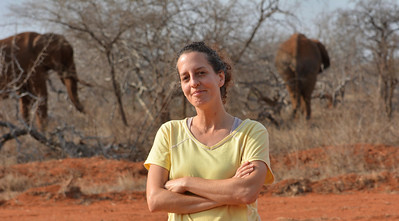
Lynn Von Hagen, a doctoral student in Auburn University’s School of Forestry and Wildlife Sciences, is leading a research study with the objective of reducing human and elephant conflict and improving sustainable livelihoods for people living in the Kasigau Wildlife Corridor area of Kenya.
Categories: Energy & the Environment
Auburn University awards two research projects with LAUNCH grant funding
In an effort to advance research ideas that benefit society and the economy, Auburn University recently awarded two faculty research projects $100,000 in LAUNCH funding support.
Established in 2015 by the Auburn University Research and Economic Development Advisory Board, the LAUNCH Fund for Research and Innovation involves an associated competition designed to bridge the gap between innovative research and the marketplace. The fund was created with the support of the Office of the Vice President for Research and Economic Development. This year’s annual pitch competition was held virtually through Zoom, the online meeting platform, with Auburn’s top entrepreneurial faculty pitching ideas for research projects with potential to impact the economy of the state and region.
This year’s recipients, both from the Samuel Ginn College of Engineering, will receive cash stipends from a pool of approximately $100,000 toward the commercialization of their work. The recipients are Zhihua Jiang, an assistant professor in the Department of Chemical Engineering and director of the Alabama Center for Paper and Bioresource Engineering, and Majid Beidaghi, an assistant professor in the Department of Mechanical Engineering.
Jiang’s winning project was titled “Novel and Sustainable Feed Binder from Soy Hulls.” Feed binders are widely used to hold or bind different feed components together for increasing the water stability of aquaculture diets and the durability of feedstuffs. Jiang and his team—Burak Aksoy of Chemical Engineering and Mediha Aksoy and Benjamin Beck of the United States Department of Agriculture-Agricultural Research Services–are developing a compound feed binder made of soybean hulls, an agricultural waste product. This novel feed binder product made 100 percent from soy hulls has a great potential to penetrate the existing and growing global animal feed market valued at more than $400 billion in the U.S.
Beidaghi’s winning project was titled “Development of Inks and Printing Technology for 3D Printing of Batteries.” Beidaghi’s research focuses on the development and formulation of inks, or filament, for the fabrication of batteries, including Li-ion batteries, or LIBs, through a simple extrusion-based 3D printing process. 3D printing will allow fabrication of batteries with complex designs and form factors for both conventional and advanced applications. 3D printed batteries will show an excellent performance in small footprint areas and volumes to address the increasing demand for efficient energy storage devices for small and portable electronics.
“We are deeply honored to receive this award,” said Jiang. “Our technology addresses the existing and growing global animal feed market. We expect that this LAUNCH funding will play a critical role in making the technology ready for commercialization.”
Beidaghi echoed those sentiments, stating, “It is an honor for us to receive this award. Printed batteries are rapidly gaining attention for various applications ranging from wearable and flexible electronics to self-powered sensors. Our technology will potentially transform how batteries and other energy storage devices are manufactured. Funding from the LAUNCH program will greatly help us to develop our battery inks and printing methods further and introduce our technology to potential licensees and partners.”
As LAUNCH award recipients, the researchers will have the opportunity to meet with experts in entrepreneurship from Auburn’s Harbert College of Business and with IAC staff members to develop the plans for commercial success. Researchers may also be partnered with Auburn alumni and friends with extensive experience in industries related to the projects.
"Auburn is committed to providing a robust entrepreneurial ecosystem for our faculty, staff and students as a natural extension of our land-grant mission and the mission of Auburn Research Park," said Cary Chandler, director of the LAUNCH program and director of business development and start-ups for Auburn’s Office of Innovation Advancement and Commercialization, or IAC. "The LAUNCH Program is a critical part of that environment and plays an important role in delivering science-based solutions to our region and beyond. These are the ‘big ideas’ that will create jobs, grow our economy and improve quality of life, and we are pleased to support this year’s outstanding winners.”
The goal is to fund an endowment of $10 million that will generate $400,000 annually for research grants. Until it is fully funded, Auburn’s Office of the Vice President for Research and Economic Development is providing the awards.
More information on LAUNCH is available online.
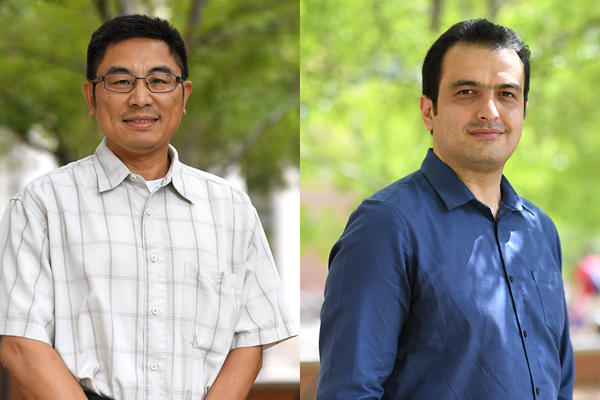
The recipients of this year’s LAUNCH Fund for Research and Innovation award are Zhihua Jiang (left), an assistant professor in the Department of Chemical Engineering and director of the Alabama Center for Paper and Bioresource Engineering, and Majid Beidaghi, an assistant professor in the Department of Mechanical Engineering.
Categories: Energy & the Environment, Engineering
Auburn University awarded $1.31 million in research project funds from state of Alabama
Three Auburn University research projects have received a combined $1.31 million award, through a new program administered by the Alabama Department of Economic and Community Affairs, or ADECA.
Gov. Kay Ivey announced the grants this week through the new Alabama Research and Development Enhancement Fund. The state-funded program was created in 2019 under the Alabama Innovation Act.
The multidisciplinary projects are funded as follows:
-
$245,865 to develop an advanced biosensor using forest and agricultural products that will have a wide variety of uses dealing with contaminant detection, like determining if pesticides are present in water. The project is conducted by Samuel Ginn College of Engineering faculty members Virginia Davis, Alumni Professor, and Robert Ashurst, the Uthlaut Family Associate Professor from the Department of Chemical Engineering; and Soledad Peresin, an assistant professor of forest biomaterials in the School of Forestry and Wildlife Sciences.
-
$868,145 to develop a lightweight material that blocks mosquito bites while retaining coolness in hot weather. The research is being done by John Beckmann, an assistant professor in the Department of Entomology and Plant Pathology in the College of Agriculture.
-
$193,960 to develop a filtering process to remove perfluoroalkyl and polyfluoroalkyl substances from water and landfill runoff. The manmade substances are used in food packaging, stain repellants, cookware and firefighting foam and do not readily break down. The investigator for this project is Dongye Zhao, the Auburn Alumni Engineering Council Professor in the Department of Civil Engineering.
“This fund will enable our universities, hospitals, research institutions and others to develop and bring to fruition ideas that will improve lives and create jobs,” Ivey said about the grant program in the announcement. “I am tremendously encouraged by this program and its potential in Alabama.”
Jan Thornton, executive director of Auburn’s Office of Innovation Advancement and Commercialization, or IAC, said the ADECA grants are now an annual funding opportunity for researchers, with proposal submissions for the next award cycle currently open through July 29.
Faculty who wish to learn more and want to ensure that their research is protected as technology that might be potentially commercialized should contact the IAC by visiting iac.auburn.edu.
BY MITCH EMMONS
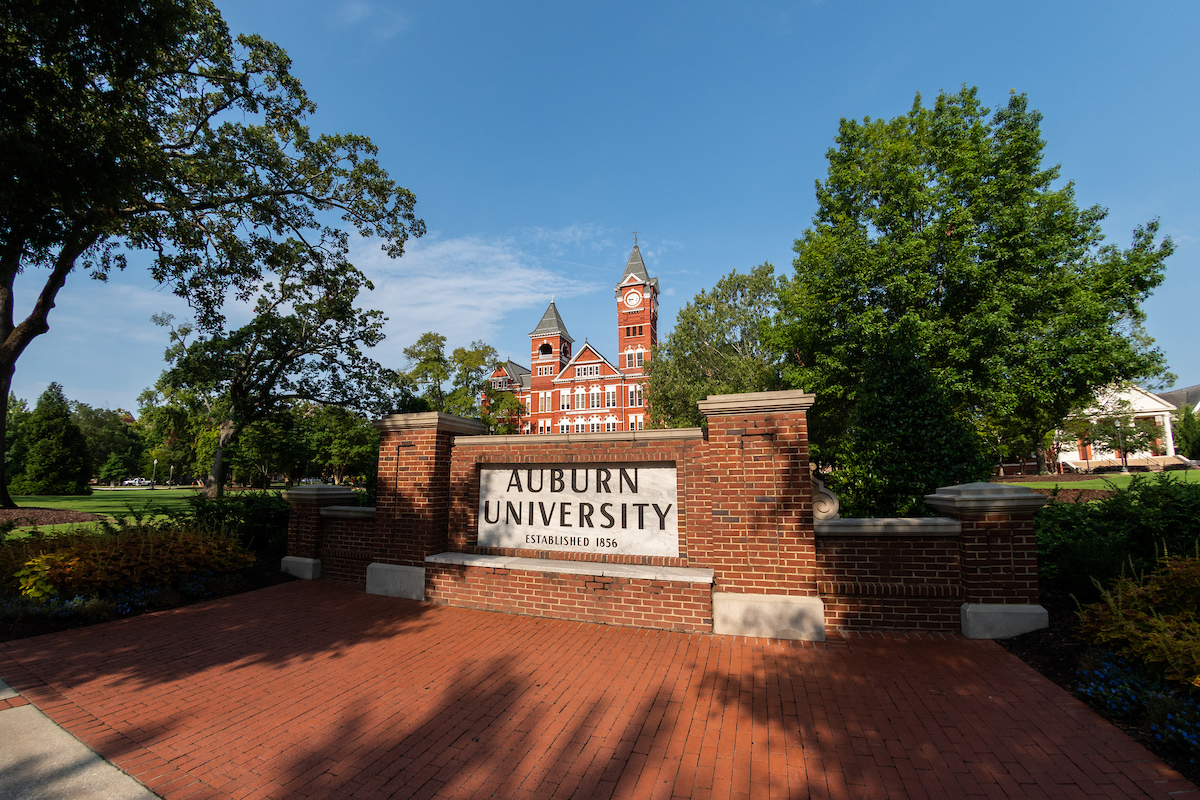
Categories: Energy & the Environment, Health Sciences, Engineering, Auburn In the News
Warner receives CAREER grant to study how lizards respond to environmental variation
Daniel Warner, an assistant professor in the Department of Biological Sciences, has recently been awarded a $1.1 million National Science Foundation Faculty Early Career Development Program (CAREER) Grant. His research will test three unique hypotheses studying how lizards deal with variation in their environment.
Beginning in March, the five-year project will specifically focus on how embryos deal with environmental variation. The first hypothesis to be tested, called the environmental matching hypothesis, is the idea that during development the environment might affect various characteristics of the offspring in ways that prepare them for their future environment.
“As an example, if organisms are developing under hot conditions, it might prime them for doing well in hot conditions,” Warner explained. “If they develop under cool or moist conditions, they’re more primed to do well in those conditions. If there is a mismatch between the conditions they experience during development and the conditions they experience after development, they might have maladapted phenotypes because now they’re in the mismatched or wrong environment for their phenotype.”
To test this theory, Warner is working to simulate two distinct natural environments in the lab for incubation and will then track the survival of the offspring on man-made islands in Florida, two islands with a warm, open habitat and two others with a cooler, shaded habitat.
“I plan to take offspring lizards and put them into an environment that is matched to their phenotypes and in environments that are mismatched as well,” he said. “So, I can experimentally test to see if those early conditions have a priming effect and if they do poorly in the wrong environment if they’re mismatched.”
The second hypothesis Warner will test is the habitat choice hypothesis, which suggests that the environment-phenotype matching is achieved by the behavior of the offspring.
“The offspring may hatch with certain characteristics that have little to do with the environment during development, but yet there will still be important variation in their phenotypes. To deal with this, the offspring might actively find the right kind of microhabitats in their environment,” he said. “Essentially the hatchlings would behaviorally seek out the appropriate habitat and create their own phenotype matching as a way of dealing with environmental variation.”
The third hypothesis to be tested is the silver spoon hypothesis. This will focus on the nesting behavior of the mothers.
“The idea is the mothers are choosing the best sites available for nesting and those conditions in the nest have persistent long-term benefits on the offspring,” Warner said. “Basically, this hypothesis suggests that offspring do well because of mom’s choice (of nest site), rather than the offspring’s choices.”
Overall, testing these hypotheses will have important implications for understanding how animals will respond to major environmental changes.
The outreach portion of the project will focus on improving education of middle school students in Alabama about the process of science. Collaborating with the College of Sciences and Mathematics (COSAM) Office of Inclusion, Equity and Diversity (OIED) as well as the COSAM Office of Outreach and the Auburn University Museum of Natural History, Dr. Warner will implement a program titled Student Teacher Education in Ecological Research (STEER). The program will better train middle school teachers to teach science to students.
A two-week fellowship program will take place over the summer where the teachers will spend a week in the field assisting with field work while also developing their own research questions. The second week will be spent in the lab developing a lesson plan on how to implement a research project in the classroom. The teachers will also mentor students participating in the Greater East Alabama Regional Science & Engineering Fair.
“We want these students to do a science fair project that is actually real science, doing the whole process of science rather than reiterating what is already known,” shared Warner. “The plan is to have students will come up with a unique question and then use the scientific method to provide an answer.”
The program will collaborate with the COSAM Office of Outreach to recruit teachers, OIED to recruit student involvement and with the Natural History Museum’s Curator Camp to incorporate field work and lesson plans.
Dr. Warner said he is excited about all of the opportunities the CAREER Grant will offer.
“This is the most prestigious grant I’ve ever received,” he said. “We have some preliminary data supporting these hypotheses, but they haven’t been rigorously tested yet, which is what I plan to do with this grant.”
BY CARLA NELSON
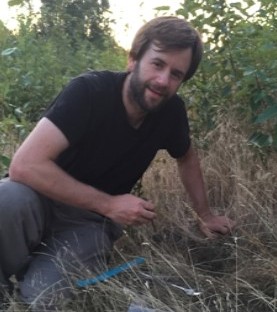
Daniel Warner
Categories: Energy & the Environment
NSF CAREER Award helps Auburn chemist study materials that could power tomorrow’s consumer electronics
Evangelos Miliordos is investigating new materials that can help power tomorrow’s consumer electronics.
Miliordos, an assistant professor in the Department of Chemistry and Biochemistry, focuses his research in computational chemistry through the Miliordos Research Group. He has received a $558,375 NSF CAREER award to develop calculations that can lead to a novel class of super-atoms with real-world applications of batteries, solar cells, catalysis and quantum computing.
Over the next five years, his work will apply the principles of quantum mechanics to understand the theoretical properties of metals and ammonia.
“I am trying to create an exciting new material formed through metal atoms dissolved in liquid ammonia,” explained Miliordos. “The metal atom and the ammonia molecules form a combined structure where the molecules act like a single, super-sized atom.”
His work has an outreach component to teach high school students more about these chemical concepts, properties and structures.
“My project will focus on the performance of high-level electronic structure calculations of the transition metals with a number of ammonia, amine, polyamine or other ligand,” he added. “It will give me an opportunity to explore new types of chemical bonds and study materials that can facilitate chemical reactions pertaining to catalysis and can be used in quantum computing.”
This NSF CAREER award is funded by the Chemical Structure Dynamics and Mechanisms (CSDM-A) program of the Chemistry Division.
BY MARIA GEBHARDT

Evangelos Miliordos
Categories: Energy & the Environment, Science, Technology, Engineering and Mathematics (STEM)
NSF CAREER Award fuels Farnum's quest to find storable renewable energy for large-scale grids
To power large-scale grids such as cities, renewable energy must be able to be converted and stored for future use.
Byron Farnum, an assistant professor in the Department of Chemistry and Biochemistry, received a $682,030 NSF CAREER award to further his research in the Farnum Group over the next five years to develop strategies for the storage of solar energy as electrical energy in redox-flow batteries. These batteries are being developed for grid-scale power storage and store energy in the form of reduced and oxidized small molecules. The structures and reactivity of the molecules can be tuned to improve battery performance.
Farnum is specifically researching how different reaction mechanisms store multiple electrons. “It is essential to store more than one electron,” Farnum explained. “By adding one more electron, the capacity for energy storage has been doubled. Then, building on this design, new molecules can be created with large amounts of energy that can help us create affordable renewable energy.” Using inorganic complexes comprised of nickel, which is a light-weight earth-abundant metal at a low price point, he is studying what factors control the storage of multiple electrons.
His work is broken down into three phases:
- Understanding the mechanisms by which nickel molecules store multiple electrons
- Enhancing reversibility and efficacy of multi-electron storage
- Applying these molecules in lab scale batteries
“Since the electrons are proportional to current, the more electrons the molecule stores, the more current these batteries will be able to generate,” he added.
Farnum’s research could be the key to the fluid nature of solar power. These batteries can be regulated to accept and deliver energy, so during periods of rain, the stored energy can power an entire grid.
“Flow batteries ramp up rather quickly,” Farnum shared. “By having the energy harvested, converted, and pumped into a chamber, the renewable energy can be stored in large quantities and used as needed by organizations, companies, or entire communities.”
As part of his outreach component for this NSF CAREER award, Farnum will participate in Auburn University Summer Science Institute where high school students have an opportunity to learn hands-on from professors.
“During SSI, students use solar garden lights as a model for the cycle of solar energy harvesting, conversion, and storage. Solar energy is harvest and converted by the built-in solar cell and energy is stored in copper-zinc batters constructed by the students,” Farnum said. “The students measure properties such as current and voltage to match the power output of the solar cell with the capacity of the battery.”
Farnum will demonstrate the functions of these batteries at Auburn’s annual Destination STEM event for students and will also collaborate with undergraduate students in research capacities.
BY MARIA GEBHARDT
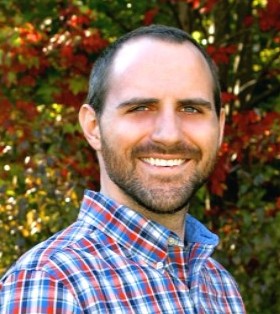
Byron Farnum
Categories: Energy & the Environment
Two Auburn College of Agriculture faculty members receive NSF Early Career awards totaling more than $1.4 million
For the first time in the history of Auburn’s College of Agriculture, two faculty members have been selected for the prestigious National Science Foundation Faculty Early Career Development, or CAREER, program within the same year.
The CAREER Program is a foundation-wide activity that offers the National Science Foundation's most prestigious awards in support of early-career faculty who have the potential to serve as academic role models in research and education and to lead advances in the mission of their department or organization.
Matthew Waters is an assistant professor of environmental science in the college’s Department of Crop, Soil and Environmental Sciences. Waters leads the Auburn PaleoEnvironmental Lab where he and his team of researchers reconstruct historic data recorded in lake sediments and cave environments to document ecological change throughout time.
His research projects focus on the land-water connections resulting from human and other environmental impacts and how these changes alter aquatic ecosystems. He has studied lake ecosystems throughout the southeastern United States and Latin America.
Waters’ $639,971 CAREER project will focus on the historic occurrence of a group of toxins, cyanotoxins, associated with modern harmful algal blooms. Sample sites will span from North Carolina to Mexico, where Waters and his team will reconstruct harmful algal blooms throughout the last 5,000 years.
The ultimate outcome of the project is to predict cyanotoxin outbreaks as well as determine if ancient societies like the Maya of Mesoamerica experienced harmful algal blooms similar to today’s societies.
Neha Potnis is an assistant professor in the college’s Department of Entomology and Plant Pathology. Her research program is focused on exploring the dynamics of the host-pathogens arms race by studying interactions of pathogens with the resident microflora, the environment and the host.
Her overall goal is to develop mechanistic understanding of how pathogen responds to this dynamic environment and leverage this knowledge for proposing novel disease management strategies or altering the current strategies to control old and new disease outbreaks.
Potnis’ $849,698 CAREER project will focus on two goals: to understand various mechanisms that diverse pathogenic bacteria use to specialize on a common host and to identify traits that allow pathogenic bacteria to acquire infectivity on a new host.
This knowledge will increase the understanding of what makes bacterium pathogenic and how pathogens can manage to shift to a new host and cause disease outbreaks in agroecosystems.
The educational goals include fostering STEM research interests by providing research opportunities for high school students from high-need schools in Alabama and first-generation minority undergraduate students, and raising public knowledge of emergence of plant disease outbreaks, their influence on plant health and, ultimately, on human lives.
“The College of Agriculture is proud of the work conducted by Dr. Potnis and Dr. Waters,” said Paul Patterson, dean of the College of Agriculture and director of the Alabama Agricultural Experiment Station. “I am very pleased to see them recognized by NSF with this distinction. This is an important career milestone for each researcher.”
BY PAUL HOLLIS
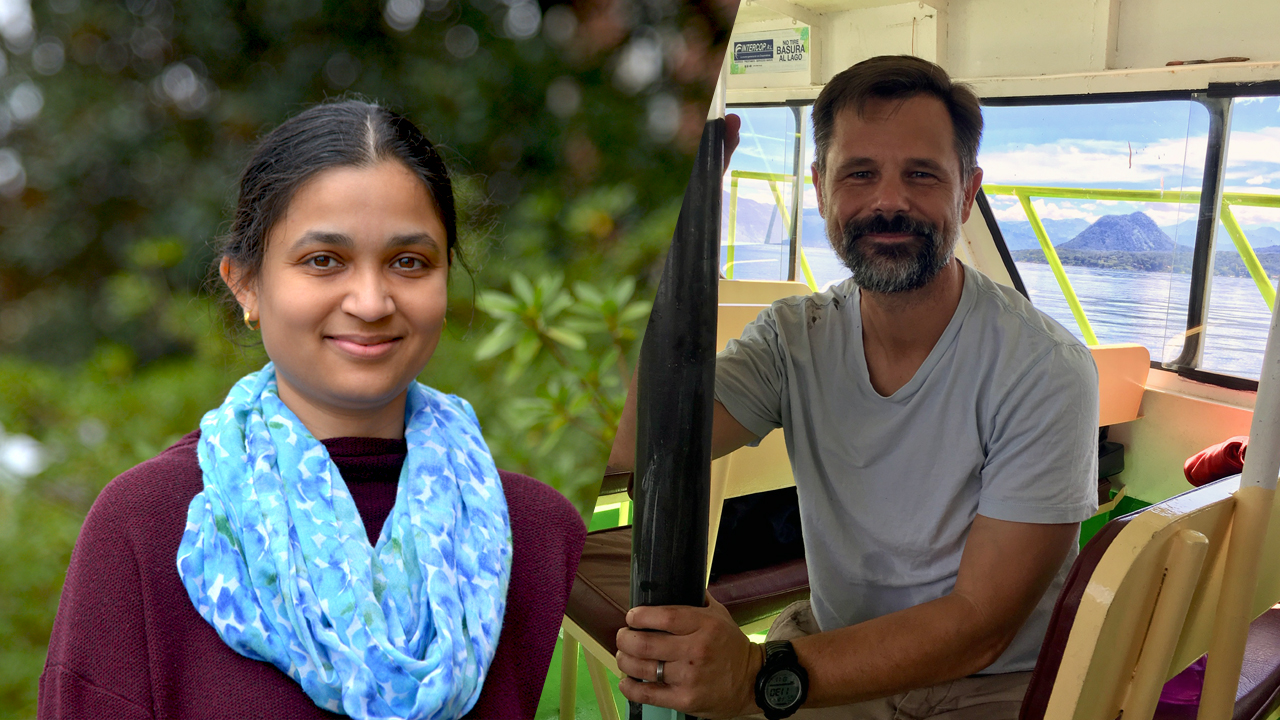
Two Auburn College of Agriculture faculty members have been selected for the National Science Foundation Faculty Early Career Development, or CAREER, program. They are Neha Potnis, left, assistant professor in the Department of Entomology and Plant Pathology, and Matthew Waters, right, assistant professor of environmental science in the Department of Crop, Soil and Environmental Sciences.
Categories: Energy & the Environment
Auburn University civil engineering assistant professor earns major NSF Award
An assistant professor in the Auburn University Department of Civil Engineering has been recognized with a National Science Foundation (NSF) Major Research Instrumentation Award worth more than $865,000.
Lauren Beckingham, who was also awarded an NSF Faculty Early CAREER Development Award in 2019, will serve as the principal investigator on the project, with the award supporting the acquisition of an X-ray Computed Nanotomography (nanoCT) system equipped with in-situ mechanical and thermal material testing that enables fundamental research in biological, geological and engineered materials.
This project will advance critical research in additive manufacturing, biomedical engineering, earth and environmental systems, energy and smart materials and sustainable, resilient infrastructure materials.
“In the few short years she has been at Auburn, Lauren has proven herself to be an incredible asset to our faculty, with her work being recognized by the NSF and other prestigious organizations,” said Steve Taylor, associate dean for research in the Samuel Ginn College of Engineering. “This award further highlights the success of our faculty and the research being conducted here at Auburn.”
Co-principal investigators on the project include Maria Auad, the W. Allen and Martha Reed Professor of chemical engineering and director of the Center for Polymer and Advanced Composites; Allan David, the John W. Brown Associate Professor of chemical engineering; Nima Shamsaei, the Philpott-WestPoint Stevens Distinguished Associate Professor and director of the National Center for Additive Manufacturing Excellence; and Marta Miletić, assistant professor of civil engineering.
This award will provide new research, outreach, teaching and training opportunities to students, faculty and staff at Auburn University and regional institutions.
Funds will allow high-imaging resolutions and in-situ testing capabilities that will be leveraged to enhance understanding of porosity formation and the integrity of additively manufactured parts, materials for biomedical applications and design of novel nanoparticle-based drug therapies, hydro-chemical-mechanical processes in natural and engineered geomaterials, structure-property relationships and design of energy and smart polymeric materials.
In addition, the project will enrich education through integration into undergraduate and graduate courses and will encourage underrepresented students to pursue STEM fields through inclusion in outreach activities including Auburn University's Women in Engineering camps and the Engineering Academic Excellence Program.
BY DREW DAWS
Media Contact: Austin Phillips, austinp@auburn.edu, 334-844-2444
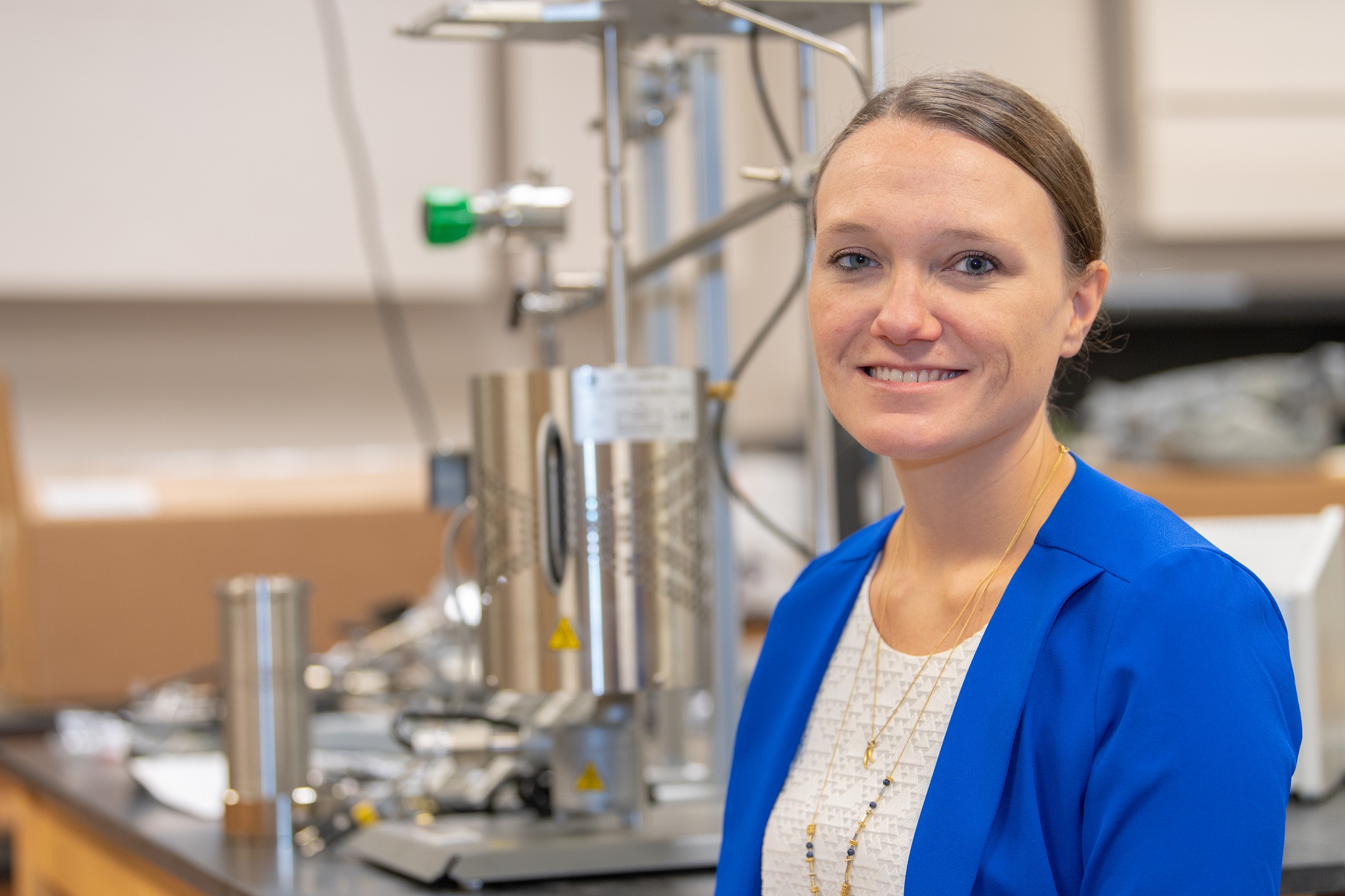
Lauren Beckingham
Categories: Energy & the Environment, Engineering
Smith receives Creative Research and Scholarship Award for research on home affordability
Rusty Smith would be the first one to tell you experience is the greatest teacher. And that’s exactly the model for how Auburn University’s Rural Studio program operates.
“We set up experiences where students can learn the things they need to learn,” said Smith, associate director of Rural Studio and associate professor in the School of Architecture, Planning and Landscape Architecture in Auburn’s College of Architecture, Design and Construction. “That’s really what we do. So to do that, you can’t really take shortcuts. The students have to learn things by experience. So by nature, we have to ask the students to do things that we ourselves don’t know how to do.”
Smith is one of this year’s two recipients of the university’s Faculty Award for Creative Research and Scholarship. The honor acknowledges the research achievements and contributions of faculty who have distinguished themselves through research, scholarly works and creative contributions to their fields.
Although Smith was recognized with the award, he would explain this award also acknowledges the hard work of his students at Rural Studio—which is Auburn’s internationally recognized design-build program for the underserved communities of Alabama’s rural Black Belt region. The program is located in Newbern, Alabama, and gives architecture students hands-on educational experience by partnering with the neighbors in the community to fundraise, define solutions, design and ultimately build remarkable projects.
“It’s important to know that the work done at Rural Studio is the work of students,” said Smith. “It is one of the things that is hard to imagine for many folks when they find that out and see it in action. The students come out and really invest themselves in some of the challenges that our clients, neighbors and community members face in rural America.”
Smith supports his students as they immerse themselves in rural areas while conducting research on home ownership attainability and testing new methods of sustainable homes. Rural Studio has designed and constructed more than 200 projects and educated more than 900 citizen architects.
In previous years, the Rural Studio was known for establishing an ethos of recycling, reusing and remaking. However, the studio’s scope and complexity of its projects to include the design and construction of community-oriented infrastructure, the development of more broadly-attainable small home affordability solutions and a comprehensive approach to addressing insecurity issues relative to income, energy, food, health and education sources has broadened over the past decade.
Its philosophy is that everyone, both rich and poor, deserves the benefit of good, dignified design. The studio continually questions what should be built, rather than what can be built. Smith applies this philosophy by creating experiences for students to address specific community needs and people needs.
Smith’s creative approach to teaching through experiences provides students the opportunity to invest themselves in the immediate needs and deeply complex challenges of rural America.
“The thing that becomes most memorable in that interaction with students is that they come to faculty members and say ‘how do I do this?’” said Smith. “You look at them and you say ‘I don’t know.’ They get nervous because it is not what they’re used to a faculty member saying, but then we roll up our sleeves and we figure it out together. Those are the moments that are the most memorable and important to me as a teacher. It’s rolling up our sleeves and learning how to do things together.”
Smith is a nationally recognized teacher and scholar who was educated at Auburn University and the School of the Art Institute of Chicago. He recently received the American Institute of Architects' National Teaching Honor Award and the American Institute of Architecture Students' National Teaching Honor Award.
BY SUSIE BRIDGES
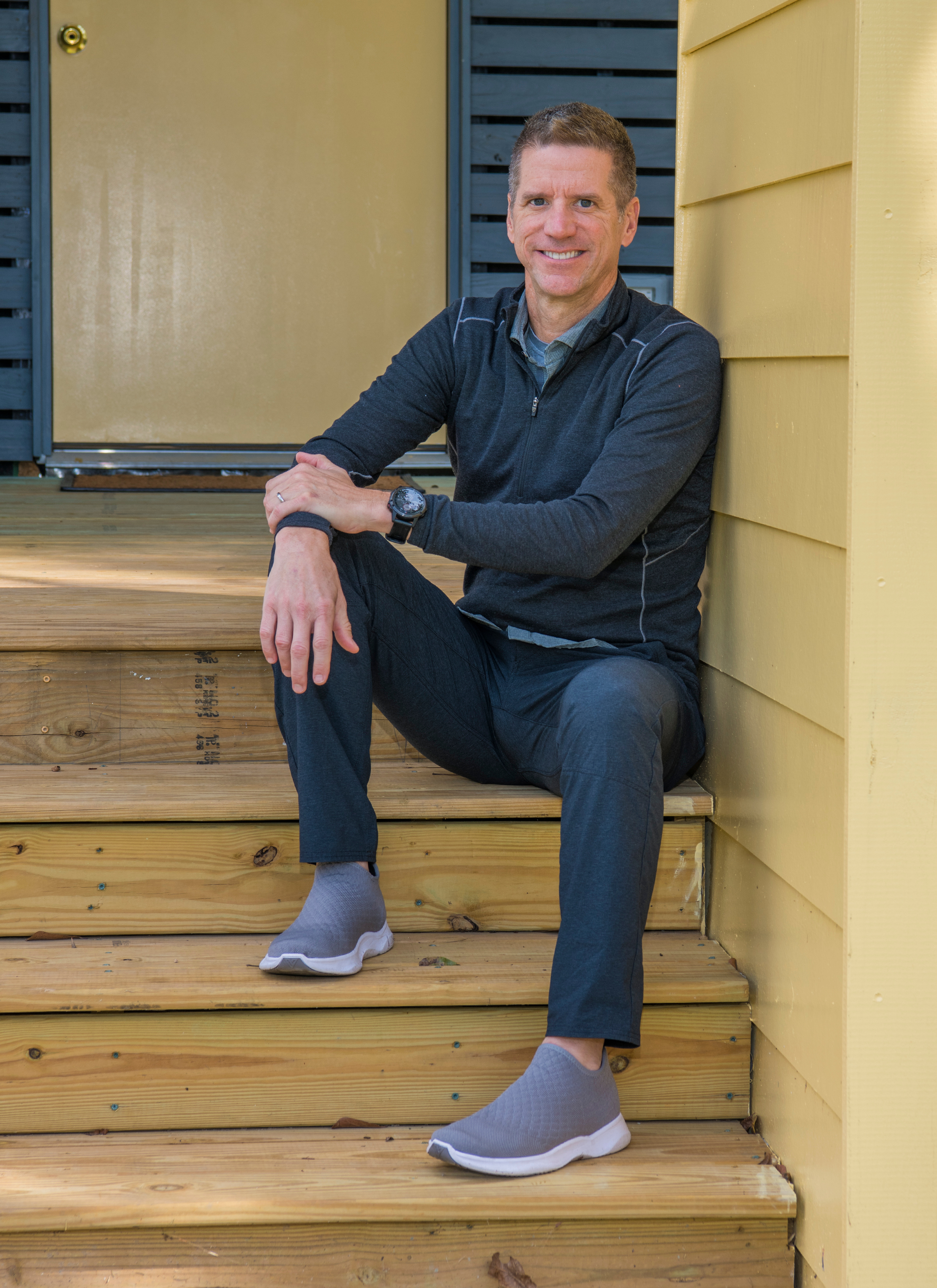 Rusty Smith, associate director of Rural Studio and associate professor in the School of Architecture, Planning and Landscape Architecture in Auburn’s College of Architecture, Design and Construction, is one of two recent recipients of Auburn University’s Faculty Award for Creative Research and Scholarship.
Rusty Smith, associate director of Rural Studio and associate professor in the School of Architecture, Planning and Landscape Architecture in Auburn’s College of Architecture, Design and Construction, is one of two recent recipients of Auburn University’s Faculty Award for Creative Research and Scholarship.
Categories: Energy & the Environment, External Engagement, Creative Scholarship
Breakthrough study points to global streams and rivers’ contribution to climate change
A new study led by Auburn University researchers and published in the journal, Nature Climate Change, shows a four-fold increase in emissions of the potent greenhouse gas nitrous oxide—a major contributor to climate warming—in global streams and rivers.
“Nitrogen loads on headwater streams and groundwater from human activities, primarily agricultural nitrogen applications, play a significant role in the increase of global riverine nitrous oxide emissions,” said lead scientist Professor Hanqin Tian, director of the International Center for Climate and Global Change Research in Auburn’s School of Forestry and Wildlife Sciences.
The study, “Increased global nitrous oxide emissions from streams and rivers in the Anthropocene,” published Dec. 23 is the work of Tian and fellow scientists from the International Center for Climate and Global Change Research, along with Australia-based climate scientist Josep G. Canadell, executive director of the Global Carbon Project, a project of Future Earth and a research partner of the World Climate Research Programme.
Tian says the innovative study presents an improved model representation of nitrogen and nitrous oxide processes of the land-ocean aquatic continuum. Researchers provided a new ensemble of multiple data products, providing quantification for the way changes in nitrogen inputs—including fertilizer, deposition and manure, climate and atmospheric carbon dioxide concentration and terrestrial processes—have affected nitrous oxide emissions from the world’s streams and rivers since 1900.
Canadell said nitrous oxide is considered the “unspoken greenhouse gas” because of its food production, which no one wants to compromise.
“We now have a more precise quantification of its impacts to help us target mitigation strategies which, in most cases, also makes farming more sustainable and increases farm-level economic gains,” Canadell said.
Professor Shufen Pan, director of Auburn’s GIS and Remote Sensing Laboratory in the School of Forestry and Wildlife Sciences, co-authored the study.
“One of the most compelling new findings is the importance of surface and subsurface processes in nitrous oxide emissions from the world’s river networks,” Pan said. “Previous estimates ignored or underestimated large nitrous oxide emissions from headwater or small rivers.”
Co-author Yuanzhi Yao, who recently received his doctorate from Auburn, added, “Small rivers in headwater zones—those lower than fourth-order streams—contributed up to 85 percent of global riverine nitrous oxide emissions.”
The study’s new insights on the quantities, distribution and hotspots of riverine nitrous oxide emissions will ultimately support the management strategies that increase crop nitrogen efficiency, thus reducing nitrogen losses and the associated environmental impacts, according to Tian. The new research emphasizes the critical need to reduce nitrogen loads into headwater streams that are close to human livelihood.
“All greenhouse gas emission pathways consistent with the goals of the Paris Climate Agreement require large and sustained reductions on nitrous oxide emissions, which in turn require improved quantification, process attribution and methodological transparency,” Tian said.
School of Forestry and Wildlife Sciences Dean Janaki Alavalapati said the work of Tian and his team is significant in the study of climate change.
“This study, which focuses on the way nitrous oxide in global streams and rivers contributes to climate change, could have a resounding impact on the study of climate change and ways it is approached by scientists worldwide,” Alavalapati said.
In addition to Tian, Pan, Yao and Canadell, researchers on this study included Auburn postdoctoral fellows Hao Shi and Rongting Xu and doctoral student Naiqing Pan.
BY TERI GREENE
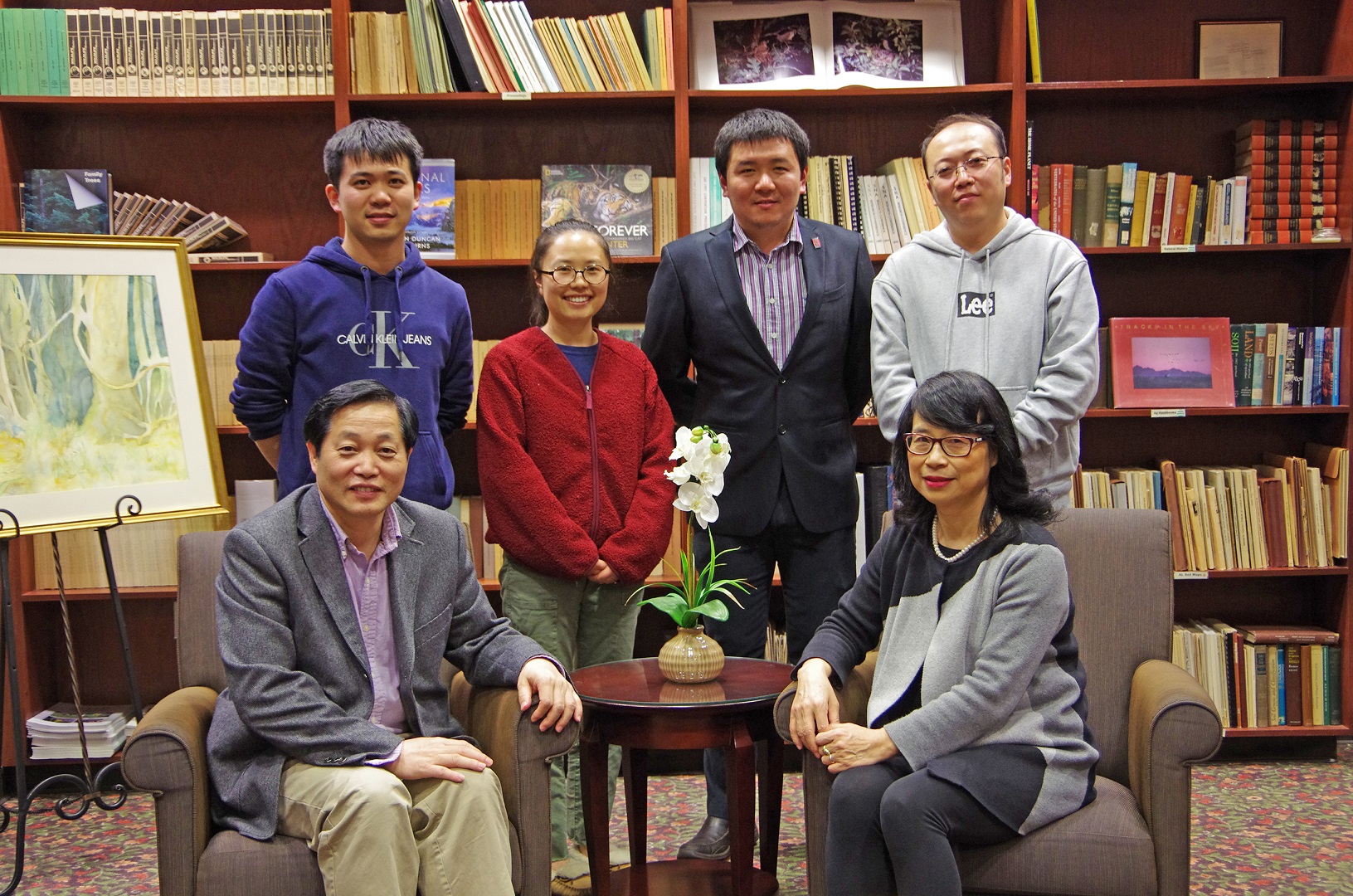
A new breakthrough study led by Auburn researchers published in the journal, Nature Climate Change, points to global streams and rivers’ contribution to climate change. The study’s co-authors are, front row from left: Hanqin Tian and Shufen Pan; and, back row from left, Naiqing Pan, Rongting Xu, Yuanzhi Yao and Hao Shi.
Categories: Energy & the Environment
Auburn’s Department of Agricultural Economics and Rural Sociology conducts integrated research to look at the human side of science
Grants from the National Science Foundation are some of the most prestigious and competitive researchers can receive, with only one out of every five proposals ultimately being approved for an award.
So for one department in Auburn University’s College of Agriculture to have three researchers be part of teams approved for three separate NSF projects at roughly the same time is uncommon, to say the least.
“NSF grants are elite,” said Joshua Duke, chair and professor for Auburn’s Department of Agricultural Economics and Rural Sociology. “These particular projects are integrated grants, involving scientists creating innovations but also involving the economists and rural sociologists discovering how these innovations actually affect people.”
While some NSF grants are disciplinary, focusing on one area, integrated grants bring together researchers from different fields to work together on a common problem.
“Some of the best research occurs when social scientists can connect the innovations of science to how peoples’ well-being improves and the productivity of our natural resource base,” Duke said. “In the past, it wasn’t common for these integrated studies to occur, but they have been accelerating in recent years.”
Social scientists have two roles in integrated science research projects, he said.
“The first role is understanding how humans interact with natural resources—how the decisions we make affect agricultural production and natural resources,” Duke said. “This can help scientists to model natural processes.”
At the same time, economists and rural sociologists also can help understand the impact of these scientific changes, he said.
“For instance, if there is an improvement in water-use efficiency in agriculture, it can trigger changes in market prices for commodities. I like to think we’ll be able to contribute in the beginning and in the end of a scientific research project. We can advance the science and often have the greatest impact in doing so.”
One of the NSF grant participants is Ruiqing Miao, assistant professor in the Department of Agricultural Economics and Rural Sociology. His project addresses an important research challenge: how to balance food-energy-clean water production, both spatially and temporally, with limited resources and a changing environment.
“To meet the growing demands of human population that is expected to reach 9.6 billion by 2050, the global and regional capability in providing abundant and affordable food, energy and water will be increasingly important to social stability and economic development,” Miao said.
The $500,000 project’s focus is on the Mississippi River Basin in the U.S. because it is the largest river basin in North America, draining about 41 percent of the contiguous U.S. and most of the U.S. Corn Belt.
“Research outcomes from this project will shed light on optimizing resource use efficiencies and predicting food, energy and clean water sustainability in the context of multiple-factor global changes including climate change, air pollution, urbanization, land and water use changes and social-economic development,” Miao said.
This project will foster science communication and stakeholder engagement for critical issues through summer school programs, workshops and conferences and universities’ broad strategy of external engagement. It also will assist policymakers in making informed decisions regarding future policies that will enhance the quality and quantity of food, energy and clean water.
“As an economist on the team, my role is to develop an economic optimization model to evaluate the economic tradeoffs between resource inputs and product returns, targeted at optimizing food-energy-water provision in sub-basins and the entire Mississippi River Basin as a whole,” Miao said.
Other members of the research team from Auburn University include principal investigator Hanqin Tian and Susan Pan, both of the School of Forestry and Wildlife Sciences. Chaoqun Lu, a quantitative ecosystem ecologist at Iowa State University, also is a team member.
Another professor in the Department Agricultural Economics and Rural Sociology—Denis Nadolnyak—is working on an NSF grant that will study whether more irrigation-fed farms in the Deep South could lead to a more robust agriculture industry, possibly becoming an even greater economic engine.
Irrigation-fed farming is not as commonplace in the humid and wet Deep South, particularly in Alabama, as in the rest of the country. The 17 states in the western United States, for instance, make up three-quarters of all irrigated farmed acres, and, in California, nearly half of all farmland is irrigated, according to the latest federal data.
In contrast, only about 4 percent of farmland is irrigated in Alabama, while it is the fourth wettest state in the nation.
The four-year, $1.75 million NSF grant will allow researchers to examine how a transition from rain-fed farming to irrigation-fed farming could impact harvests and water use, providing crucial data to policymakers considering initiatives to encourage irrigation.
The study will look at the Mobile River Basin, the 44,600 square miles that drain into Mobile Bay that includes central Alabama and portions of eastern Mississippi and northwest Georgia. The research team will examine how the linked resources of food, water and energy within the basin would be impacted through a transition to irrigation farming.
Through computer modeling, the team will study how various levels of irrigation, from continuing the current course to a significant shift to irrigation, will affect agriculture productivity, energy production, water supply and waterway navigation. Researchers also will work with 60 farmers within the basin to evaluate their openness to transitioning.
“My role as an economist on the research team is to analyze the economic benefits and costs of adopting irrigation-fed agriculture in Alabama and in the Southeast, particularly the benefits and costs that accrue to the producers and rural communities,” Nadolnyak said.
Leading the research is Hamid Moradkhani, the Alton N. Scott Endowed Professor of Engineering and director of the University of Alabama’s Center for Complex Hydrosystems Research.
In yet another NSF project, Professor and Rural Sociologist Michele Worosz is part of an interdisciplinary team of researchers from Auburn University that received a $3 million Research Traineeship, or NRT, grant to train the next generation of scientists and leaders to conduct cutting-edge interdisciplinary and applied research, develop effective communication skills and prepare them for the workforce.
This grant is the first NRT award for Auburn and the first in the state of Alabama that will train students to make a sustainable, lasting impact increasing the climate resiliency in the Southeastern United States.
“Many times stakeholders have difficulty using specific climate models, whereas climate scientists may have difficulty understanding why their models are not being used,” Worosz said. “These students will be trained in climate research, science communication and multidisciplinary collaboration, all of which will help them work with diverse audiences in the co-development of resilience strategies.”
Worosz will be serving three roles. First, she will direct sociological research on climate resilience in agri-food systems focusing on food safety, small-scale production and local foods. Second, her course—Sociology of Natural Resources and the Environment—which focuses on media framing of climate change politics and science, will be offered to trainees as part of the curriculum. Third, she will supervise trainees in rural sociology and serve on thesis and dissertation committees for other trainees.
Nine faculty and senior administration will work with approximately 85 graduate students including 18 fully funded trainees.
Leading the NSF Research Traineeship is Karen McNeal of Geosciences. Other College of Agriculture team members include Puneet Srivastara, professor of Biosystems Engineering and director of the Water Resources Center, and Di Tan, assistant professor of Crop, Soil and Environmental Sciences.
BY PAUL HOLLIS
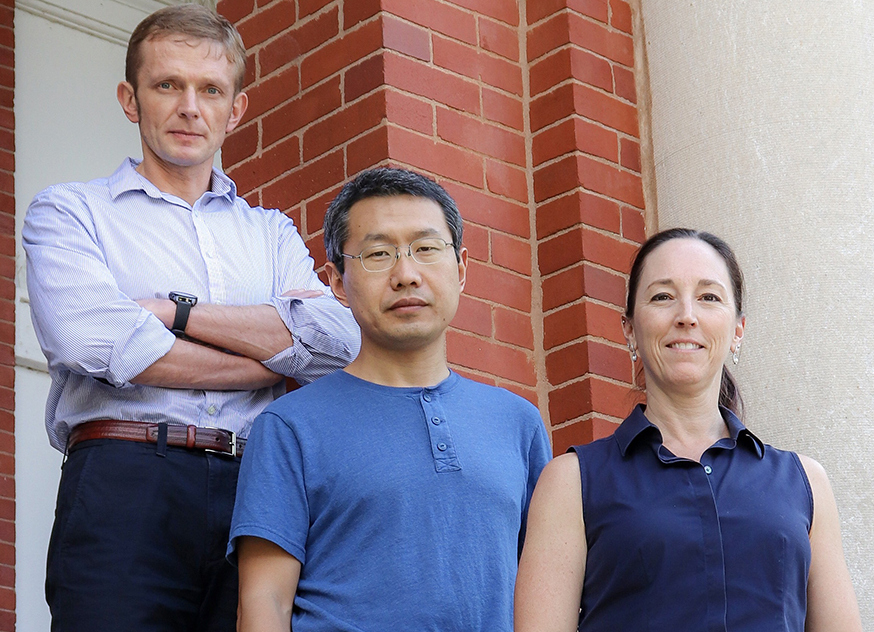
Auburn’s Department of Agricultural Economics and Rural Sociology has three faculty members working on National Science Foundation projects: Professor Denis Nadolnyak, Assistant Professor Ruiqing Miao and Professor Michele Worosz.
Categories: Energy & the Environment, Food Systems
Nearly 600 Auburn students showcasing their research and creativity April 9 at Auburn Research Student Symposium
Nearly 600 Auburn University students with a flair for research and creativity will showcase their talents when they gather for the annual Auburn Research Student Symposium.
With projects ranging from chemical engineering to plant pathology to architecture and design, the symposium on April 9 will provide Auburn and Auburn Montgomery students an opportunity to share their discoveries university-wide. The daylong event will take place in the Student Center.
Undergraduate and graduate students from almost every department have registered to participate through posters, oral presentations and creative scholarship displays. Approximately 400 of the young researchers will present posters and displays more than 180 will give 10-minute talks, all under the watchful eyes of judges who will award top honors in a variety of university-wide and college-specific categories.
An awards ceremony and reception will be held April 18 at 5 p.m. in the Student Center ballroom. The keynote speaker will be Michael Zabala, assistant professor of mechanical engineering, who earned his bachelor’s degree at Auburn in 2007.
Steve Taylor, chair of the Research Symposia Committee and associate dean for research in the Samuel Ginn College of Engineering, said, “Our students’ innovative research covers many areas, from projects in STEM disciplines [science, technology, engineering and mathematics] to the arts and humanities. They are working with our world-class faculty on life-changing projects that could shape new developments in many fields.”
Following the April 9 symposium, Nobel Laureate in Chemistry George P. Smith will visit Auburn University and the College of Veterinary Medicine April 10-11. Professor Smith will present a public lecture at 2 p.m. April 10 in The Hotel at Auburn University and Dixon Conference Center auditorium, which will be followed by a reception. On April 11, he will be available to meet with faculty and students at the College of Veterinary Medicine.
A fall event, the Auburn Research Faculty Symposium, will be held in September to recognize faculty excellence in research and creative scholarship.
More information about the student symposium is available at www.aub.ie/researchstudentsymposium or by contacting Taylor at taylost@auburn.edu.
WRITTEN BY CHARLES MARTIN
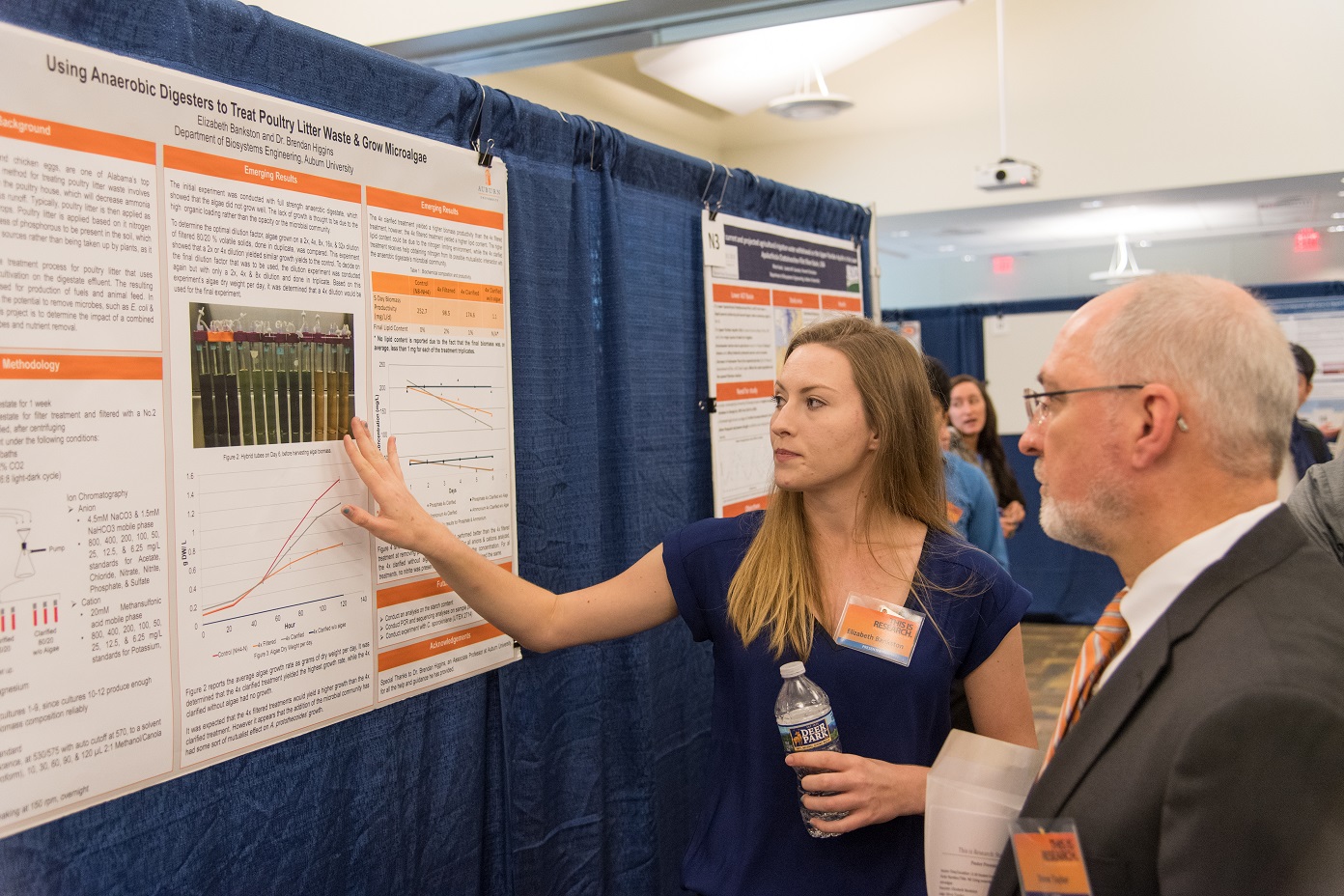
Auburn students with a flair for research and creativity will showcase their talents when they gather April 9 in the Student Center for the annual Auburn Research Student Symposium. Pictured, student Elizabeth Bankston discusses her research poster with Steve Taylor, chair of the Research Symposia Committee, at last year’s symposium.
Categories: Energy & the Environment, Cyber, Health Sciences, Transportation, Food Systems, Security, Engineering, Creative Scholarship
Auburn University achieves research milestone with ‘R1’ Carnegie classification
In another affirmation of its drive forward to excellence, Auburn University achieved a research milestone Monday - being elevated to an “R1” institution by the Carnegie Classification of Institutions of Higher Education.
The announcement follows a concerted effort by Auburn to elevate its commitment to life-saving research, beginning with an announcement by Auburn President Steven Leath in December 2017 and subsequent awarding of $5 million for three years toward the Presidential Awards for Interdisciplinary Research, or PAIR. An R1 designation by Carnegie is reserved for doctoral universities with the highest levels of research activity.
Among 120 institutions to receive the R1 designation Monday, Auburn was listed in the top 100 of such universities, raising its classification from an already lofty “high research” R2 classification to Monday's “very high research activity” R1 label.
“This tremendous designation acknowledges the hard work involved in the pioneering discoveries happening at Auburn every day,” said Leath, who was recently named one of seven new members appointed by President Trump to the National Science Board, a policy-making body of the National Science Foundation. “We are grateful to the university’s faculty and staff, especially Graduate School Dean George Flowers, for their unwavering commitment to elevating Auburn’s profile as a world-class academic institution.
“Auburn is on the move, and this prestigious distinction recognizes Auburn’s critical role in creating new knowledge and helping others live better lives.”
Universities considered for the R1 designation must have awarded at least 20 research/scholarship doctoral degrees and had at least $5 million in total research expenditures, according to Carnegie’s classification website. Auburn has grown its research efforts in both STEM and non-STEM areas, furthering its institutional commitment to offer solutions to real-world problems and grow its reputation as a go-to university in providing results that transform and inspire.
“Auburn University is known for its innovative and transformational research, and receiving the R1 classification is a significant accomplishment,” said Jennifer Kerpelman, interim vice president for research. “This classification recognizes the dedication, commitment and hard work of Auburn’s faculty and student researchers across all disciplines.”
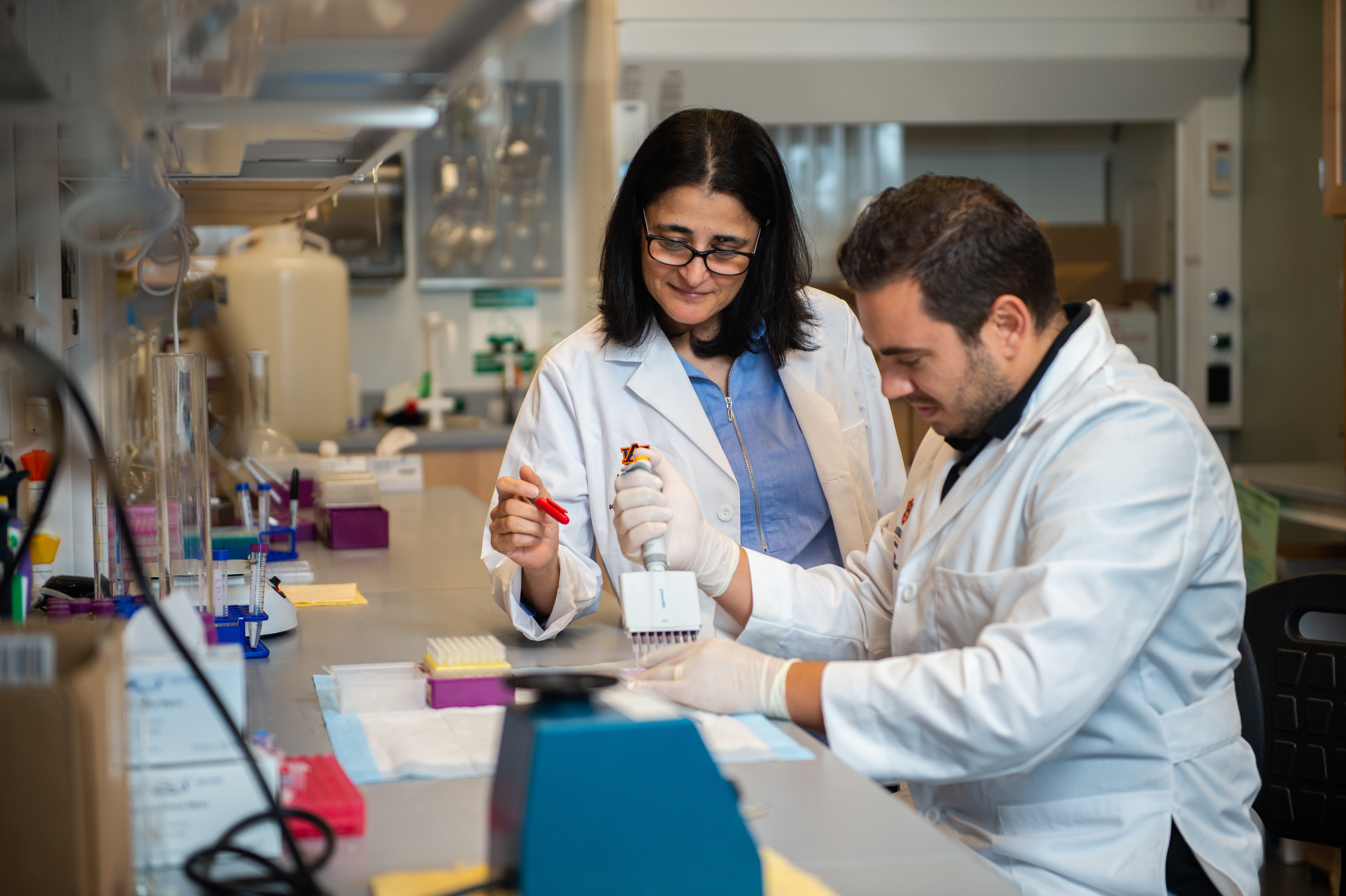
Dr. Amal Kaddoumi, left, a professor in Auburn’s Department of Drug Discovery and Development, works in a lab with graduate research assistant Sweilem Al Rihani. Kaddoumi is leading a multi-disciplinary team in an investigation of oleocanthal, a molecule that appears naturally in extra-virgin olive oil, as a novel preventative treatment for such diseases as Alzheimer’s or dementia.
Categories: Energy & the Environment, Cyber, Health Sciences, Science, Technology, Engineering and Mathematics (STEM), Transportation, Food Systems, Engineering, Auburn In the News, Creative Scholarship
Auburn agricultural research shows different farming strategies needed for changing climate
Farmers will need to change their management strategies over the next few decades to adapt to impending climate extremes, according to a study recently published by researchers at Auburn University and Pennsylvania State University.
The study, featured in the June 11 issue of the open access journal PLOS ONE, is the first climate change study on corn that focuses on aspects of growth and development from an agronomic viewpoint. The majority of such studies have used either simulation or statistical models to evaluate yield losses.
And while the research itself focuses on three northeastern U.S. states, the general conclusions are applicable for all regions, including the Southeast, says Rishi Prasad, assistant professor and extension specialist with the College of Agriculture’s Department of Crop, Soil and Environmental Sciences.
“We need to investigate the Southern region as well,” said Prasad, who began the initial study during his time as a post-doctoral scholar at Pasture Systems and Watershed Management Research Unit of USDA’s Agricultural Research Service at Penn State.
“We are going through similar phases as those in the Northeast, where we have a very wet period followed by a very dry period. We need to understand how future climate change is going to affect our current scenario and what kind of best management practices we need to be prepared for the next 50 years.”
The warming trends occurring are specific to location, he says.
“The globe is warming, but we are seeing different heating effects from one location to another,” Prasad said. “It will be difficult to make a general recommendation for an entire region. Instead, recommendations will need to be location-specific, depending on how fast a location is warming.”
Prasad and his colleagues chose corn as the subject of their study because of its importance to U.S. agriculture, offering many possibilities for feeding and fueling a growing world population.
“However, future corn production will potentially face vagaries of extreme weather in a warming climate that is being affected by greenhouse gas emissions,” he said. “These emissions currently are the highest in human history and are expected to continue (rising?)in coming decades.”
While mean annual temperatures already have increased throughout the world, the global temperature is expected to increase further by 36 degrees F. by 2050, Prasad said, and the local effects on heat, cold and precipitation extremes will vary widely, with regional differences in geography and landscape features.
Corn production in the Northeast U.S. will suffer from the impacts of climate extremes like other corn-growing regions, but it draws special attention from researchers because it is a major dairy region, and corn is a major feed for the industry. Also, the Northeast is cited as the fastest-warming region in the contiguous U.S.
“Most climate-change studies on corn have been carried out in the Midwest and Great Plains, with little attention to the Northeast, so we saw a need to evaluate the local risks of extreme climate on corn production in the region,” Prasad said.
Although several global and regional studies have evaluated heat and water stress effects on corn yield using historical weather data, there is less information on growth-stage-specific anomalies in corn production at local levels, he said.
“Warming trends in the U.S. are not spatially and temporally uniform, so local evaluations of climate-change effects on corn production are important,” Prasad said. “Examining temperature anomalies, water deficit periods and frost occurrences during the growing season are of great importance as these factors are strongly associated with yields.”
The study views data from nine different climate models that simulate the climate of the entire world.
“Because they’re simulated on a larger scale, we fine-tuned the data down to a smaller scale,” Prasad said. “We downscaled it so we could study the impact of climate change from one place to another place in one particular region.”
Researchers used the climate models looking 100 years into the future, all the way to the end of the 21stcentury. They considered current farming practices, such as the time when farmers are planting and harvesting their corn. The study focused on locations in New York and Pennsylvania, where corn production provides feed for the dairy industry.
“We looked at how corn production is going to change in the future,” Prasad said. “One of the most important stages of the corn lifecycle is the reproductive stage, where the corn produces pollens. If, during that period, the temperature exceeds the upper threshold of 95 degrees F., the pollen viability decreases, or the pollens will not be fertilized and will not form corn grains. We’re looking at what’s happening in the future in terms of these high temperatures episodes, especially during the corn reproductive phases.”
The study concludes that if farmers continue with current management practices, there will be a dramatic decrease in yield, and the reason for that is two-fold, he said.
“High-temperature frequencies will increase, and 2050 is when we can expect to see a very clear demarcation of this effect,” Prasad said. “We also looked at the moisture deficit trends during corn growth stages, and it is widening. The corn will experience more drought during its main reproductive phase. These two situations will make the scenario worse in the future.”
The study goes on to recommend possible remedies for corn producers, including a shift in planting dates and irrigation.
“The months of January, February and March are getting relatively warmer than they used to be, and the warming trends will continue in the future,” Prasad said. “This means growers can shift their planting dates backward from the typical April planting dates for corn to avoid high heat intensities during the reproductive stage of corn.”
Also, with the widening gap between evapotranspiration and precipitation, especially during corn’s prime reproductive phase irrigation is recommended.
Prasad’s research at Auburn continues to focus on the development of next-generation best management practices for crop-livestock systems
“We need to approach in an integrative way how these weather changes will affect environmental nitrogen and phosphorus losses and affect water, air and soil quality.” Prasad said. “We need to develop the next generation of best management practices in terms of managing water and in terms of managing nutrients so that we have an adaptive response to a changing weather pattern.”
Also involved in the research were Heather Karsten, associate professor of crop production ecology, and Greg Roth, professor of agronomy, Pennsylvania State University; Alan Rotz, Stephan Kpoti Gunn and Anthony Buda, all with the Pasture Systems and Watershed Management Research Unit, U.S. Department of Agriculture's Agricultural Research Service; and Anne Stoner, Climate Science Center, Texas Tech University. This research was supported by the U.S. Department of Agriculture's Agricultural Research Service.
BY PAUL HOLLIS
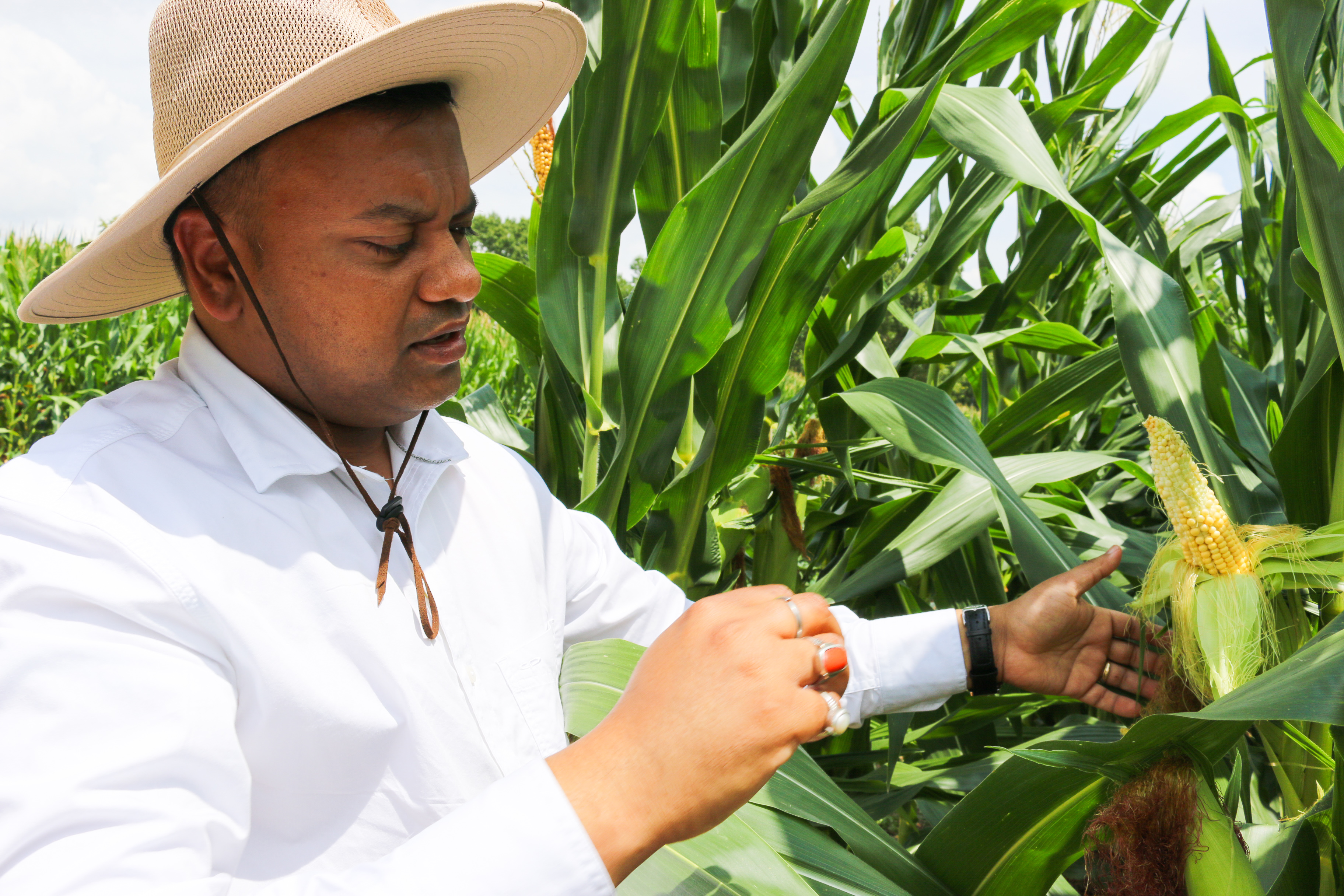
Dr. Rishi Prasad, assistant professor and extension specialist in the Department of Crop, Soil and Environmental Sciences
Categories: Energy & the Environment, Food Systems
Presidential Awards for Interdisciplinary Research (PAIR) Announced
Auburn research teams are tackling local and global challenges ranging from housing affordability to advanced manufacturing of medical implants, thanks to a new $5 million investment in 11 groundbreaking projects designed to deliver practical, life-changing solutions.
“Auburn research is on the move,” said Auburn President Steven Leath. “Our world-renowned faculty are leading Auburn in our drive to solve problems, provide real-world benefits and serve the social good.”
Today’s announcement is part of an initiative funded through the Presidential Awards for Interdisciplinary Research, or PAIR, that Leath created last year to propel Auburn to new levels of research and development distinction. The PAIR funding will span three years. Additional research topics include rural health disparities in poverty-stricken areas, treating the hallmarks of Alzheimer’s disease, neuroscience research and graduate education, reducing carbon dioxide emissions or using them for other means, and other critical areas of human and environmental health.
Project teams were selected from three award tiers: Tier 1 for new teams, with funding up to $100,000 per year; Tier 2 for established teams, with funding up to $250,000 per year; and Tier 3 for high-impact teams, with funding up to $500,000 per year. All proposals received an in-depth evaluation from Auburn’s associate deans for research, and Tier 3 proposals were also externally evaluated. Top-evaluated proposals were those that most closely aligned with the goals of PAIR as stated in the program guidelines. From 101 proposals received, 11 project teams will receive funding (the two top-evaluated proposals per tier for up to three years of funding, as well as five additional, top-evaluated Tier 1 proposals for two years of funding with a third-year no-cost extension available).
Project teams to receive funding are:
Project: Creating better bio-medical implants for patients in need using additive manufacturing, or “3D Printing” (Tier 3; $1,275,000 total funding over three years)
The issue: Auburn researchers plan to develop improved implants/orthotics for those with neuromuscular and skeletal system needs through the process of additive manufacturing. This process, also known as “3D printing,” allows for more customizable implants for small animals and humans and the possibility of embedded drugs in implants to ward off infections that can sometimes follow implant surgeries.
The Auburn solution: Research will take place to ensure “3-D printed” biomedical implants will remain durable during use and conform well to a patient’s needs while serving as a reliable drug-delivery source that can offer injury-triggered pain relief. The additive manufacturing process also helps reduce implant production costs.
Project: Unlocking Home Affordability and Prosperity in Rural America (Tier 3; $1,275,000 total funding over three years)
The issue: Auburn researchers are focusing on helping those in poor, rural areas gain greater access to resources that will ultimately lead them to finding affordable housing options.
The Auburn solution: Auburn researchers will work toward the creation of a National Institute of Rural Prosperity that will foster partnerships to help rural residents more easily overcome barriers to home ownership, including mortgage lending, home insurance and local ordinances and policies.
Project: Reducing the burden of neurological disease by increasing fundamental knowledge about the brain and nervous system (Tier 2; $637,500 total funding over three years)
The issue: Auburn researchers will work to mitigate against mental, neurological and substance use disorders, which make up a substantial proportion of the world’s disease burden.
The Auburn solution: A team of experts in chemistry, physiology, development, degeneration, and imaging of the brain will collaborate to develop a neuroscience center to increase fundamental knowledge about the brain and nervous system and to use that knowledge to reduce the burden of neurological disease.
Project: A Mobile Mitochondria Laboratory (AU MitoMobile) to Lead the World in Measuring Bioenergetics in Natural Settings (Tier 2; $636,941 total funding over three years)
The issue: Because the successful study of genetic and environmental impacts on mitochondria (the energy-providing part of the cellular makeup of plants and animals) can be severely limited in a laboratory setting, Auburn researchers will collaborate to build a mobile laboratory to bring this research to field sites.
The Auburn solution: A team of evolutionary biologists, environmental biologists, exercise physiologists and engineers will develop a mobile laboratory for measuring mitochondrial energy production of vertebrates at remote locations, such as oil spill sites and other places where environmental disturbances have damaged the health of local wildlife.
Project: Rural African American Aging Research (Tier 1; $255,000 total funding over three years)
The issue: Auburn researchers will assess the psychosocial stressors that can contribute to the problem of rural African Americans having a lower life expectancy and a faster progression of age-related diseases. Research in this area has the potential to inform health-promoting interventions and polices and lead to health and social equity.
The Auburn solution: PAIR funding will be used to establish a sustainable research structure in east-central Alabama focused on improving health in that community and beyond by partnering with surrounding communities. The ultimate goal is to grow the scientific knowledge of how psychosocial risk factors can accelerate aging among African Americans.
Project: Reducing and reusing carbon dioxide emissions for useful means (Tier 1; $255,000 total funding over three years)
The issue: Auburn researchers seek to combat the dire environmental effects of carbon dioxide emissions through a plan to reduce such emissions and store or utilize them for other useful means.
The Auburn solution: Researchers will work toward the development of an Alabama CO2 Utilization and Storage Center at Auburn University, with a goal of establishing Auburn as a leader in carbon dioxide utilization and storage research focused on best ways to capture CO2 emissions and convert them into helpful forms such as green fuels.
Project: Extra-virgin olive oil examined for uses in treating hallmarks of Alzheimer’s (Tier 1; $150,000 total funding over two years)
The issue: Auburn researchers are examining the consumption of extra-virgin olive oil for its potential to have a positive effect on the disease hallmarks of Alzheimer’s Disease. The research team is seeking to conduct more research into this area to determine the viability of findings for humans.
The Auburn solution: A multidisciplinary team will be assembled to conduct a pilot study on the positive effects of extra-virgin olive oil and to produce data for a strong human clinical trial to be submitted to funding agencies.
Project: Drugs from Dirt: Development and Characterization of Novel Antimicrobial Compounds (Tier 1; $150,000 total funding over two years)
The issue: Because many disease-causing organisms are resistant to current drug therapies, Auburn scientists are pursuing new approaches to the development of antibiotics.
The Auburn solution: Researchers will test and develop new therapeutic strategies for treating infectious diseases, through the study of antiobiotic-producing bacterial cultures they have discovered in soil. These are potentially life-saving antibiotics that could have application in human medicine, agriculture, and veterinary practice.
Project: Creating a Climate Information System to aid in planning for climate-related disasters (Tier 1; $150,000 total funding over two years)
The issue: Auburn researchers will create a climate service model that will help guide decision making in planning for climate-related disasters that can cause great economic and social damage.
The Auburn solution: A cross-disciplinary team of investigators will develop a science-based, Unified Climate Information System to better inform planning, policy and practices at regional, national and global scales. In addition to exploring emerging climate data, the research will seek to improve and integrate impact models for water quantity, water quality, crop growth and disease transmission simulations. The project also will include the creation of an interactive website platform, with all work being focused on the southeastern U.S. and being easily adaptable to other locations worldwide.
Project: Emerging Contaminants Research Team (Tier 1; $150,000 total funding over two years)
The issue: Auburn experts are conducting research into newly recognized environmental contaminants, such as per- and polyfluoroalkyl substances, which have not been studied sufficiently to determine their impact on the environment and their possible health risks to humans and wildlife.
The Auburn solution: This Auburn research team will use its expertise in civil engineering, pharmacology, aquatic sciences, and other key areas to collaborate on focused research into the effects of these and other previously understudied contaminants, to increase knowledge and public awareness of risk factors.
Project: Development of the AU-NASH Research Program (Tier 1; $150,000 total funding over two years)
The issue: Auburn researchers are seeking solutions to the problem of nonalcoholic steatotic hepatitis, or NASH, the most severe form of non-alcoholic fatty liver disease and perhaps the most significant form of chronic liver disease in the world today, which has no current approved therapies available.
The Auburn solution: The research team will work to address this urgent, unmet medical need by developing a disease therapy program to increase positive outcomes for those suffering from liver disease.
For more details on each PAIR project and how Auburn is inspiring as a leading provider of life-changing research, creative scholarship and community engagement, visit auburn.edu/auburninspires.
BY JONATHAN CULLUM AND PRESTON SPARKS
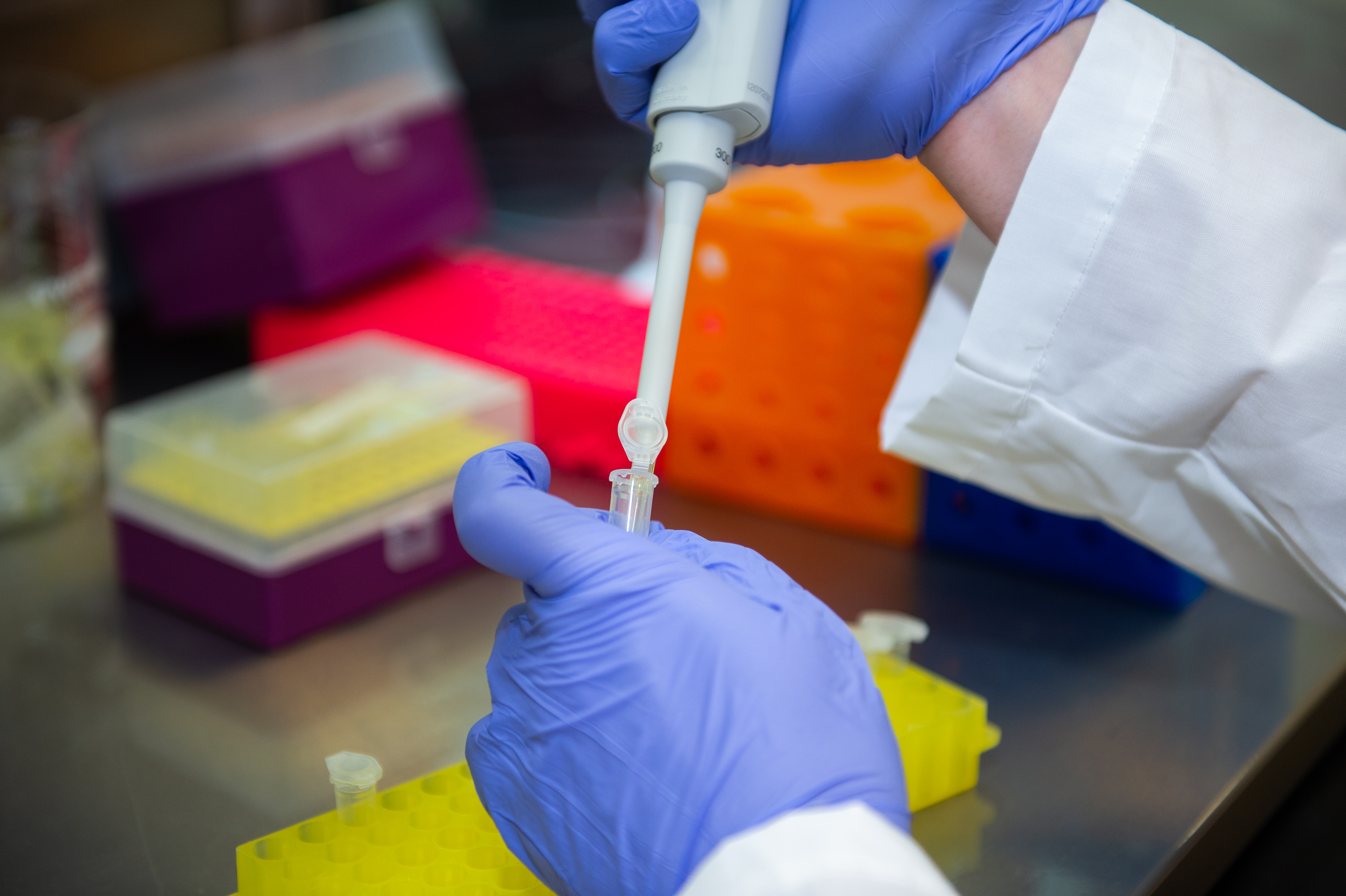
Categories: Energy & the Environment, Health Sciences, Science, Technology, Engineering and Mathematics (STEM), Food Systems, Engineering
Auburn University researchers study longleaf pine drought resilience
Longleaf pine ecosystems may be the key to creating more drought-resilient forests, according to a study that Lisa Samuelson, Alabama Agricultural Experiment Station researcher and Alumni Professor in Auburn’s School of Forestry and Wildlife Sciences, is conducting.
“Due to the challenges related to climate and water availability, a better understanding of ecosystem behavior is needed to improve the management and conservation of our forests,” Samuelson said. “The goal of this study is to gain a better understanding of longleaf pines’ role in creating resilient forests for the future.”
Longleaf pine once was one of the most extensive forest ecosystems in North America, covering an estimated 90 million acres. Today, due to overharvesting or forestland conversion to farming or development purposes, less than 4 percent of longleaf pine forests remain.
Samuelson, who is also director of Auburn’s Center for Longleaf Pine Ecosystems, an entity dedicated to the species’ restoration, conservation and management, said the reduction in the amount of longleaf communities has incurred many ecological consequences including loss of plant and wildlife species. Besides preserving these species’ habitats, rejuvenation of the once-abundant pine also may improve overall forest health due to its ability to withstand drought.
“There is increased interest in the restoration of longleaf pine forests, not only for forest products but for a variety of important ecosystem services and, more recently, as a species resistant to disturbances associated with changes in climate,” Samuelson said. “Our research will provide information on the current and future vulnerability of longleaf pine to drought.”
The study site is an 11-year-old longleaf pine plantation owned by the Georgia Department of Natural Resources and managed by The Nature Conservancy. Samuelson’s objective is to explore the longleaf pine’s drought adaption patterns and its resilience in relation to its ecosystem. Basically, she and her research team are manipulating drought to study its effects.
“Our study is unique in that we are removing precipitation to study drought effects,” she said. “Whereas most studies utilize irrigation to remove drought effects, we are creating drought.”
To remove about 40 percent of the water that typically would hydrate ground in the experimental plots, the researchers have installed rainfall exclusion troughs that catch precipitation and transport it away from the trees’ roots.
Keeping detailed records of soil moisture dynamics, the scientists then use extensive monitoring equipment, including sap-flow probes and 30-foot-tall scaffolding, to examine above- and below-ground mechanisms that control tree growth and survival. The team monitors total tree health in the absence of hydration, including stand transpiration, leaf physiology, soil and ecosystem carbon fluxes, needle and shoot phenology, photosynthesis and phenology.
Once collected, the soil moisture data will be used to create predictability scales for regional and seasonal drought patterns, and the tree-growth/health data will contribute to the development of parameters and models that simulate longleaf pine growth under varying climate and fire regimes.
Ultimately, the research data will benefit the overall effort to improve the management of Southern forests, Samuelson said.
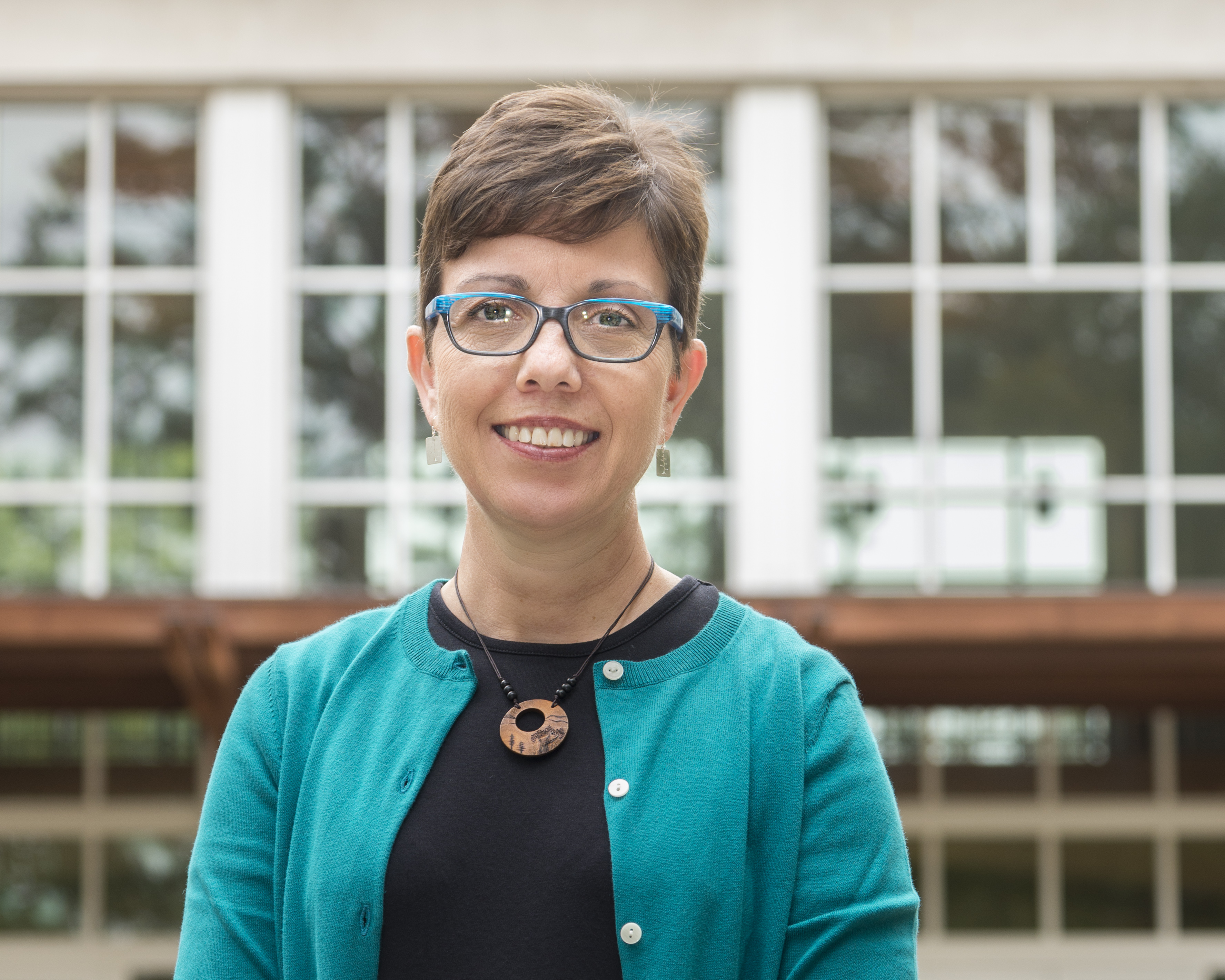 Dr. Lisa Samuelson, director of Auburn’s Center for Longleaf Pine Ecosystems and Alumni Professor in the School of Forestry and Wildlife Sciences (photo by Rebecca Long)
Dr. Lisa Samuelson, director of Auburn’s Center for Longleaf Pine Ecosystems and Alumni Professor in the School of Forestry and Wildlife Sciences (photo by Rebecca Long)
Categories: Energy & the Environment
Alabama Power Foundation establishes interdisciplinary research institute in honor of Charles D. McCrary at Auburn University
The Alabama Power Foundation has made a significant philanthropic investment–the largest gift to support research in university history–to create the Charles D. McCrary Institute at Auburn University, as announced on Friday, November 7, 2014, by the Auburn University Board of Trustees. The gift is being made in honor of McCrary’s recent retirement as president and chief executive officer of Alabama Power Company. McCrary, a 1973 mechanical engineering graduate of Auburn, completed a 40-year career with the company in April. The new institute will focus on interdisciplinary research and advanced technologies to improve the security and operations of our nation’s infrastructure while valuing natural resources and conservation. The creation of the institute will enable Auburn to attract nationally recognized faculty who are at the forefront of emerging technological issues, while leveraging existing university resources and personnel to broaden the institute’s technological impact and to inform policy and practice.
“It is very important that we guard and protect the security of our energy infrastructure systems, because they represent resources that are essential to our well-being. To secure the operation of these systems we will have to provide for the development of significant expertise to not only protect the resources already in place, but to develop next-generation technologies to meet the challenge of tomorrow’s threats. Therefore, we see research as a primary mission of the institute – to address the pressing needs that our state, region and country face in strategic areas related to our energy infrastructure,” said Chris Roberts, dean of the Samuel Ginn College of Engineering at Auburn University, adding, “The planning that we have set in motion here within the Samuel Ginn College of Engineering will be complemented by conservation enterprises within the School of Forestry and Wildlife Sciences.”
McCrary was introduced to Alabama Power through the work of his father, Douglas L. McCrary, who had a long and distinguished career at the company. Charles McCrary’s first job at Alabama Power was a part-time summer position in 1970, following his freshman year at Auburn. Following graduation, he joined the company full time and moved steadily into roles of increasing responsibility. He became president and CEO of Alabama Power in 2001.
During his tenure as chief executive, McCrary led the company through some of its most significant natural-disaster challenges, including Hurricanes Ivan and Katrina, and the devastating tornadoes of 2011. He has been a leader in numerous civic, business, and educational initiatives, and a force for economic growth in the state, serving as chairman of the Economic Development Partnership of Alabama. He also was a key figure in the creation of the seven-county Birmingham Business Alliance. He is an avid outdoorsman and serves on the board of the National Fish and Wildlife Foundation.
“We are incredibly appreciative to the Alabama Power Foundation for choosing to honor Charles McCrary in this significant and meaningful way. By supporting people and programmatic activity here at Auburn, a place Mr. McCrary clearly valued, they ensure that their tribute to him will have lasting impact for years to come. It is particularly appropriate and fitting that the newly formed Charles D. McCrary Institute will help to steward the abundant natural resources here in Alabama, which clearly mean a great deal to him as well. There is a direct linkage between these resources, quality of life, and economic development,” said Graeme Lockaby, interim dean of the School of Forestry and Wildlife Sciences at Auburn University.
“This investment will serve as a catalyst for other enterprises to invest in these programs that will have long-term implications for advanced research, policy formation, economic development, business expansion and job creation,” said John Mason, vice president for research and economic development at Auburn University.
The Alabama Power Foundation is celebrating its 25th anniversary in 2014. Since its creation in 1989 with funds donated by shareholders, the foundation has provided Alabama communities, educational institutions and nonprofits more than $150 million in support through more than 20,000 grants and scholarships. Learn more about the Alabama Power Foundation at www.powerofgood.com.

Categories: Energy & the Environment
SEC's Auburn University Faculty Achievement Award presented to chemical engineering professor
Auburn University and the Southeastern Conference have announced that Professor Bruce Tatarchuk of the Samuel Ginn College of Engineering has been honored with the SEC's Auburn University Faculty Achievement Award for 2015.
Tatarchuk, chemical engineering professor and director of Auburn's Microfibrous Materials Manufacturing Center, will receive a $5,000 honorarium, and he becomes Auburn's nominee for the SEC Professor of the Year, who will be selected from 14 nominees representing SEC universities.
"Dr. Tatarchuk has an outstanding record of accomplishment and he has greatly enhanced the prestige of Auburn University," said Jay Gogue, president of Auburn University and past president of the Southeastern Conference. "This award is a testament to his dedication to his profession, students and colleagues."
The SEC Faculty Achievement Awards, created to recognize faculty accomplishments, scholarly contributions and discoveries, were established by the SEC presidents and chancellors and are administered by the SEC provosts. The awards were first presented in 2012.
"Dr. Tatarchuk epitomizes the character of a university professor who has excelled inside and outside the classroom," said Timothy Boosinger, Auburn University provost and vice president for academic affairs. "His accomplishments include being recently appointed the Charles E. Gavin III Endowed Chair in the College of Engineering and also named as a 2014 Fellow to the National Academy of Inventors in recognition of exceptional accomplishments in innovation and invention to benefit society."
Each recipient of the SEC Faculty Achievement Award must be a full professor at an SEC university, have a performance history of extraordinary teaching and a record of scholarship that is recognized nationally or internationally.
"I am humbled to receive this tremendous honor from Auburn University and the SEC," Tatarchuk said. "I would like to thank the university and my fantastic colleagues in the Samuel Ginn College of Engineering and all across campus for providing such an excellent environment for faculty, student and stakeholder success."
Tatarchuk's discoveries have resulted in 12 U.S. patents and a large number of foreign patents. His work focuses on chemical interactions occurring at solid surfaces and he has pioneered the design and development of microfibrous entrapped sorbents, catalysts and electrocatalysts which facilitate extremely high levels of chemical reactivity. This work has led to the commercialization of numerous products, including double layer capacitors, advanced batteries, polishing sorbents, heterogeneous catalysts, filters and thermal and electrical conduction aids. These products impact hundreds of millions of users each year. He is a 2001 co-founder of IntraMicron Inc., a Delaware corporation and small business operating in Auburn, Alabama.
Tatarchuk began his career at Auburn in 1982 after earning a bachelor's degree in chemical engineering from the University of Illinois in 1976 and a doctorate in chemical engineering from the University of Wisconsin in 1981. He won Auburn's Creative Research Award in 2003.
By Charles Martin
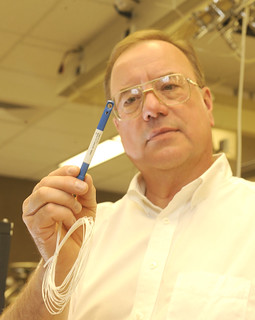
Categories: Energy & the Environment, Engineering
Auburn research team to use USDA grant to strengthen forestry industry in Alabama
The forestry industry generates more than $21 billion in Alabama annually and employs more than 122,000 Alabamians. A team of Auburn University researchers will use a $494,336 grant from USDA's National Institute of Food and Agriculture to create new markets and job opportunities in the industry for the state.
The team, led by Sushil Adhikari of Auburn's Department of Biosytems Engineering, will focus on using Alabama trees and grasses to create new bioproducts that will compete with traditional products totaling nearly $5 billion in annual revenue in North America alone. The team will use the USDA grant to fund a study on using locally grown biomass to replace petroleum-based adhesives and conductive paints.
The study is funded for three years, during which the researchers will move toward finding sustainable and innovative ways to produce new products from plant materials instead of fossil fuels. They will examine different techniques to increase phenol concentration in pyrolysis oil and use pyrolysis oil to produce novalac resins, which will then be used to produce adhesives for producing bio-composites and anticorrosive paints.
"If the project is successful, we will be producing adhesives similar to phenol formaldehyde, currently the main resin used in engineered wood composite products, as well as alternatives to current conductive paint products," Adhikari said. "This would mean we would not have to rely entirely on petroleum-based products."
The only study of its kind in the U.S., it will take place primarily at Auburn University and will involve researchers from the colleges of Agriculture and Engineering, the School of Forestry and Wildlife Sciences and The Ohio State University College of Food, Agricultural and Biological Sciences. The other team members on this project are Maria Auad and Xinyu Zhang from polymer and fiber engineering, Brian Via from the Forest Products Laboratory and Ajay Shah from The Ohio State University.
Adhikari, an associate professor of biosystems engineering and a researcher with the Alabama Agricultural Experiment Station, says the work could help stem worldwide dependence on petroleum while creating a new market for Southeastern forest products.
Funding for the project comes from the National Institute of Food and Agriculture's (NIFA) Agriculture and Food Research Initiative, established in 2008 to fund basic and applied research, education and extension in the food and agricultural sciences.
For more information on the study, contact Adhikari at (334) 844-3543 or sza0016@auburn.edu.
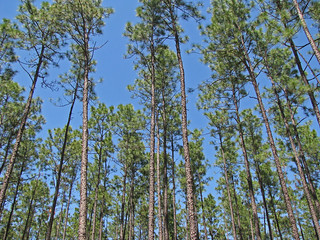
Categories: Energy & the Environment
Auburn University hosting forum: Additive Manufacturing – The Next Industrial Revolution
On July 30, 2015, Auburn University will be hosting a by invitation only forum on industrialized additive manufacturing.
Experts will discuss the application of this advanced technology for industries ranging from aerospace to biotechnology. Industry leaders from GE Aviation, GKN, NASA, Carpenter Technology, Alabama Laser, U.S. Army Aviation and faculty from Auburn University, University of Alabama, UAH and University of Memphis will describe the role their organizations are playing in developing, implementing and utilizing new processes and computer-aided hardware and software to produce components from material and composites once considered exotic.
A keynote address will be given by Greg Morris, the General Manager of Additive Technologies for GE Aviation.
To learn more about this day-long forum and networking reception to follow, or if you are interested in attending, please email forum organizers at auees@auburn.edu.

Categories: Energy & the Environment, Cyber, Health Sciences, Science, Technology, Engineering and Mathematics (STEM), Transportation, Food Systems, Engineering
2016 Auburn University Research Advisory Board Advancement of Research & Scholarship Achievement Award presented to Tatarchuk
At its fall meeting in October, Auburn University’s Research Advisory Board presented Dr. Bruce Tatarchuk, a professor in Auburn’s Department of Chemical Engineering, with the 2016 Research Advisory Board Advancement of Research and Scholarship Achievement Award. The award recognizes Tatarchuk’s innovative research accomplishments spanning a 34-year career at Auburn.
Composed of more than 40 industry professionals from across the country who actively support Auburn’s research efforts, the board established the award in 2014 to recognize significant research and scholarly activity that exemplifies and advances Auburn’s research and scholarship mission. The recipient of the annual award receives a $25,000 grant to further his or her research.
Tatarchuk, director of Auburn’s Center for Microfibrous Materials Manufacturing, was recognized for his impactful work with novel structures of matter that employ micron-diameter fibers to increase thermal and electrical conduction in kinetic processes. He holds 12 U.S. patents, as well as dozens of foreign patents, and his innovations include materials that are used in virtually all commercial aircraft operating in U.S. airspace, battery electrodes for low earth orbit satellites, electrode structures used in hybrid vehicle capacitors, and gas-to-liquid-fuel conversion processes.
“I am pleased that the Research Advisory Board has honored Dr. Tatarchuk with this prestigious award,” said John Mason, Auburn’s vice president for research and economic development. “He has shown throughout his career that the commercialization of high-quality scientific research can benefit society in major ways. This is a well-deserved honor for Dr. Tatarchuk,” Mason added.
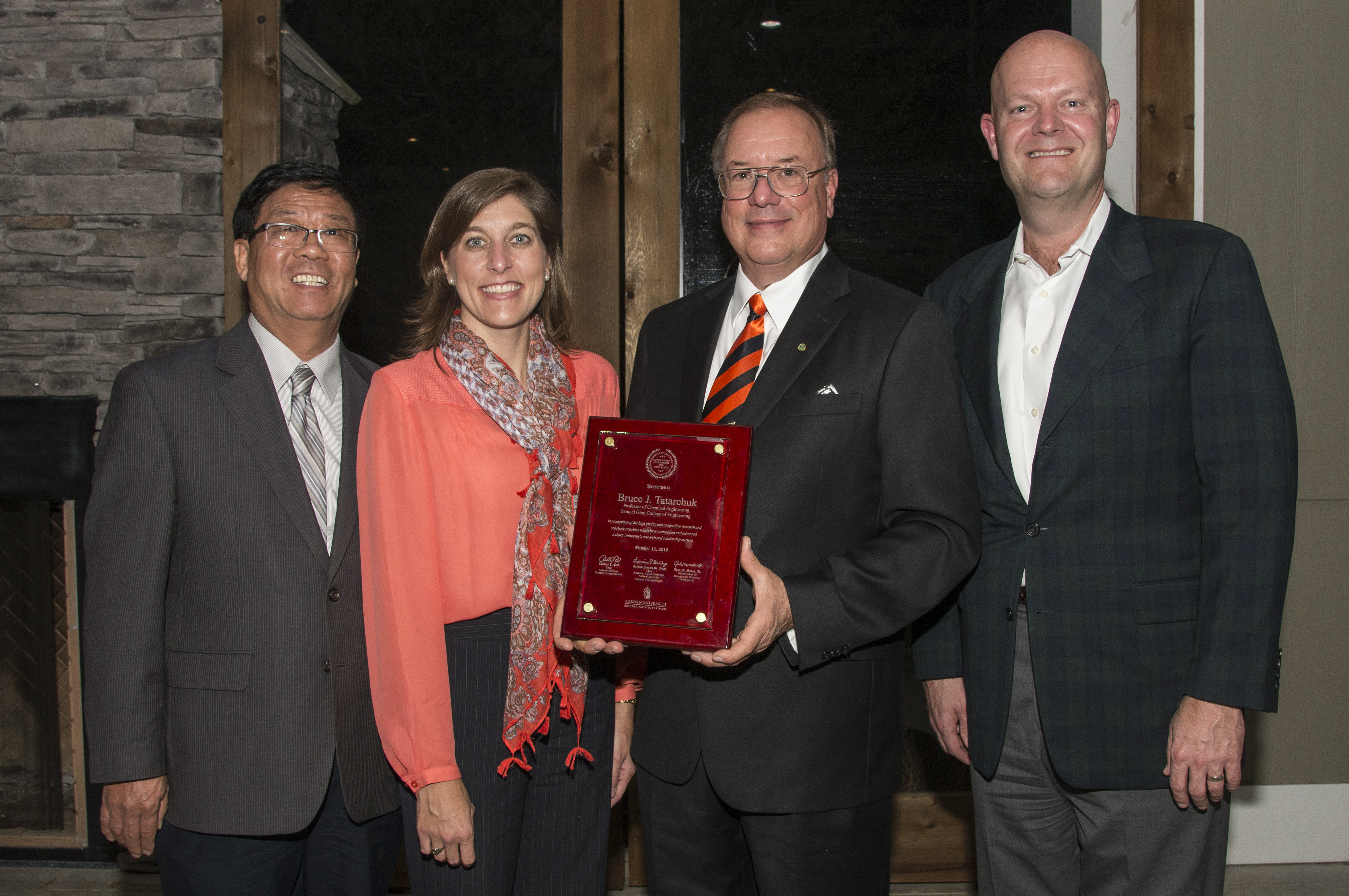
Categories: Energy & the Environment, Science, Technology, Engineering and Mathematics (STEM), Transportation
Sequencing of Catfish Genome Detailed in Nature Communications
The sequencing of the channel catfish genome—considered one of the major milestones in the annals of Auburn University research—has been detailed in an article published in the June 2 issue of Nature Communications, an international multidisciplinary journal.
“This project represents eight years of work, with the collaboration of more than 50 scientists,” said Zhanjiang (John) Liu, associate provost and associate vice president for research at Auburn University and professor in the College of Agriculture’s School of Fisheries, Aquaculture and Aquatic Sciences.
The project is significant for many reasons, Liu said, including the sheer magnitude of the work.
“It is the first catfish genome sequence in the world, and the catfish has approximately 4,100 species,” he said.
The research also is a good model of university and government collaboration, with Auburn leading the project and significant contributions from USDA-ARS in Mississippi, he said.
It also allows scientists who work with catfish to focus their research in other areas and rely on the DNA map provided by the project as a primary resource.
“This resource is now available by simply searching the GenBank, and that saves a tremendous amount of labor for scientists,” said Liu, who has led the catfish genome sequencing project since its inception.
The research actually included the sequencing of three fish genomes—a channel catfish and two South American scaled catfish species.
“This allowed us to compare scaled fish versus non-scaled fish to determine which genes are responsible for the loss of scales from channel catfish,” Liu said. “That is very important in terms of basic biology. But more importantly, the whole genome sequence will allow us to do very efficient genetic selection using molecular genomic information for aquaculture.”
The project is important to the future economic health of the U.S. catfish industry because every trait is controlled by the genome, he said.
“Whether we are talking about growth rate, disease resistance, low-oxygen tolerance or feed conversion efficiency, all of those traits are coded in the genome,” Liu said. “When we have the whole genome sequence, then we can use it as a template to determine the genomic locations for genes that control performance traits and then select for fish with good genes”
Top-performing breeds are essential, he said, if the catfish industry in Alabama and nationwide is to remain economically viable in the face of soaring feed, energy and fuels costs, low farm-gate prices and increased competition from overseas imports.
Genetics, Liu said, is the most important element in fish production.
“For example, if you have a disease-resistant fish, then you don’t have to worry about antibiotics and other treatments,” he said. “Among all approaches, genetics is perhaps the most effective at fixing a problem, whether it is to make the fish grow faster, make it resistant to diseases, or make it tolerant to low oxygen. If we understand the genome and the genes responsible for those traits, we can provide very effective selection for the industry.”
Applying genome mapping to the catfish breeding process is very close to becoming a reality, he said.
“We now know which markers designate a fish as a male or female, and similarly, by using molecular markers for other traits, we can determine if the fish is good for other traits. It will take additional work, and we’re not ready yet, but based on the genome information we now have, we can rapidly map where the genomic regions are located that control various traits.”
He believes genome mapping will enable the breeding of a “super fish” that will possess the most desirable traits.
“It requires a lot of collaboration between the research community and the industry, but if we all work together, we’ll see major progress toward the practical application of this research in the next three to five years,” Liu said.
While work is completed for the genome sequencing of the channel catfish, it continues on the blue catfish.
“The catfish industry is now dominated by channel catfish/blue catfish hybrids,” Liu said. “We should be finishing this genome within the next year.”
The Nature Communications article can be viewed at http://www.nature.com/ncomms/2016/160602/ncomms11757/full/ncomms11757.html
by PAUL HOLLIS
Categories: Energy & the Environment, Auburn In the News
SFWS Professor Lisa Samuelson Receives USDA-NIFA Partnership Award
Auburn University School of Forestry and Wildlife Sciences Alumni Professor & Dwain G. Luce Professor of Forestry, Lisa Samuelson, was recently selected as part of a multi-university and agency research consortium, the Pine Integrated Network: Education, Mitigation and Adaptation Project (PINEMAP), to receive the USDA National Institute of Food and Agriculture (NIFA) Partnership Award.
The NIFA Partnership Award recognizes outstanding contributions of land-grant universities and other cooperating institutions and organizations. The PINEMAP Team has been selected to receive the NIFA Partnership Award for mission integration of research, education, or extension.
PINEMAP integrates research, extension, and education to enable southern pine landowners to manage forests to increase carbon sequestration; increase efficiency of nitrogen and other fertilizer inputs; and adapt forest management approaches to increase forest resilience and sustainability under variable climates.
PINEMAP collaborators include 10 universities (Alcorn State, Auburn, Georgia, Mississippi State, North Carolina A&T, North Carolina State, Oklahoma State, Texas A&M, Virginia State and Virginia Tech), eight forest-science research cooperatives (or “co-ops”), and the U.S. Forest Service.
The University of Florida-based consortium, established in 2011, includes 59 principal investigators, 27 research and technical staff, 10 postdoctoral associates and 64 graduate students. Samuelson serves on the team’s executive committee.
PINEMAP is recognized for its work to assess the impacts of climate change to the planted pine industry, one of the most economically and environmentally important crops in the Southeastern U.S., with 20 million acres under cultivation.
The team was recognized at the annual NIFA Day of Appreciation on October 6, 2016, at the NIFA awards ceremony in Washington, D.C.
For more information about PINEMAP, visit http://pinemap.org/
by JAMIE ANDERSON

Categories: Energy & the Environment
Two Auburn professors honored with faculty enhancement awards from Oak Ridge Associated Universities consortium
A pair of researchers from Auburn University—Majid Beidaghi, assistant professor of mechanical and materials engineering, and Bridgett King, assistant professor of political science—have been named recipients of the 2017 Ralph E. Powe Junior Faculty Enhancement Awards, given annually by the Oak Ridge Associated Universities consortium, or ORAU.
The awards are intended to provide seed funding and enhance the research and professional growth of junior faculty at ORAU member institutions. Each winner receives a one-year, $5,000 research grant from ORAU, which is matched by the faculty member’s institution.
"It is a great achievement for Auburn University to receive two Ralph E. Powe Junior Faculty Enhancement Awards from ORAU," said John Mason, Auburn’s vice president for research and economic development. "It speaks very highly of Dr. King and Dr. Beidaghi and their promising research programs that ORAU has selected them for this honor."
Beidaghi, who came to Auburn in 2015, conducts research on the synthesis of advanced materials and the development of devices for energy storage applications. For his Powe Award project, Beidaghi will collaborate with researchers from the Oak Ridge National Laboratory to examine potential cathode materials for aluminum batteries, which show promise as an alternative to the traditional lithium-ion batteries used in many portable electronic devices.
King, who joined Auburn’s faculty in 2014, will work with colleagues from the University of Kentucky to study the impact of felony disenfranchisement laws and policy on community voter turnout among citizens who are still legally able to vote. The team will utilize geographic information system technology in combination with data on felony convictions, precinct-specific election data and information from the U.S. Census for a comprehensive precinct-level analysis.
by JONATHAN CULLUM
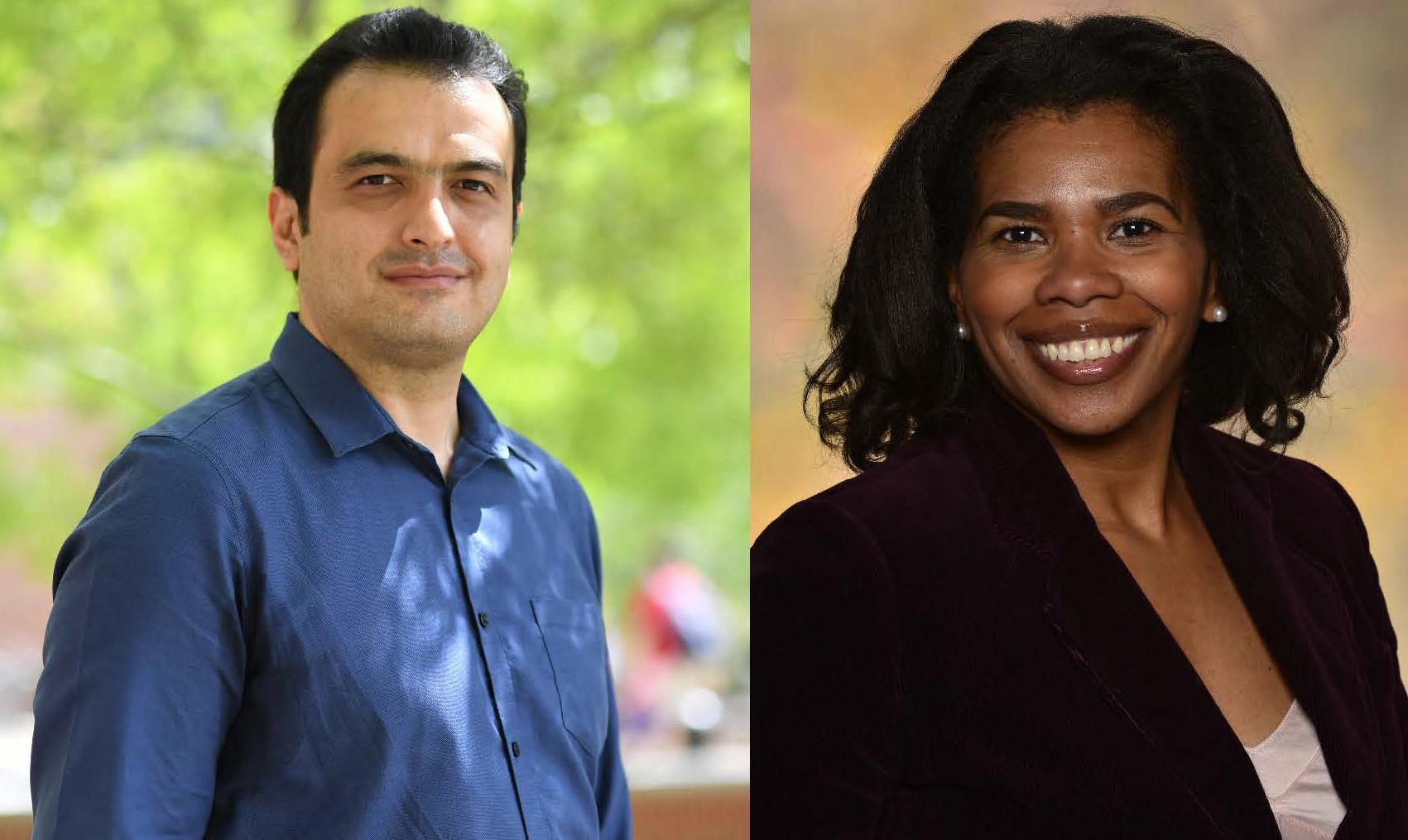
Majid Beidaghi, assistant professor of mechanical and materials engineering, and Bridgett King, assistant professor of political science, are recipients of the 2017 Ralph E. Powe Junior Faculty Enhancement Award, given annually by the Oak Ridge Associated Universities consortium.
Categories: Energy & the Environment, Engineering
Auburn researchers compare heat produced by large and small urban areas
Scientists have long understood the effect large urban areas like New York City or Atlanta have on temperature – these mega cities are warmer than nearby rural locations due to increased energy usage, the enormous presence of heat-absorbing impervious surfaces like concrete, steel and asphalt, and dwindling green spaces. Scientists refer to these heat-producing urban centers as "urban heat islands." What is less understood is whether smaller urban areas create the same urban heat island effect.
In an effort to shed light on the heat-causing potential of small to mid-sized cities, Chandana Mitra, assistant professor in Auburn University's Department of Geosciences, recently completed a study on whether the Auburn-Opelika and Birmingham areas create enough excess heat to be considered urban heat islands.
"In 2008 we crossed the line between urban and rural, and we now have more people living in urban areas than rural areas," said Mitra. "Urbanization is happening rapidly; it's a global phenomenon. The United Nations forecasts that over 70 percent of the world's population will be living in urban areas by 2050, which is why it is imperative we gather information on how urban heat islands affect local climate change and how we can lessen human discomfort."
Mitra and Andy Hug, a 2014 geography master's graduate and geographic information system specialist for the Georgia-Alabama Land Trust, used 40 iButtons–highly accurate, small digital thermometers that store data–to measure temperature differences in rural and urban locations throughout Birmingham, Opelika and Auburn. They placed 20 iButtons in downtown Birmingham and surrounding rural areas and 20 iButtons in the Auburn-Opelika area including Tiger Town, The Hotel at Auburn University and Dixon Conference Center, Samford Park and various rural locations.
Temperatures were gauged from March 1 to August 31, 2014, and data was then analyzed. They discovered in the Auburn-Opelika area an average 4.39 degree Fahrenheit heat intensity difference between urban and rural areas during the day. Birmingham had an average 3.84 degree Fahrenheit daytime heat intensity difference.
"The reason Birmingham's heat intensity difference was smaller is due to the height/width ratio of the buildings in the Auburn-Opelika area versus Birmingham," explained Mitra. "Downtown Birmingham buildings are taller and the gap between buildings is less, which means there is more shade. In the Auburn-Opelika area there are not many tall buildings and there is a larger space between buildings, which means there is less shade. As a result, during the day the difference in average temperature between rural and urban areas is greater in Auburn-Opelika than it is in Birmingham.
"However, at night the reverse happens. The temperature difference between the urban and rural areas is less in the Auburn-Opelika area because the tall buildings and increased impervious surfaces in downtown Birmingham absorb more heat which is released at night."
Mitra also looked at heat intensity differences during two heat waves.
"There were two high heat spells during our study that occurred continuously for three days. One was from Aug. 6-8 and the other was Aug. 21-23. During these timeframes, the average daytime temperature difference between urban and rural areas in Birmingham was about 11 degrees Fahrenheit. At night it was about 9 degrees Fahrenheit. The Auburn-Opelika average daytime temperature difference between rural and urban areas was 18.92 degrees Fahrenheit, and the nighttime difference was about 7 degrees Fahrenheit."
Mitra notes these numbers are significant because they could spell danger for the most vulnerable members of society, including the elderly, children and those who work outdoors.
"Those living and working in areas that are nearly 10 or more degrees hotter than the high temperature for the day are at a higher risk for emergency health situations," said Mitra. "We can mitigate the effects of urban heat islands by promoting more green space, incorporating verdant rooftops or white rooftops. We can use less energy by adopting solar panels and rainwater catching techniques. All of this contributes to a much cooler, sustainable community and a resilient one, too."
Mitra is working with geography master's student Austin Bush to expand on the results of the urban heat island project. Bush assisted as an undergraduate student at Auburn with the initial study, and he conducted an independent research project in summer 2015 which further verified the results gathered by Mitra and Hug. Now, for his master's thesis project, Bush is developing urban sustainability maps for the cities of Auburn and Opelika. An urban sustainability map provides multiple layers of information including topography, average precipitation, average temperature, where extreme weather most frequently occurs and socioeconomic data such as where people live according to age and average economic status.
Bush will work with Mitra to gather data by utilizing Geographic Information System, or GIS, technology, as well as T-LiDAR equipment. A T-LiDAR is a tripod-mounted laser scanner, also known as terrestrial light detection and ranging, that sends out a laser that scans anything within range and produces a three-dimensional replica.
"We will also evaluate which rooftops have the greatest potential for harvesting rainwater and which locations would benefit from using solar panels, and we will evaluate the cost versus savings for both," said Bush. "The maps will show us where people are most vulnerable, which part of the city is most comfortable, and can serve to inform future planning decisions. The ultimate goal is for a person to simply type in their address on a website and receive information about and suggestions for their location."
For more information on Mitra, visit her website at www.auburn.edu/cosam/mitra.
Categories: Energy & the Environment
Auburn University featured in IEP Case Study Library
At the beginning of July, the Innovation and Economic Prosperity Universities Program, part of the Association of Public and Land-Grant Universities, created an IEP Case Study Library that allows interested parties to learn about and from designee economic development projects provided in awards submissions. As both a designee and an award winner in the "Place" category, Auburn University's case studies are currently featured there. Case studies include information on the Rural Studio, the National Poultry Technology Center, and the Off-Bottom Oyster Farming efforts at the Auburn University Shellfish Lab. To learn more, visit the IEP Case Study Library.
Categories: Energy & the Environment, Food Systems, Auburn In the News
Auburn-led pioneering study in 'Nature' reveals human-induced greenhouse gas emissions from the land biosphere contribute to climate change
An Auburn University professor says human-induced methane and nitrous oxide gas emissions overwhelm terrestrial carbon dioxide uptake—contributing to climate change—and thus should be reduced to alleviate the problem, according to a study published in the March 10 issue of the scientific journal, Nature.
Hanqin Tian, director of the International Center for Climate and Global Change Research in Auburn's School of Forestry and Wildlife Sciences, is the lead author of "The terrestrial biosphere as a net source of greenhouse gases to the atmosphere." His Auburn colleagues, Assistant Professor Shufen Pan, research fellow Jia Yang, graduate student Bowen Zhang and former research fellow Chaoqun Lu, now an assistant professor at Iowa State University, served as co-authors among an international research team of 23 scientists from 16 institutions in four countries.
Nature is widely regarded as the world's most highly cited interdisciplinary science journal.
"This study for the first time, to the best of our knowledge, examined the net balance of three major greenhouse gases of carbon dioxide, methane and nitrous oxide in the land biosphere and the contribution of human activities during the past three decades," said Tian, who serves as the Solon and Martha Dixon Professor and Alumni Professor at Auburn.
The terrestrial biosphere plays a critical role in the global carbon cycle and is commonly recognized as a carbon sink, which means to sequester atmospheric carbon dioxide and hence mitigate climate change. But the human transformation of the land biosphere also caused a large amount of methane and nitrous oxide emissions. From both science and climate policy perspectives, he says it is of critical important to concurrently estimate the overall balance of the three major greenhouse gases in the land biosphere.
"The global warming potential of methane and nitrous oxide are 28 and 265 times larger than that of carbon dioxide, respectively," Tian said. "We analyzed and synthesized the state-of-the-art estimates of biogenic fluxes of these three gases at global and regional scales to better understand the climate-ecosystem feedback and effectively mitigate climate change. The net balance of human-induced greenhouse gases could to some extent reflect the role of the land biosphere in shaping the climate system."
The researchers found that the cumulative warming capacity of concurrent methane and nitrous oxide emissions is a factor of about two times larger than the cooling effect of the global land carbon dioxide uptake, based on the global warming potential on a 100-year time horizon.
"This finding reveals for the first time that human activities have transformed the land biosphere to act as a contributor to climate change," Tian said.
The study also finds that human-caused biogenic fluxes of these gases in Southern Asia, a region including China and India, led to a larger net climate warming effect, compared to other regions. A major source of human-caused methane emission comes from rice cultivation and livestock, while a major source of nitrous oxide is from the use of manmade fertilizers.
Co-author Anna Michalak of Carnegie Institution for Science in Stanford, California, said, "Here we bring together information from dozens of sources to show that human actions, on a global scale, have caused the world's plants, animals and microbes to contribute to global warming."
Tian added, "We suggest that adoption of best practices by policymakers and landowners to reduce greenhouse emissions from human-impacted land ecosystems could reverse the biosphere's current warming role."
Fellow co-authors echo the impact of the research results.
"This study is an excellent example of science in the service of society," said Jerry Melillo, who serves as chairman of the U.S. National Climate Assessment committee and holds the rank of distinguished scientist at the Marine Biological Laboratory in Woods Hole, Massachusetts. "Its rigorous analysis of the fluxes between the land and the atmosphere of three major heat-trapping gases does two things. It highlights the role of land management across the globe in driving climate change and it identifies land-management actions that can become part of a climate mitigation strategy."
"This study is the first-ever global synthesis of emissions and sinks for each region of the globe, and the three main greenhouse gases affecting climate change," said Philippe Ciais, who serves as convening lead author for the fifth assessment report of the Intergovernmental Panel on Climate Change, or IPCC, and associate director of the Laboratoire des Sciences du Climat et de l'Environnement in France. "Its strength is that the greenhouse gas fluxes estimates from ecosystem models are verified by independent atmospheric concentration measurements in atmospheric inversion."
Josep Canadell, executive director of the Global Carbon Project in Australia, added, "The results are a big wake-up call for the global climate community that show the way we are managing our lands is not sustainable and not consistent with stabilizing the climate at low temperature scenarios. How we manage the global lands needs to become a central part in our strategy to mitigate global warming."
The article is available on the Nature website, http://www.nature.com/. More information about Auburn University's International Center for Climate and Global Change Research is available online at http://wp.auburn.edu/cgc.
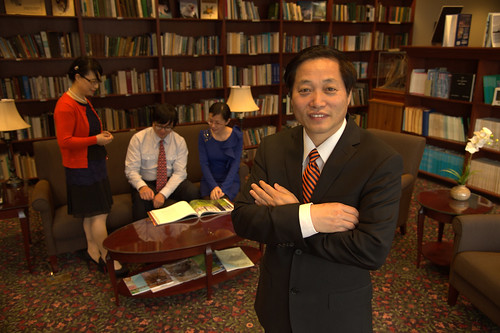
Categories: Energy & the Environment, Auburn In the News
Auburn's eagles participating in Colorado wind technology research to help prevent bird strikes
The Auburn University eagles, trainers and a veterinarian are in the Colorado Rockies, participating in research to help the U.S. Department of Energy's National Renewable Energy Laboratory develop a radar system to prevent bird strikes in wind turbines.
Golden eagle Nova (War Eagle VII) and bald eagle Spirit are participating in strategic flights at the National Wind Technology Center at the Colorado laboratory along with Southeastern Raptor Center trainers Marianne Hudson and Andrew Hopkins and avian veterinarian Dr. Seth Oster, an assistant clinical professor in Auburn's College of Veterinary Medicine.
Bird collisions with wind turbine blades are uncommon, but since birds can fly at the height of the huge blades, anything that can be done to protect them is important. Golden eagles, protected under federal law, are among the large birds that could interact with wind turbines.
"These eagles are an important part of the Auburn Family and have given much joy to game day fans and participants in our local educational presentations," said Hudson, assistant director of education and raptor training at the Southeastern Raptor Center. "This is an opportunity for these birds to potentially make an even bigger impact by providing data that may save the lives of their wild brethren worldwide."
While participating in the research, both of Auburn's eagles will wear sophisticated GPS tracking and logging devices as they do each time they fly in Jordan-Hare Stadium, which will provide constant monitoring of their location.
In 2009, the National Renewable Energy Laboratory partnered with Laufer Wind to test the company's Aircraft Detection System, a radar-based system designed to detect nearby planes and automatically switch on and off aviation warning lights on the turbines to forewarn pilots. That capability is important because otherwise the lights have to be on all the time after dark, which creates a visual nuisance to surrounding communities, impedes wind development and negatively impacts wildlife.
After success with that system, researchers from Laufer Wind and the laboratory turned their attention to testing the radar system's capabilities to detect birds, said Ismael Mendoza, who at the time was laboratory's project leader. The alternative -- mandated in many places – is to station a person at the wind power plant 24 hours a day, seven days a week, to watch for birds.
Laufer Wind was able to join in research being conducted by the University of Colorado, which has permission from the Federal Aviation Administration to fly drones at the National Wind Technology Center. As the radar scans 360 degrees, it picks up the drone in a small slice of that circle. The radar can use detections from each rotation to track the drone. Since those early drone flights, the research shifted to using live birds with GPS loggers to directly test the avian detection systems.
"They're looking for a needle in a haystack," Roadman said. "The radars process a gigabyte of data every minute; the trick is to discern the bytes of data that represent the bird. Learning the size, speed and flight characteristics of the eagle helps the radar determine what is and isn't a bird."
The aim is to detect birds soon enough so an alert can be sent to the wind power plant operator in time to shut down the blades.
Unlike the radar technology, IdentiFlight is a visual eagle detection system. Renewable Energy Systems, a leading wind developer and constructor, along with Boulder Imaging, machine vision experts, have developed a system of cameras that detects raptors at up to 1,000 meters – or 0.62 miles – from a wind turbine. At this distance, there is time to determine with certainty the identity of the eagle in time for the wind turbine to come to a slow stop and protect the eagle from collision with the rotating blades.
"As a nation, we need more sources of clean energy, such as wind power. Providing technologies enable wind energy projects and wildlife co-exist is how IdentiFlight came to be," said Tom Hiester, president of IdentiFlight. "Through the test with Auburn University, we can further understand eagles and build on our computer algorithms that use size, shape, color and flight characteristics to identify species of concern."
By Janet McCoy

Categories: Energy & the Environment
Auburn researchers using unmanned aircraft to assess crop health
The agriculture industry has seen many advances in farming over the decades, from mule and plow to high tech tractors and equipment—and now unmanned aircraft systems, or UAS. Auburn University precision agriculture researchers are using the aircraft to monitor crop health over large acreages; it's a method that lets farmers quickly address potential trouble spots.
"Precision agriculture techniques enable the producer to apply things like fertilizer and herbicide only where they are needed, which helps increase yields and profits for agribusiness," said Steve Taylor, head of Auburn's Department of Biosystems Engineering. "These tools are having a major impact in many areas, not only for agricultural crops but also for better management of our forests."
The unmanned aircraft systems, or drones, are programmed to fly over a specific agricultural area and capture digital images and data with various types of cameras or sensors. After the flight, researchers download the data onto a computer so they can see potential trouble spots, such as moisture stress in plants, diseases that might be developing or a nutrition issue. The data is transferred into GPS-guided ground equipment that can deliver resources—water, pesticides and fertilizer—precisely where they are needed.
"It's a platform to carry a sensor to let us collect information much more rapidly," Taylor said. "The farmer or another UAS provider can come to the field today and collect information, download it to the computer this afternoon and have that data. Within a few hours, we can be back in the field taking action to remedy the problems uncovered by the UAS."
Auburn is conducting much of its research at E.V. Smith Research Center near Tallassee and at other Auburn research stations across the state and for individual farmers.
Research engineer Christian Brodbeck says the Department of Biosystems Engineering works closely with the university's Aviation Center to obtain FAA authorization to fly in specific areas and at certain altitudes.
Auburn's Aviation Center has FAA authorization to fly anywhere in the state below 200 feet for education and data collection activities. Biosystems Engineering recently received a Certificate of Authorization, or COA, from the FAA to allow detailed research flights at the E.V. Smith Research Center at altitudes up to 400 feet high.
"This higher altitude allows us to cover more ground during a flight or reduces our flight time for a given field," Brodbeck said. "We have applied for another COA to fly anywhere in the state at these altitudes to expand our research capabilities."
He says Auburn's fixed-wing drones have extended flight times, in varying wind conditions, while their rotary-wing drones can fly about 15 minutes. The cost of research drones is substantially higher than hobby models, ranging from $30,000 to $50,000, but as with most electronic equipment, the price is expected to go down. The advantage of the professional models is the advanced software, longer flight times and more powerful cameras and sensors, according to Brodbeck.
Greg Pate, director of E.V. Smith Research Center, added, "If we have the data quickly back from processing then we can make adjustments to the crop as we need to. We can get the right product at the right rate in the right place at the right time. And time is critical."
In 2015 Auburn received the nation's first FAA approval to operate a new Unmanned Aircraft Systems Flight School as part of its Aviation Center. Training is conducted by the Aviation Center for Auburn students and faculty, members of public agencies and the general public.
The university has been involved in aviation education for more than 80 years and has been providing flight training for pilots for nearly 75 years. Auburn offers three aviation/aerospace degrees: aviation management, professional flight management and aerospace engineering.
More information is available on the Auburn University Aviation Center website at http://www.auburn.edu/aviationcenter.
By Charles Martin
Categories: Energy & the Environment, Engineering
Inaugural Auburn University Research Advisory Board Advancement of Research and Scholarship Achievement Award presented to Dr. Geoffrey Hill
In September, at the recent, “This is Research: Faculty Symposium” Dr. Geoffrey Hill, a professor in Auburn’s Department of Biological Sciences, was presented with the inaugural Research Advisory Board Advancement of Research and Scholarship Achievement Award in recognition of the significant accomplishments and innovative research that span his 22 year career at Auburn.
The Auburn University Research Advisory Board is a group of more than 40 industry professionals from across the country who actively support Auburn’s efforts to grow a fully-robust research and scholarship culture in which faculty discover new knowledge, support economic development, and enrich the lives of others. In the Spring of 2014, the board created an award to recognize high quality, competitive research and scholarly activity that exemplifies and advances Auburn’s research and scholarship mission. The Research Advisory Board Advancement of Research and Scholarship Achievement Award is recognized as Auburn’s most prestigious research award.
Through the Research Advisory Board’s Academic Affairs Committee and the efforts of its Chair, Dr. Lori St. Onge, a process was established whereby Auburn faculty could describe their research activity and compete for an annual $25,000 grant to be used to further their research efforts. Submissions were accepted during the Fall of 2014 and formed the basis for a multi-phase review process. The review committee sought to identify a faculty member who had distinguished him or herself through activity which served to advance Auburn’s research and scholarship mission, and who had significantly impacted his or her field of study with extraordinary scholarship and/or notable research findings.
Research Advisory Board members were impressed with each applicant, but particularly with noted ornithologist, Dr. Geoff Hill whose achievements include a distinguished record of publication in top international journals, publication of five books with leading science publishers, 17 continuous years of extramural funding, a top executive position at the National Science Foundation and the development of a preliminary patent for a valuable new biochemical process for producing a valuable carotenoid (organic) pigment. Dr. Hill is among the most cited and published ornithologists and behavioral ecologists in the world, and was recently recognized with the 2014 Brewster Award for lifetime achievement in ornithology, the world’s highest honor for an ornithologist.
“I am grateful to the Research Advisory Board for their support and pleased that they chose to honor Dr. Hill with this significant award,” Auburn’s Vice President for Research and Economic Development John Mason said. “His efforts exemplify the high quality, competitive research and scholarly activity that increases understanding, provides solutions, and improves lives at home and around the world.”
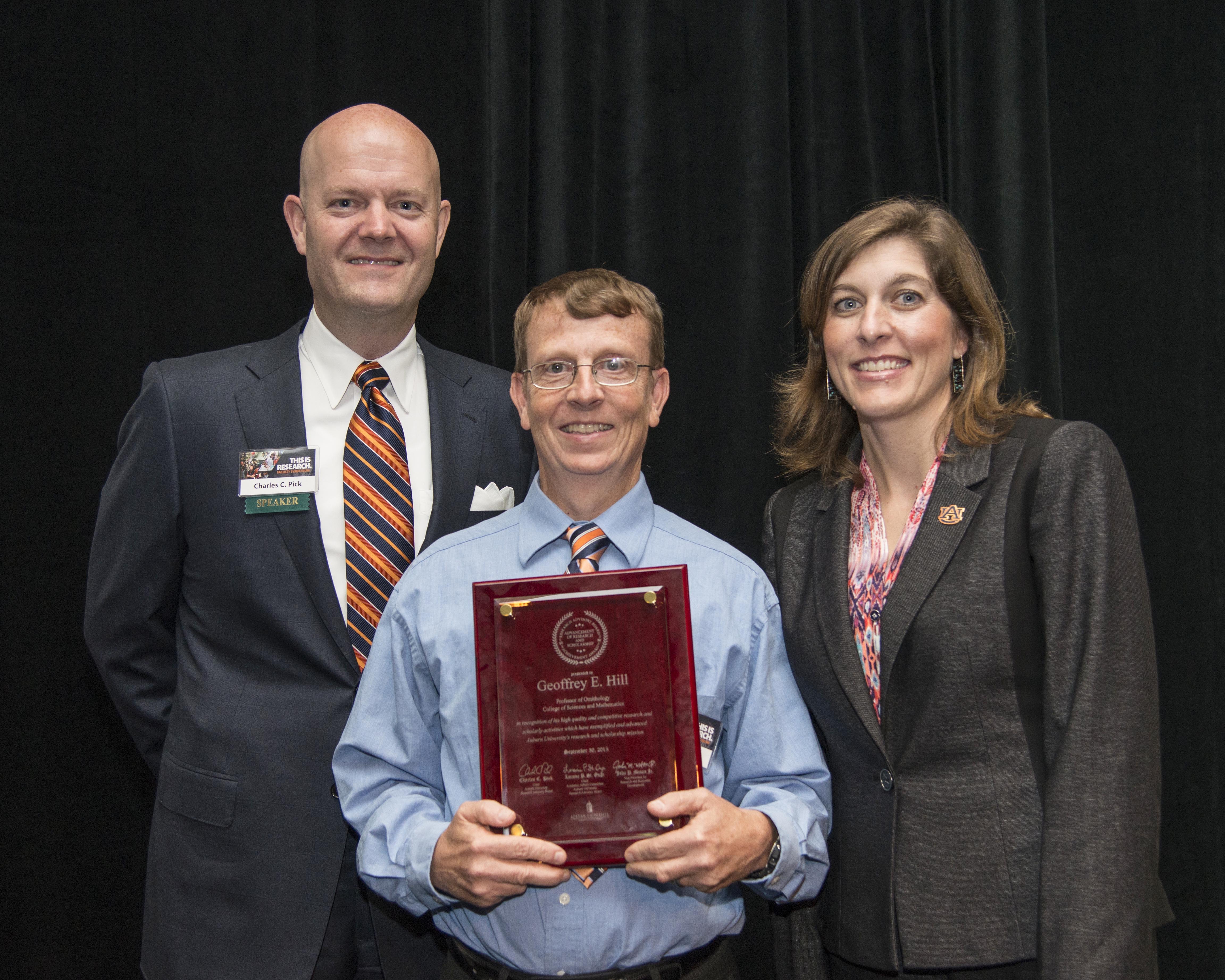
Categories: Energy & the Environment
Experts at Auburn University say biosecurity is crucial tool in battle against avian influenza
While avian influenza has been confirmed in 20 states, Alabama remains free of the disease and Alabama poultry producers are doing all that they can to keep the disease at bay.
A poultry scientist with the Alabama Cooperative Extension System said poultry producers are more vigilant than ever when it comes to sanitation and other biosecurity measures.
"All our Alabama poultry growers have biosecurity measures in place," said Ken Macklin. "Biosecurity measures are the first line of defense against avian influenza and other poultry diseases."
Macklin said that more than 43 million chickens and turkeys have either died from the disease or had to be euthanized because the flock tested positive for a highly contagious form of avian influenza in the first five months of 2015. The most severely impacted states are in the upper Midwest, including Iowa, Minnesota, South Dakota and Wisconsin.
"These cases in commercial poultry operations in the upper Midwest have mostly been linked to a failure of biosecurity," said Macklin. "Growers may have thought they were following biosecurity guidelines fully, but it seems that there were lapses."
Macklin, who is also an associate professor of poultry science at Auburn University, said strong biosecurity measures take many forms.
- Isolating the birds from other animals
- Minimizing access to people and unsanitized equipment
- Keeping the area around the poultry buildings clean and uninviting to wild birds
- Sanitizing the facility between flocks
- Cleaning equipment entering and leaving the farm
- Having an all in, all out policy regarding the placement and removal of the birds
- Disposing properly of bedding material and any mortalities
Joseph Giambrone, an Auburn University professor of poultry science, called the losses to the national poultry industry staggering.
"The losses are in the hundreds of millions of dollars," said Giambrone. "We can expect a reduction of at least 10 percent in egg laying production and a similar drop in turkey production nationally."
Macklin said the potential production loss is why Alabama producers are working hard to keep their flocks free of the disease. According to Auburn University research done in 2012, poultry and egg production and processing contributed more than $15 billion to the state's economy and employed more than 86,000 people.
Giambrone, whose research focuses on viral diseases of poultry, said the disease is spread by migrating water fowl such as ducks and geese.
"This outbreak began in Canada, and water fowl spread it south along the migratory bird flyways," he said. "It was brought into the Midwest by birds using the Mississippi flyway. It has persisted so long there because of the heavy concentration of poultry producers in that region of the country."
Giambrone said ducks and geese shed the virus in fecal material.
"Infected water fowl shed the virus into ponds and lakes as well as onto the land they are grazing."
Macklin said that warmer weather may slow the disease's spread.
"The virus can survive for days, especially if it is in water. In water, the virus can survive up to 100 days with a water temperature of 63 degrees Fahrenheit. But when water temperatures reach the 80s, the virus can survive for less than a month."
He said the virus has a reduced ability to survive on land.
"On land, the virus can survive for 30 days at 40 degrees Fahrenheit and 7 days at 68 degrees Fahrenheit," said Macklin. "Once the outside temperature hits the 80s the virus breaks down in hours."
While warmer weather may halt the disease's progress in the United States, Giambrone emphasized that the disease can return next year.
"Even if we get control of the disease this year, wild water fowl in Alaska and Canada remain carriers of the disease and are a threat to bring it back to the United States when they migrate again next year."
By Maggie Lawrence

Categories: Energy & the Environment, Health Sciences, Food Systems, Security
Auburn senior receives Udall Scholarship for Excellence in National Environmental Policy
Arthur “Joe” Jenkins, a senior from Madison, Alabama with majors in zoology and mechanical engineering, has been awarded a 2015 Morris K. and Stewart L. Udall Scholarship for Excellence in National Environmental Policy, becoming one of 48 Udall Scholarship recipients nationwide and the only recipient from Alabama.
Udall Scholars are selected on the basis of commitment to careers in the environment, leadership potential and academic achievement. Jenkins has devoted his personal and professional life to becoming a leader in combating environmental crises in Alabama . For the past two years, he has conducted year-round funded research for the Alabama Natural Heritage Program at Auburn University and the U.S. Forest Service on two of Alabama’s endemic and endangered species, the flattened musk turtle (Sterno-therus depressus) and the Black Warrior waterdog (Necturus alabamenis) in the Bankhead National Forest.
Additional information about Jenkins' research and about the Udall Scholarship can be found in this article from the Opelika Auburn News: http://www.oanow.com/news/auburnuniversity/article_18f511b2-f52a-11e4-9ca9-a7c18546989f.html
Categories: Energy & the Environment



